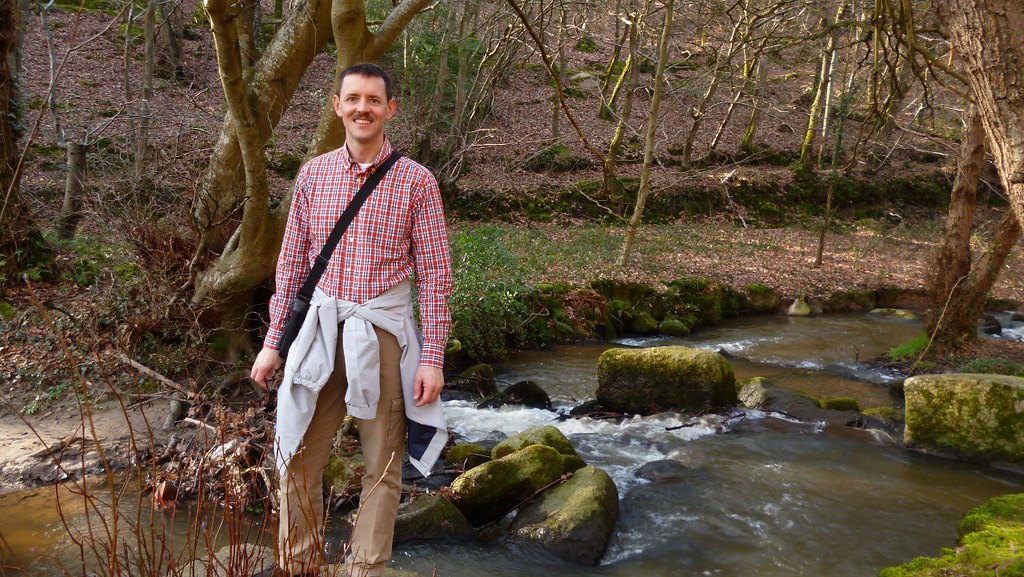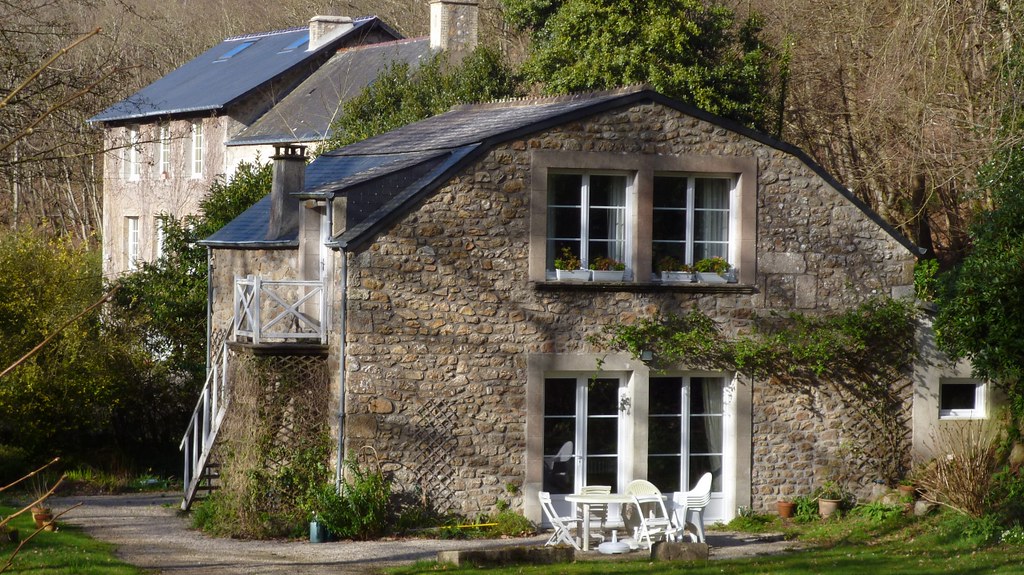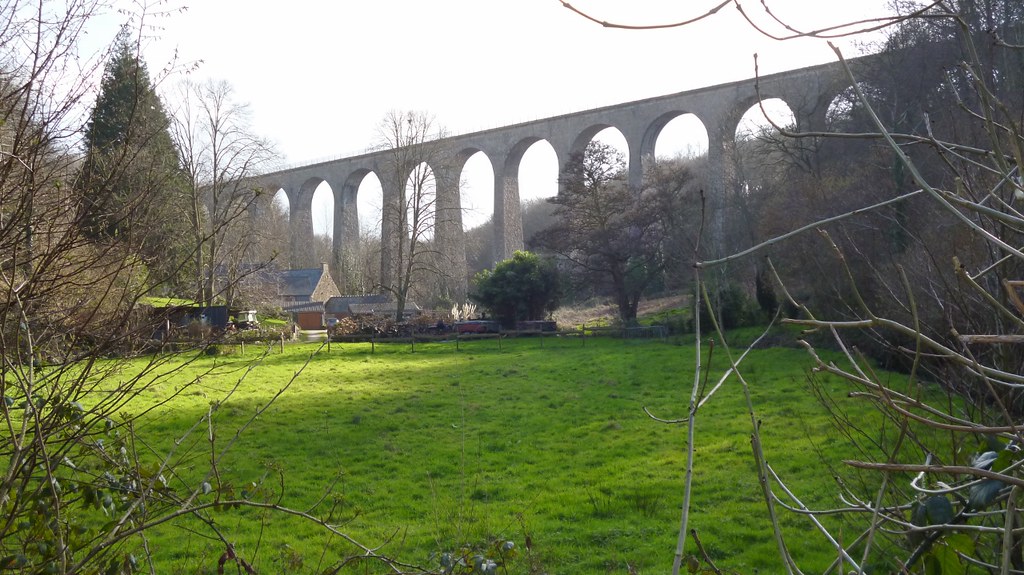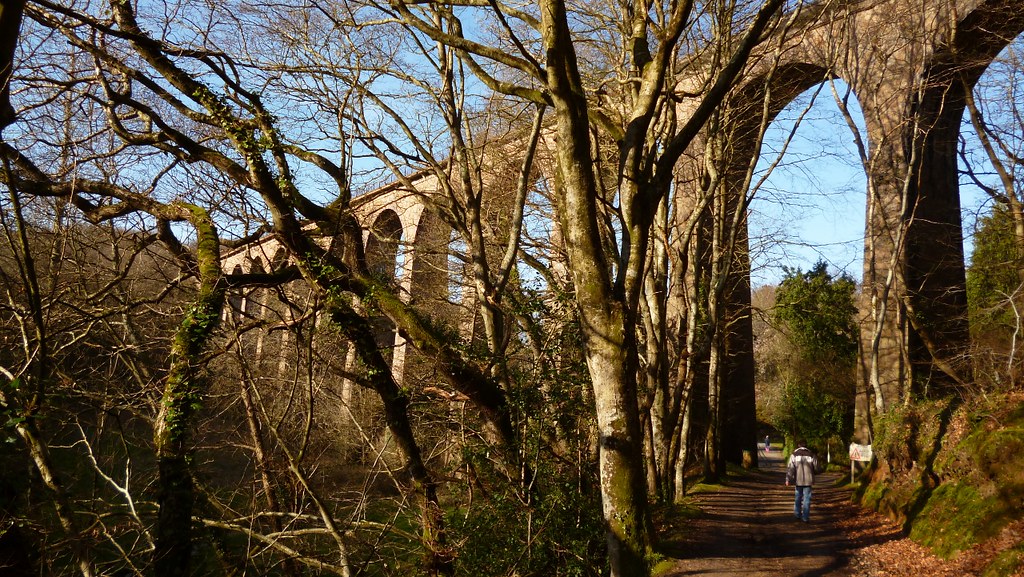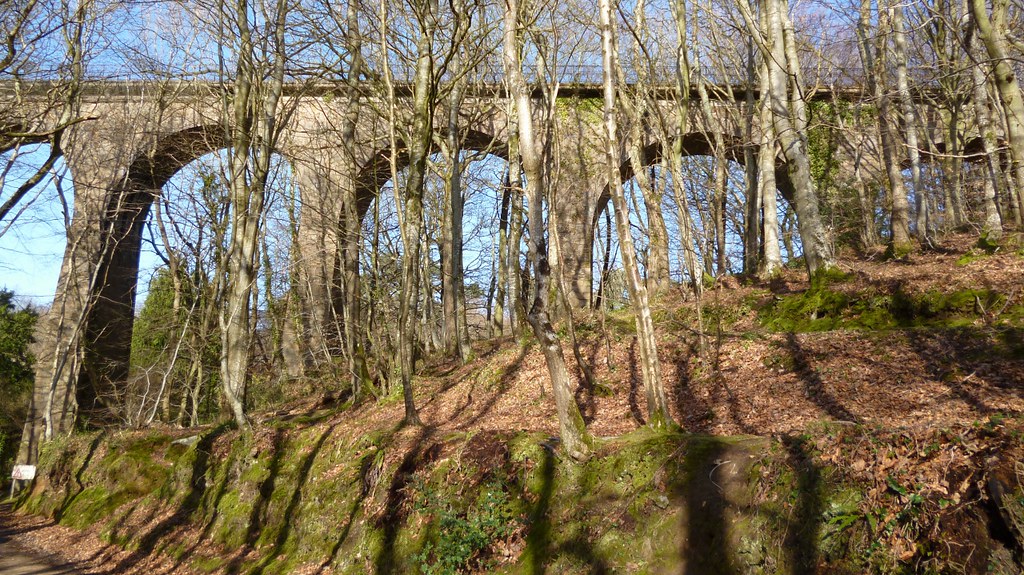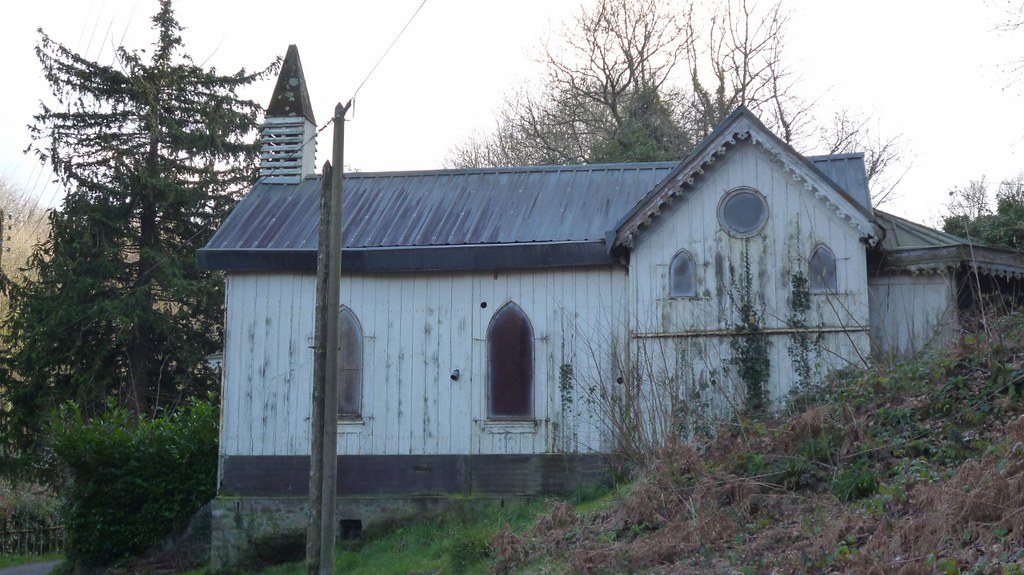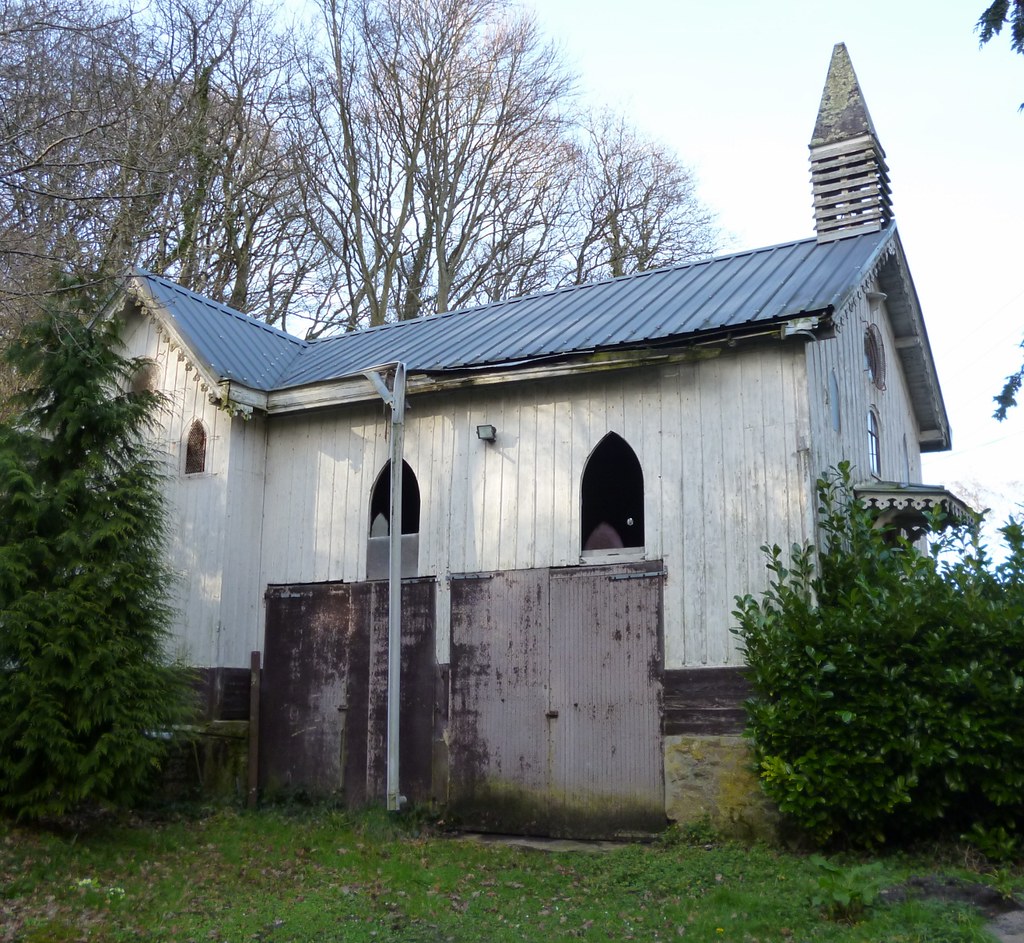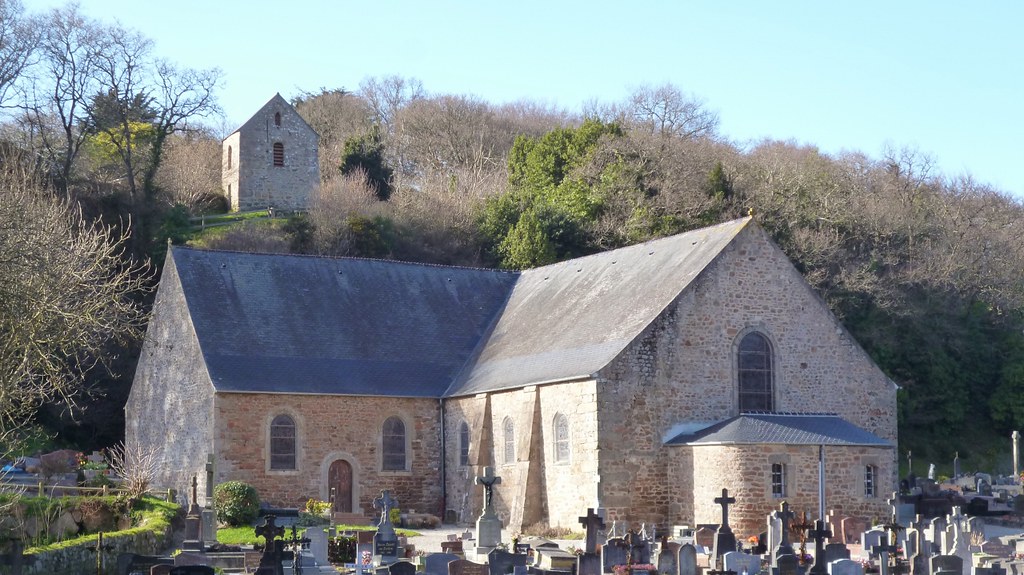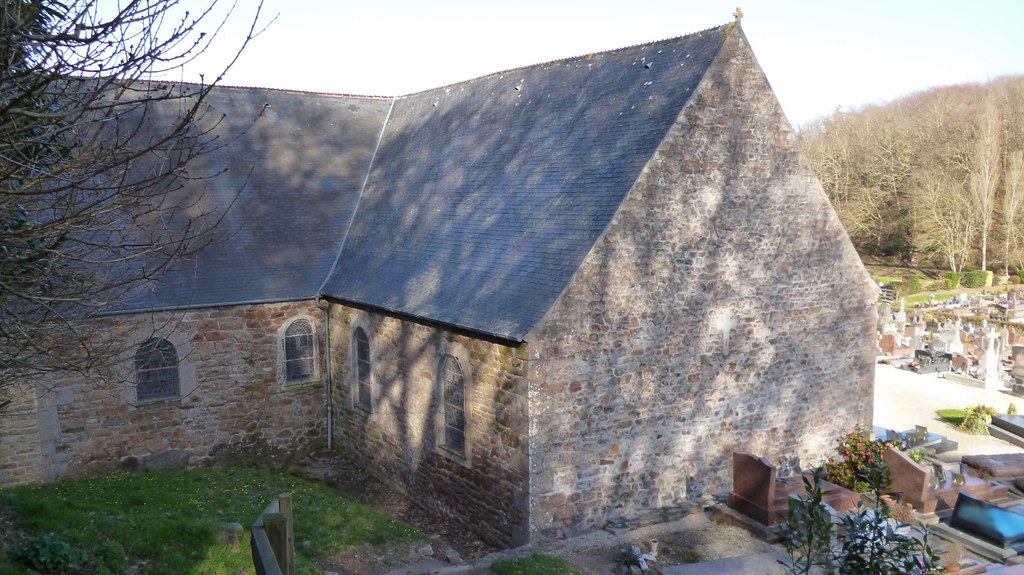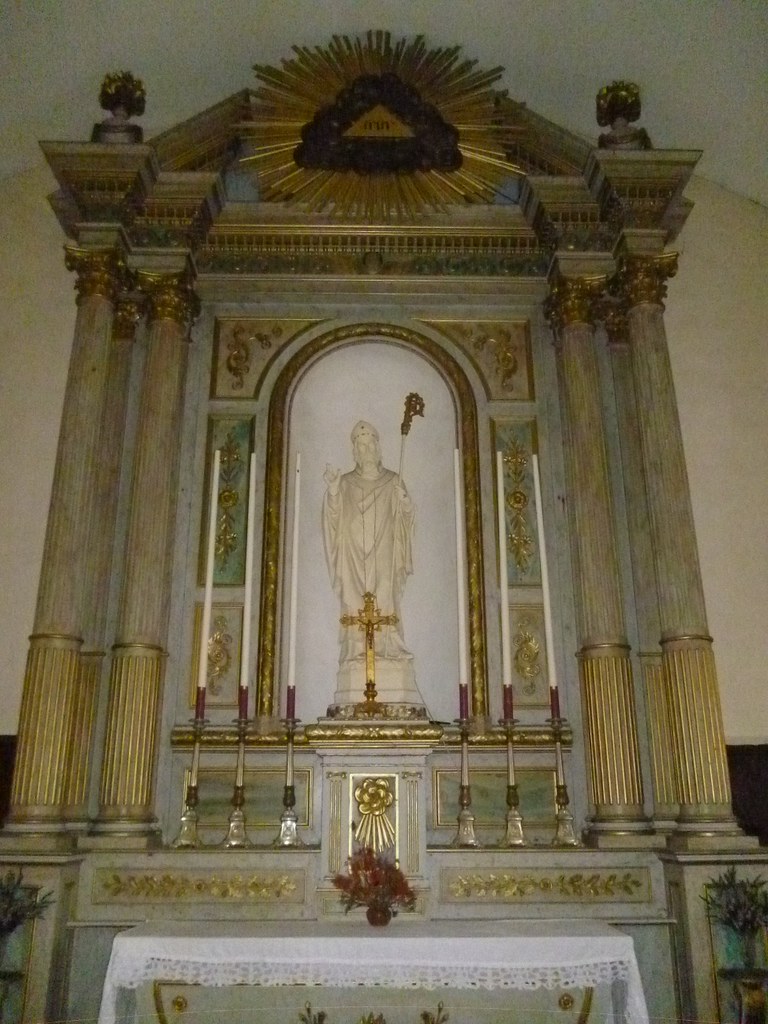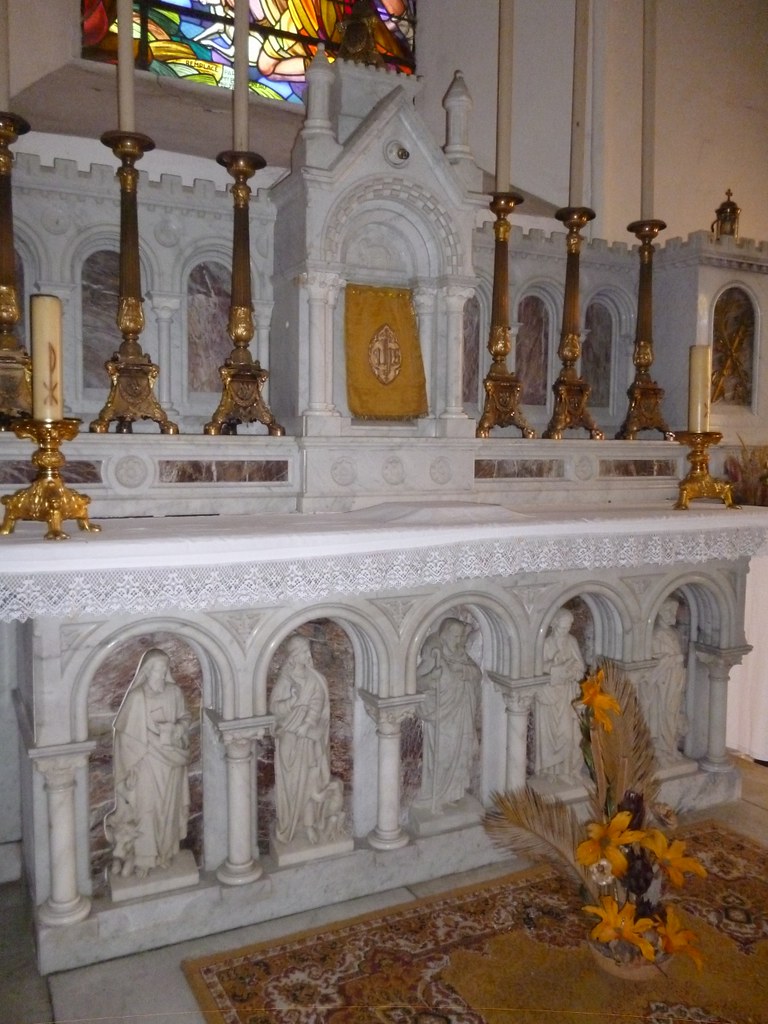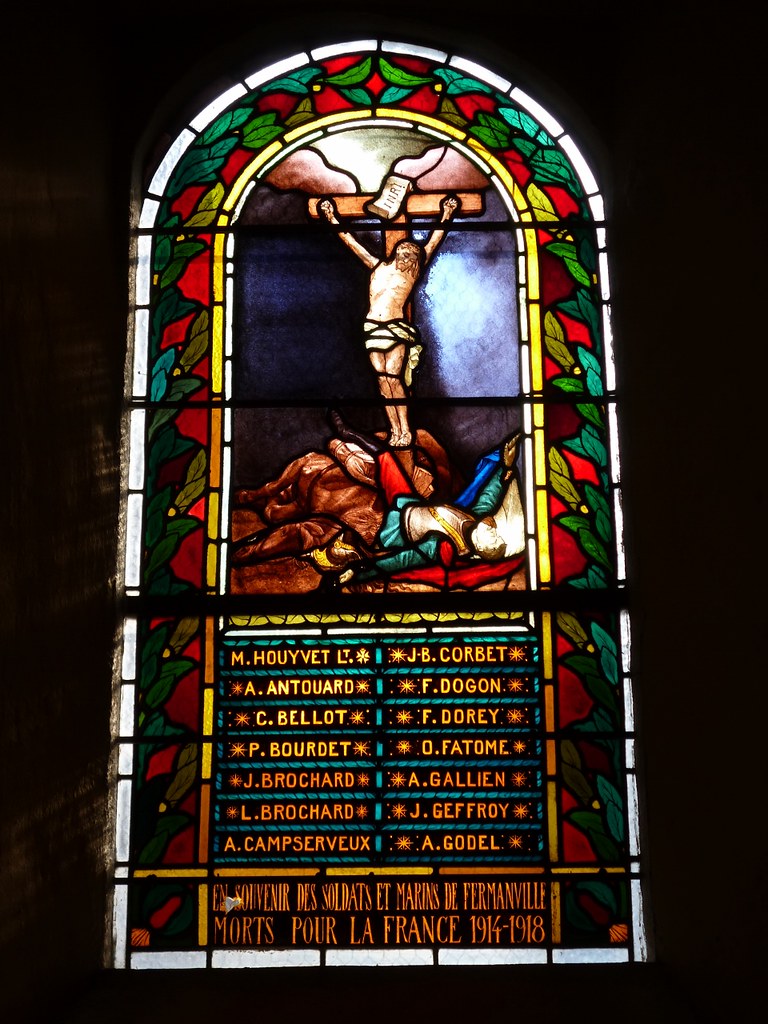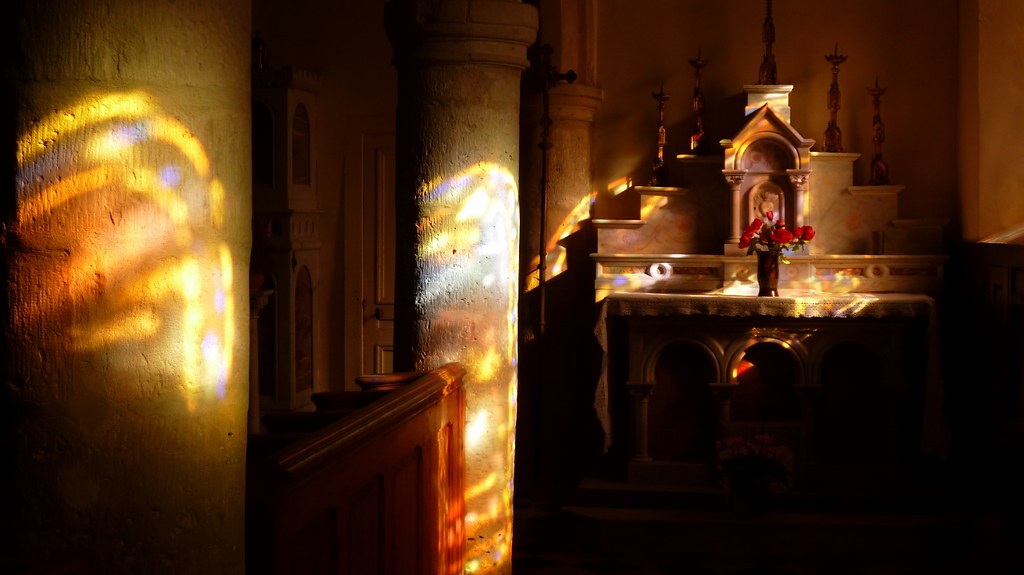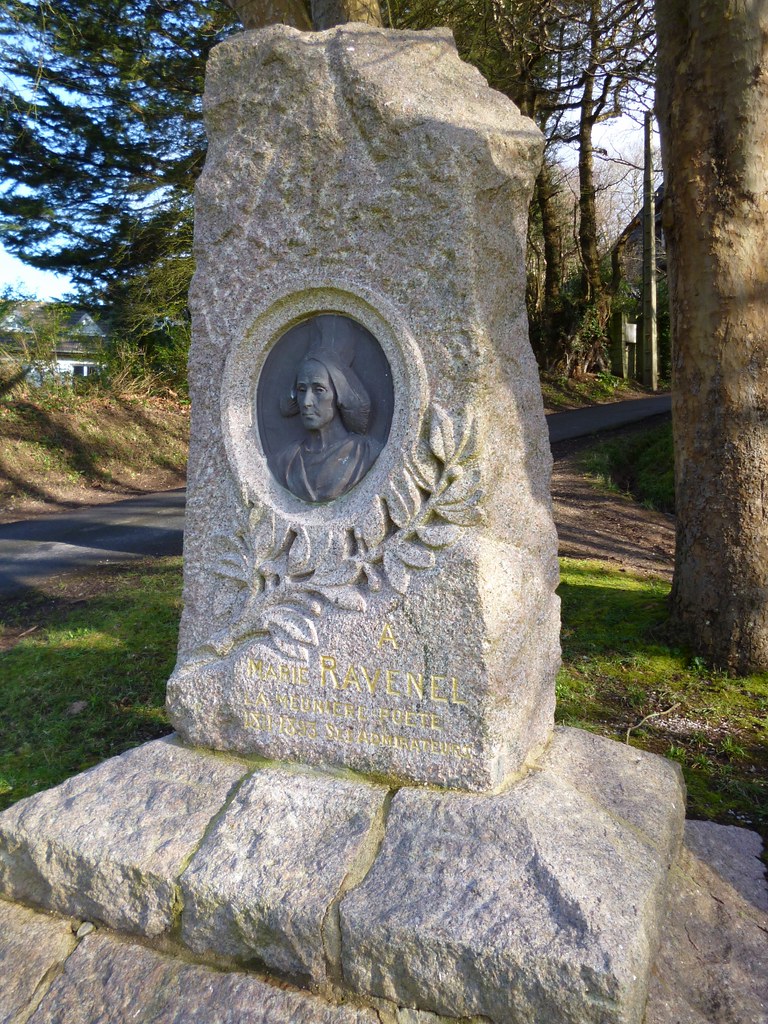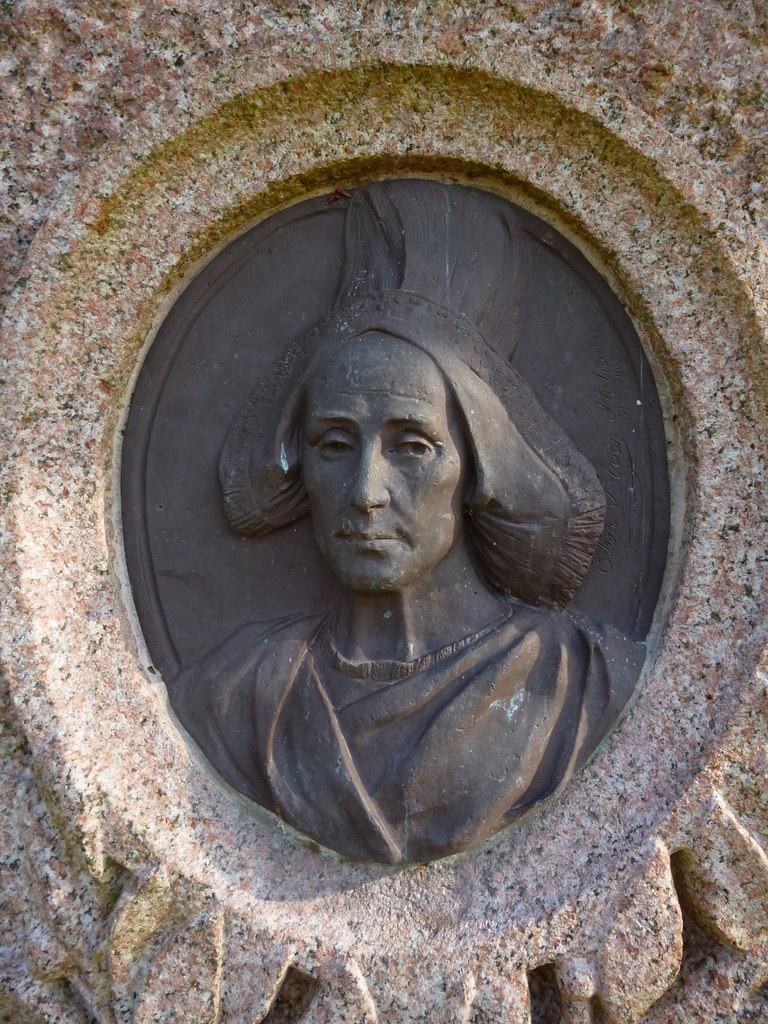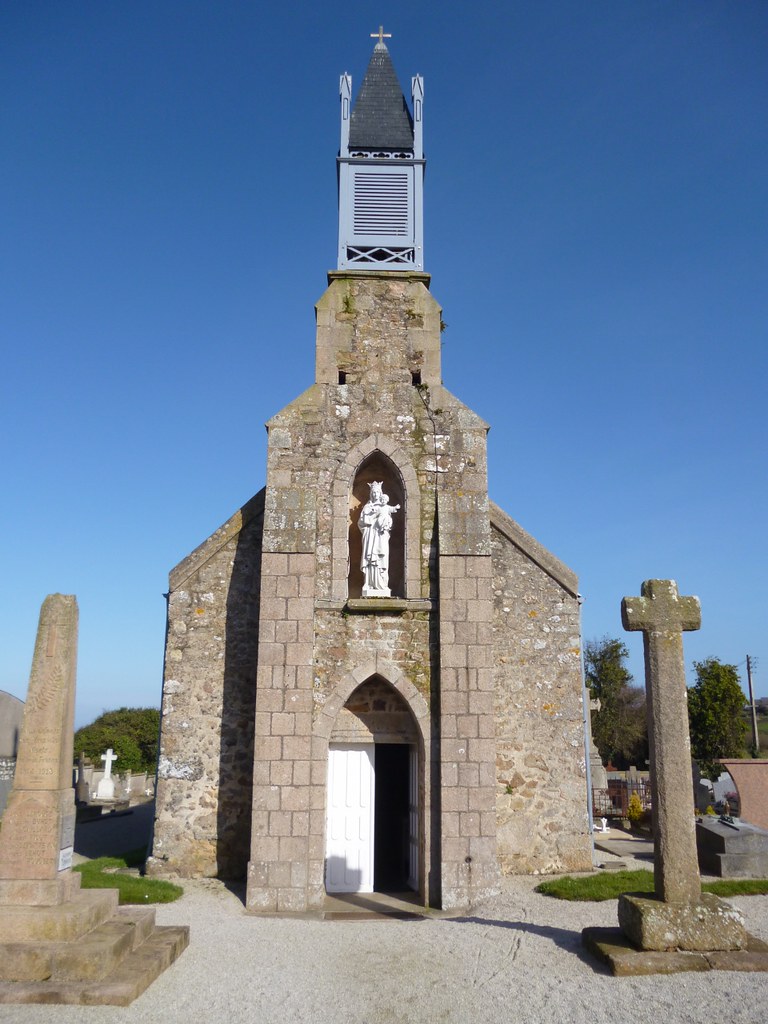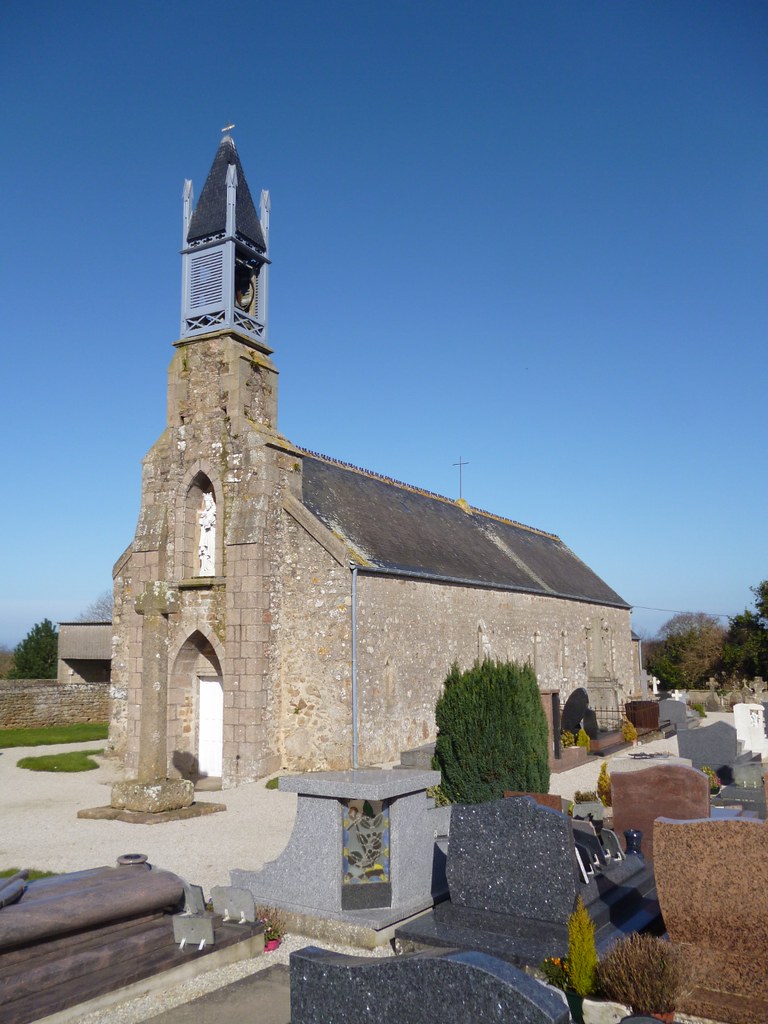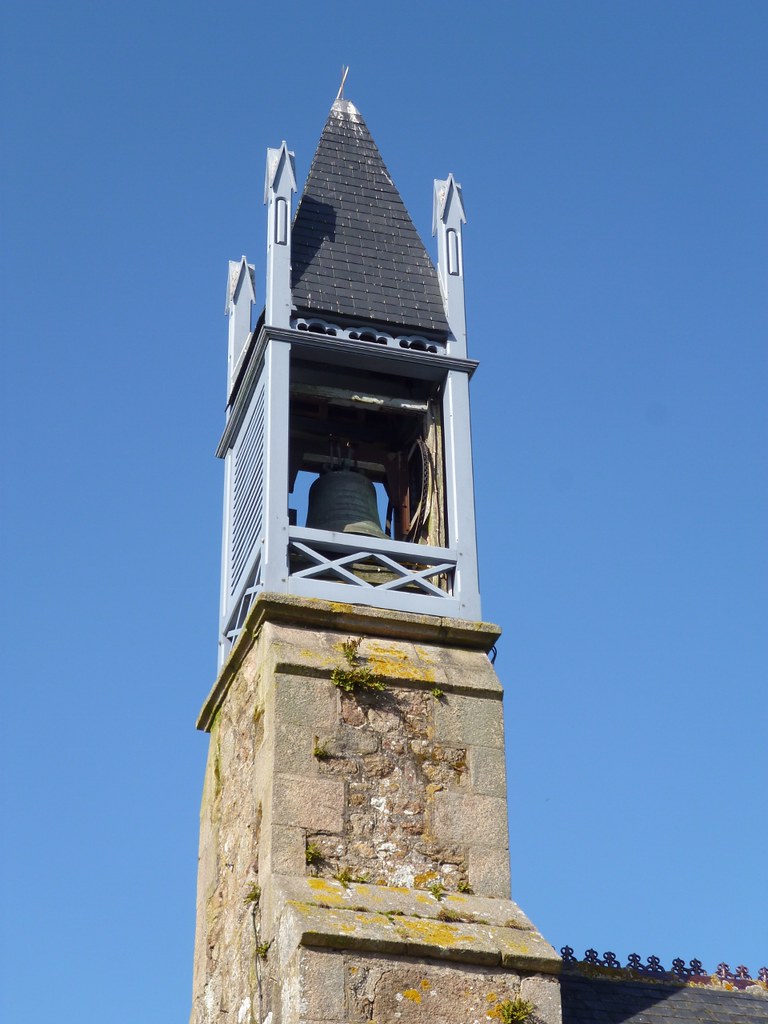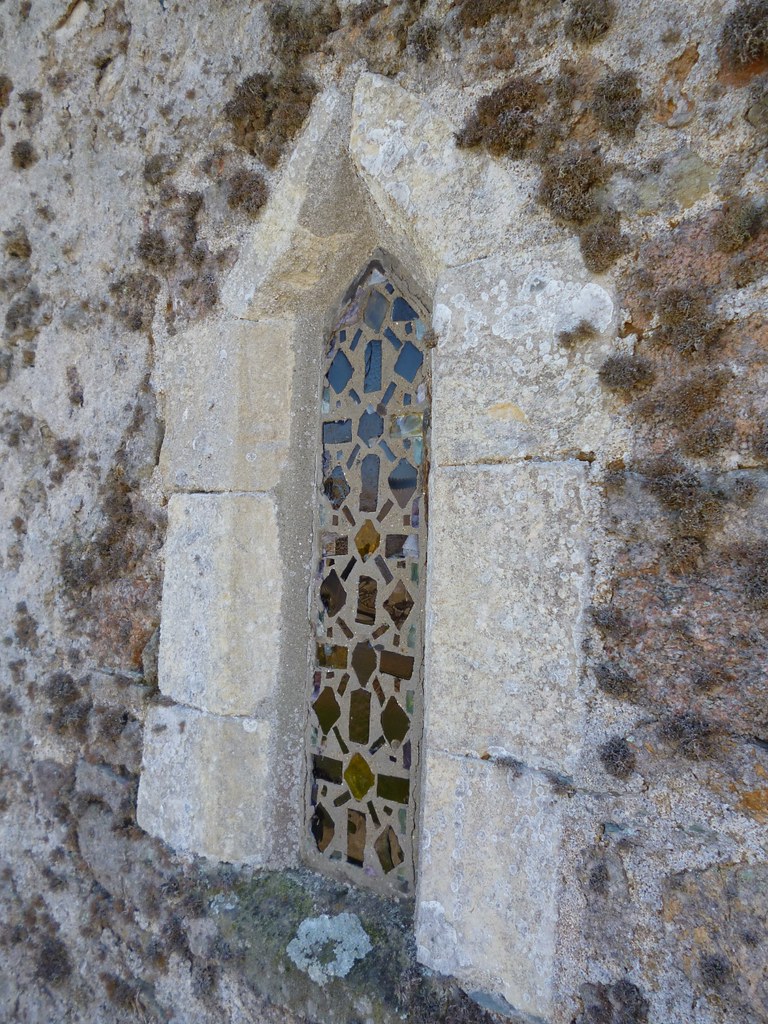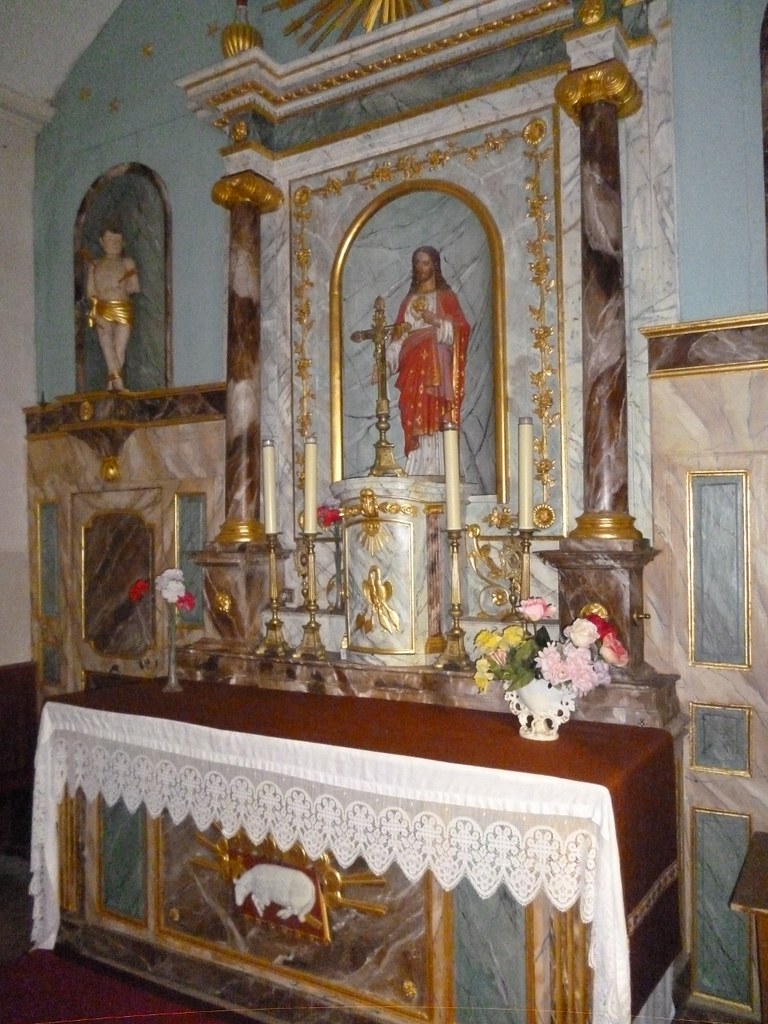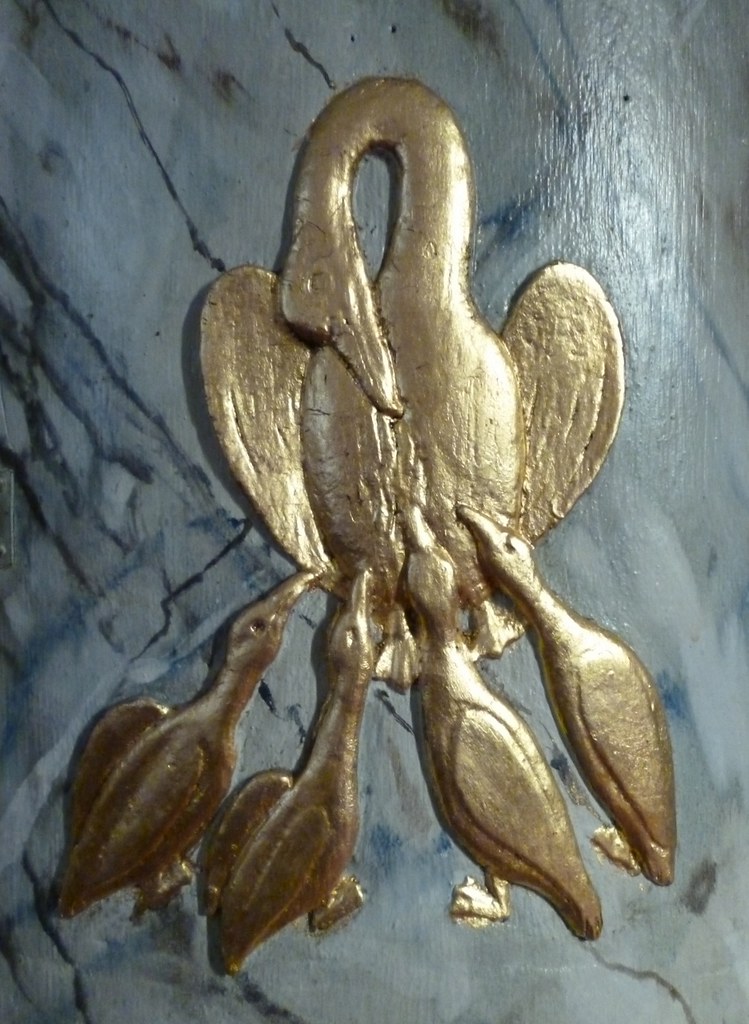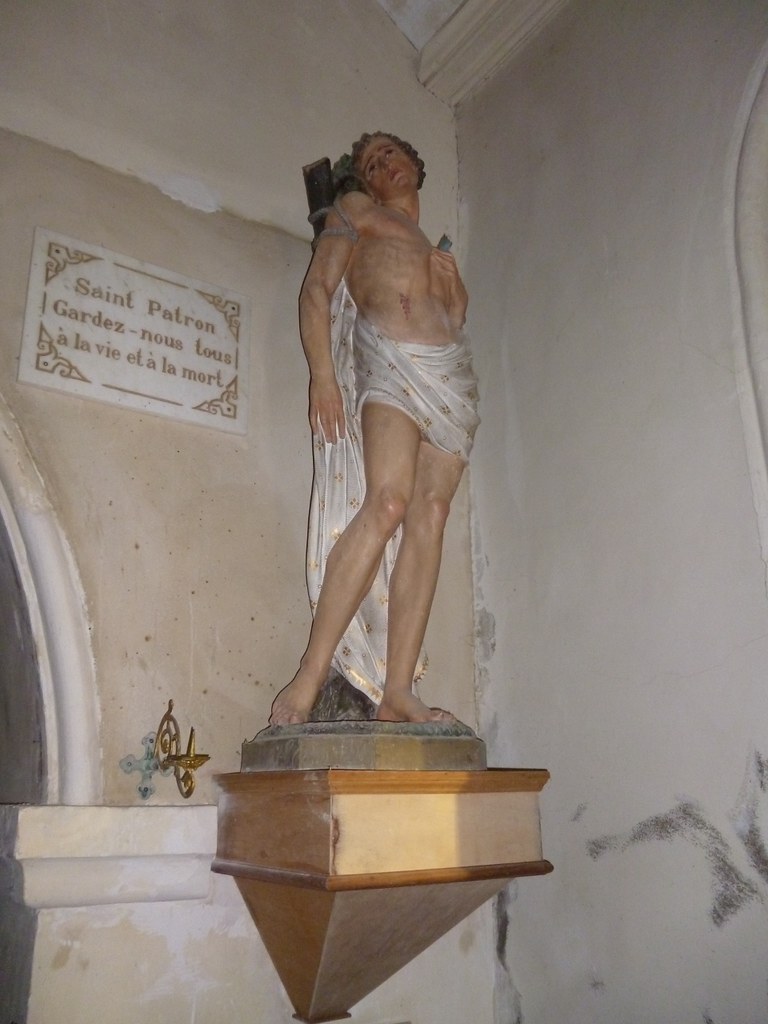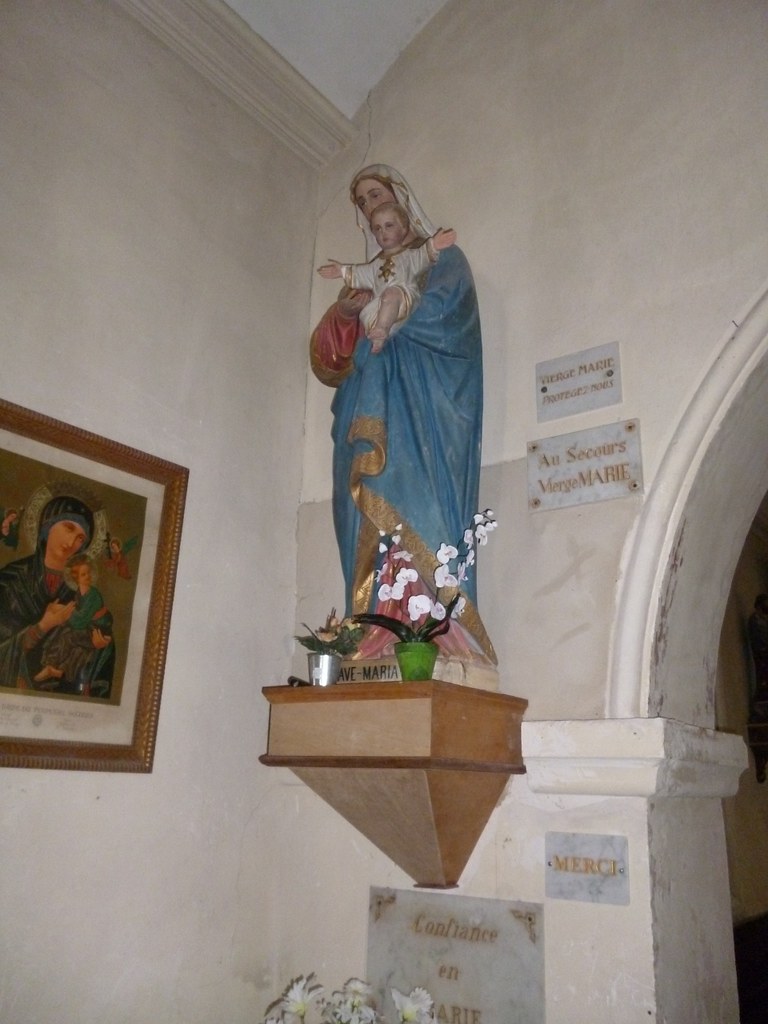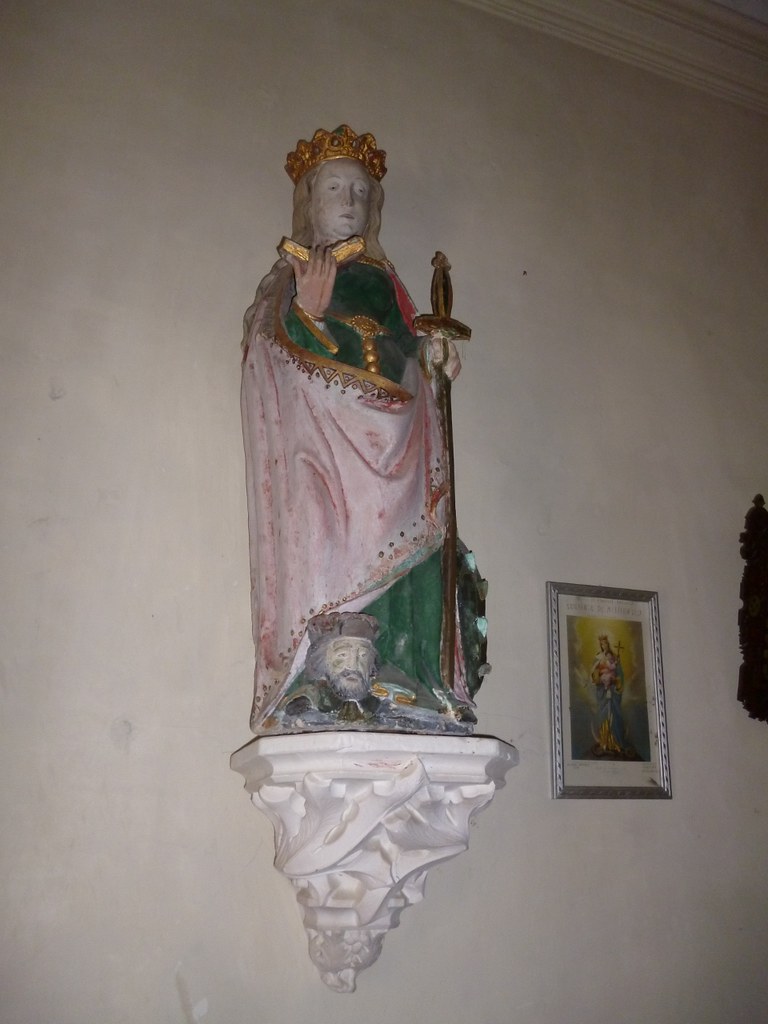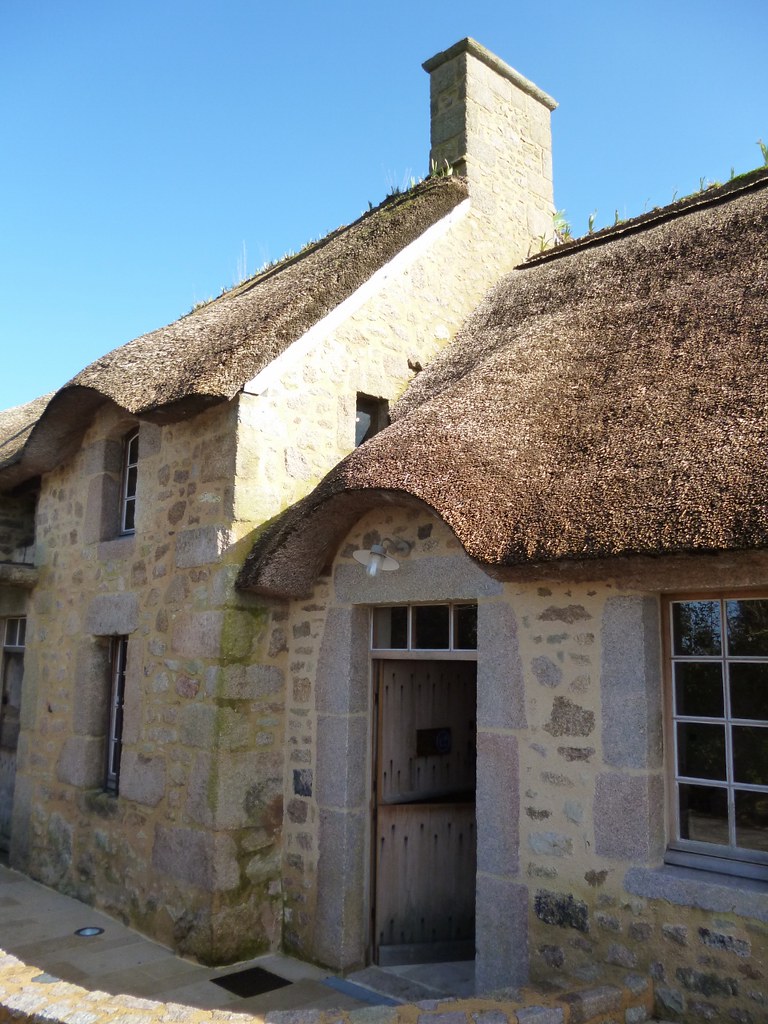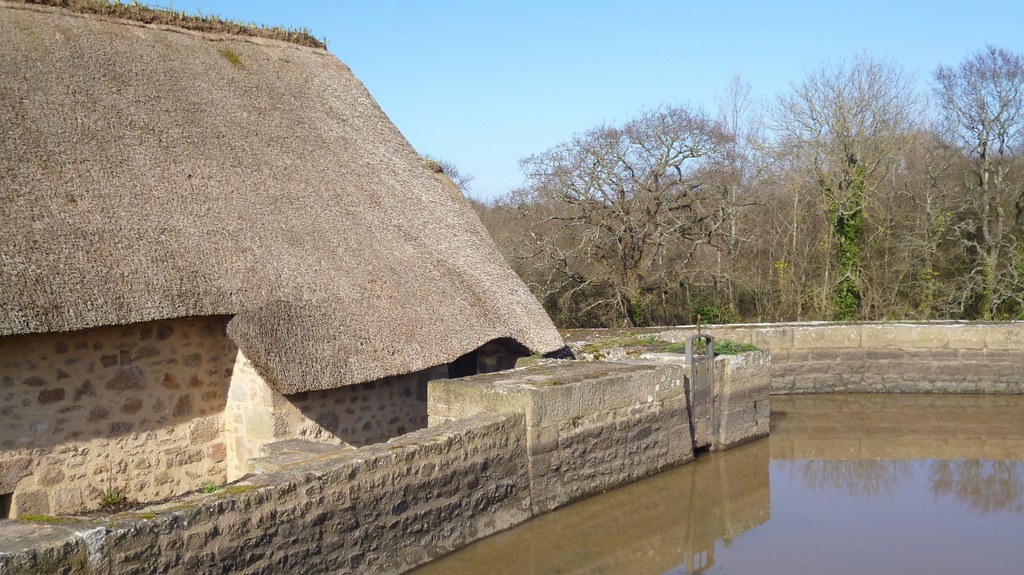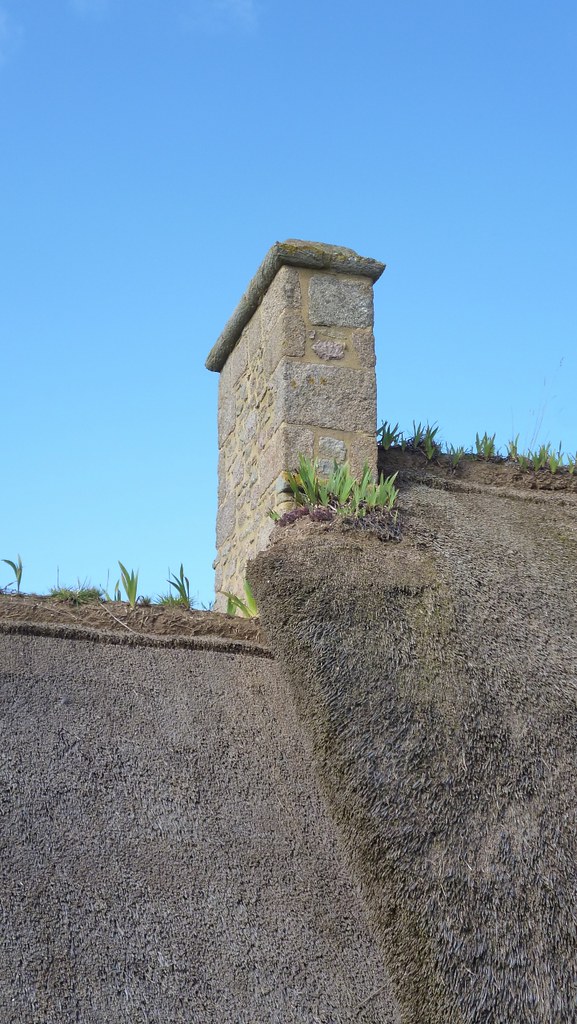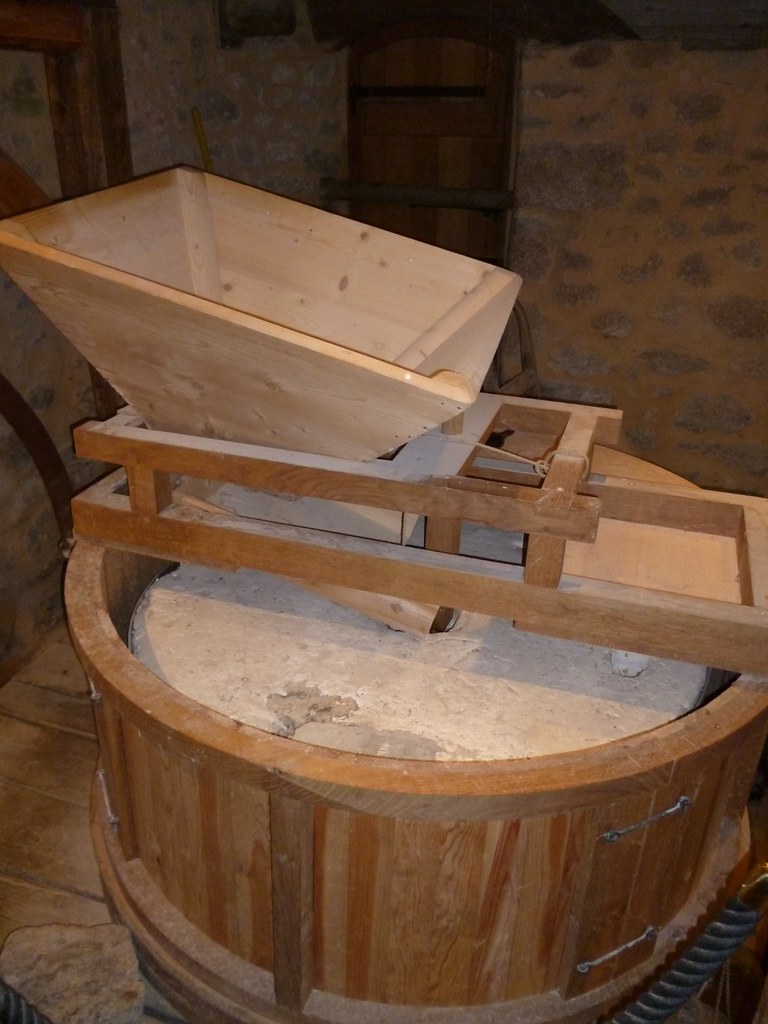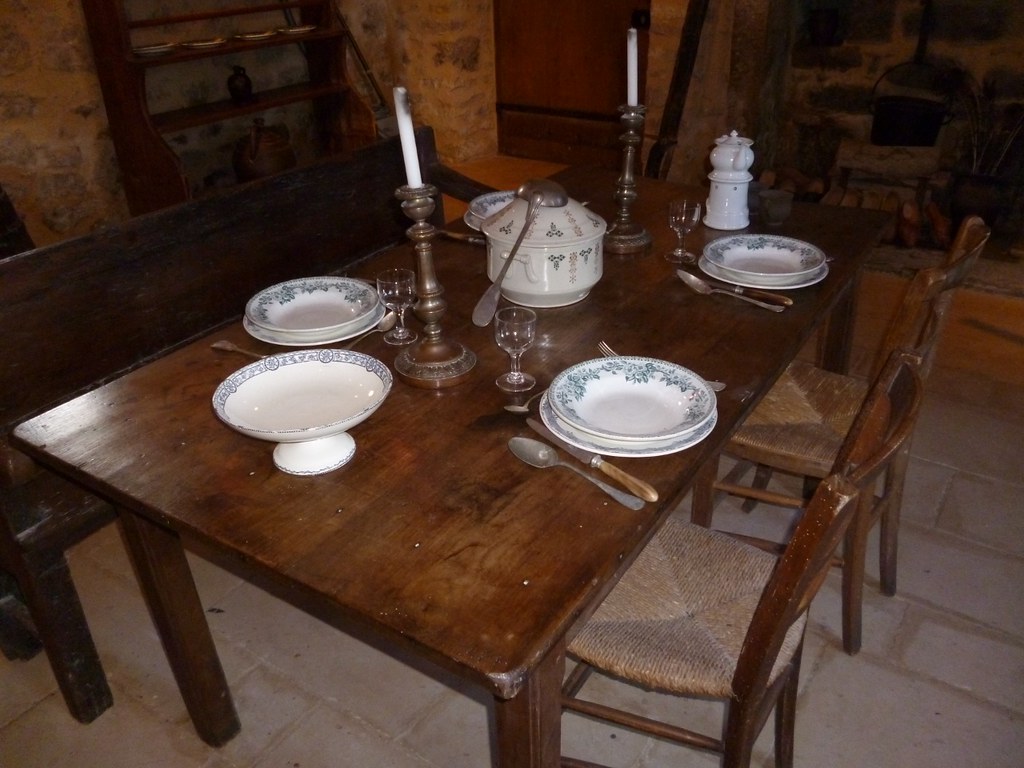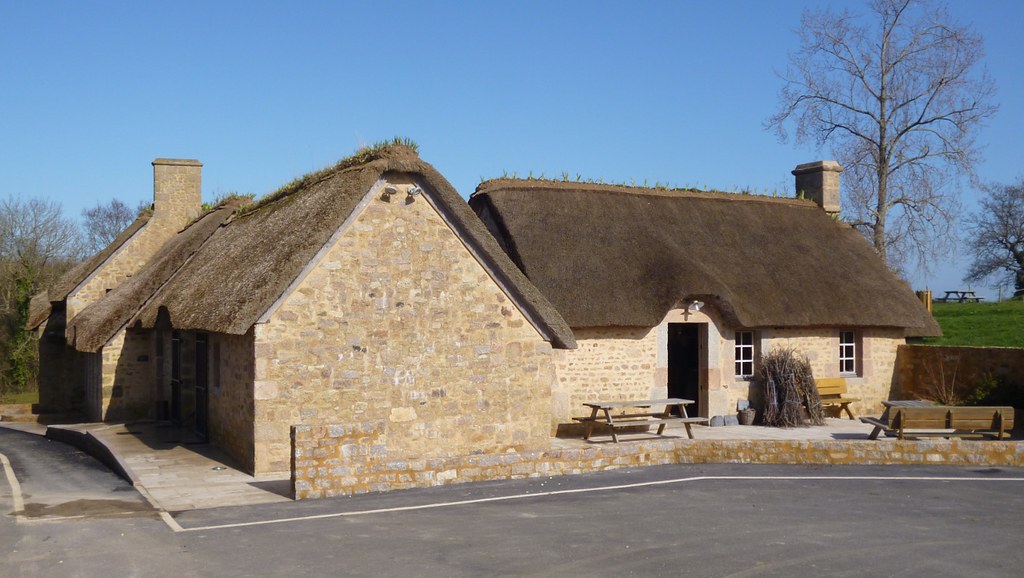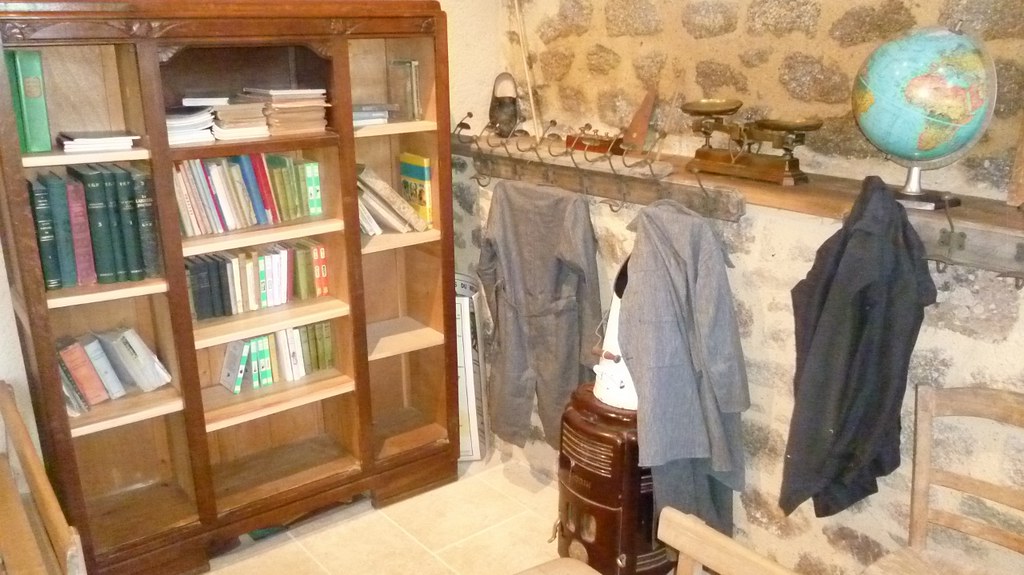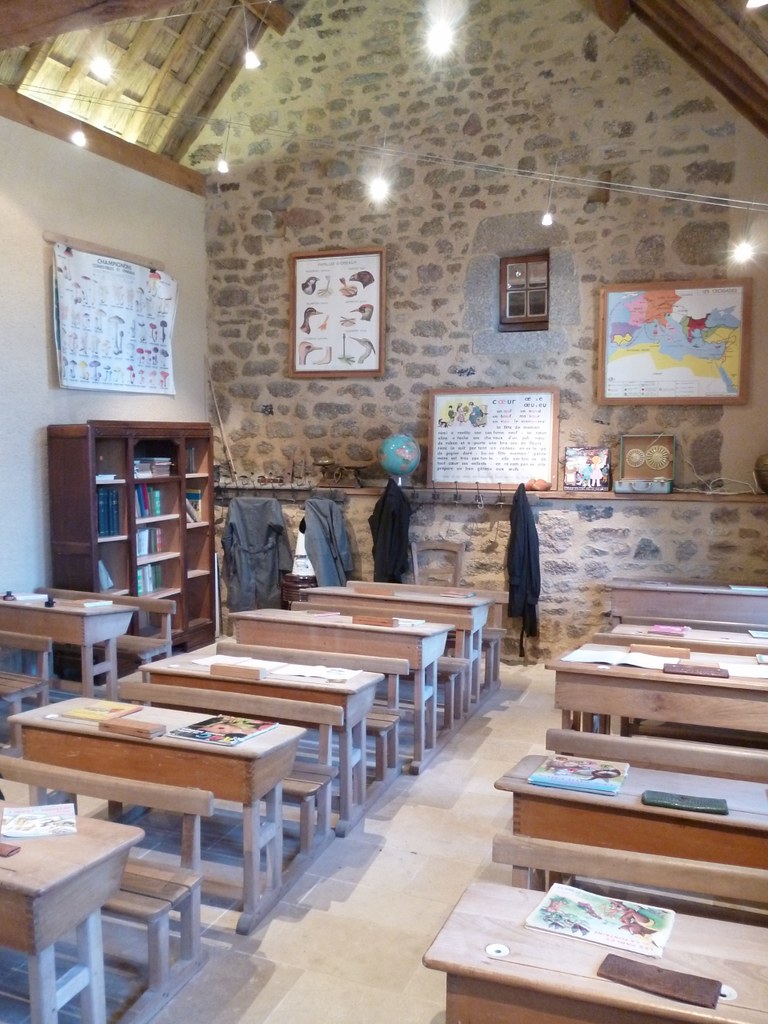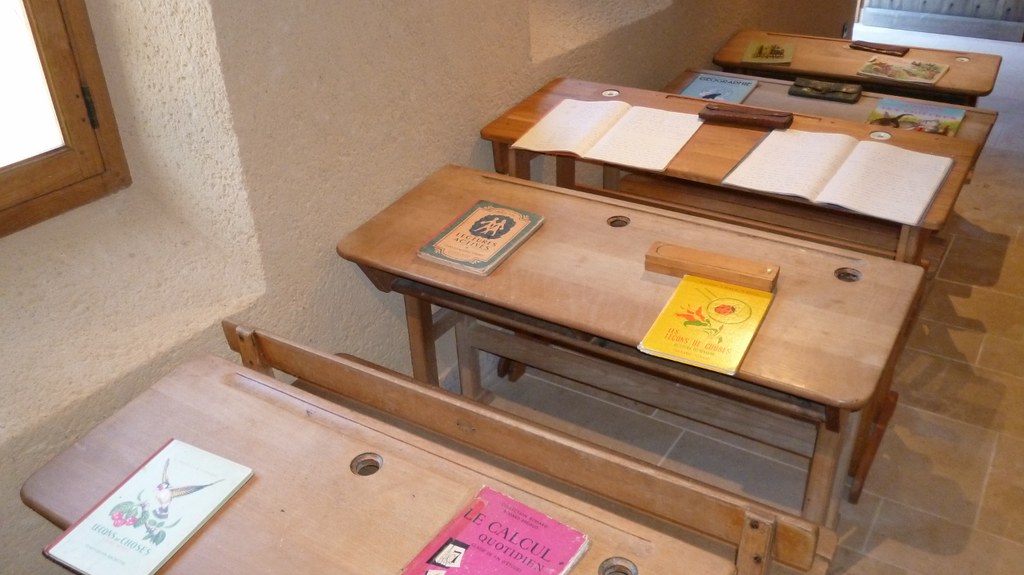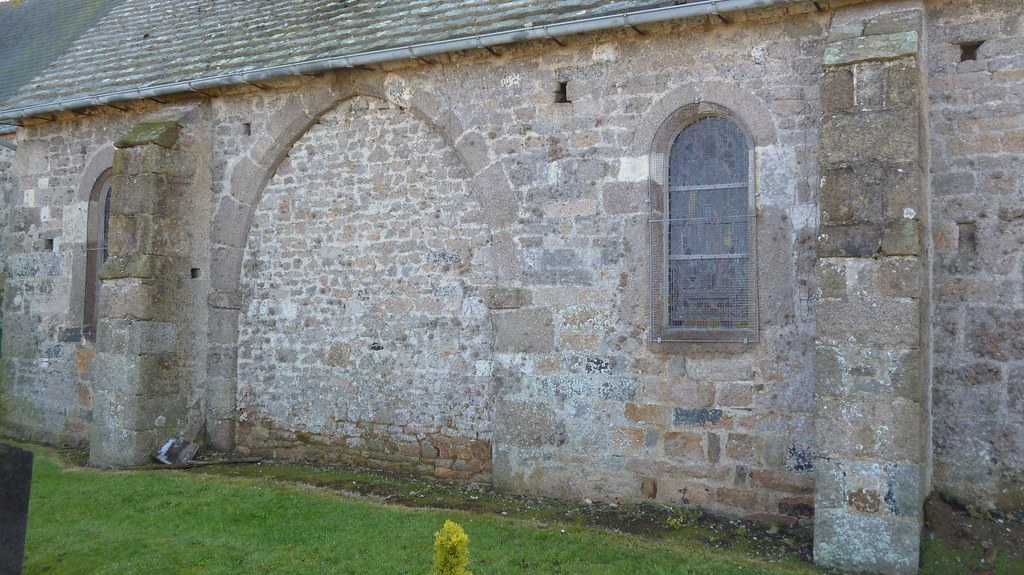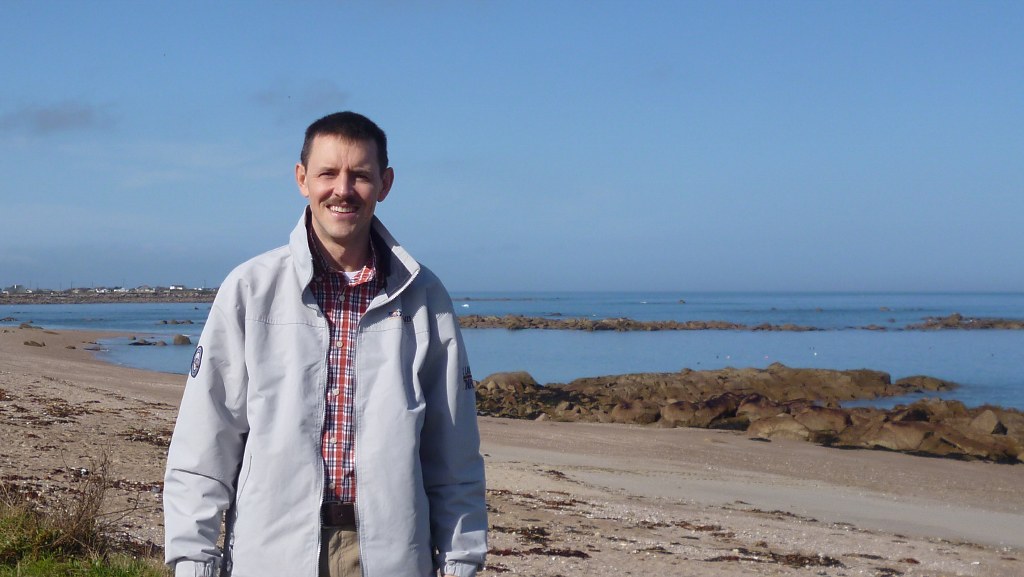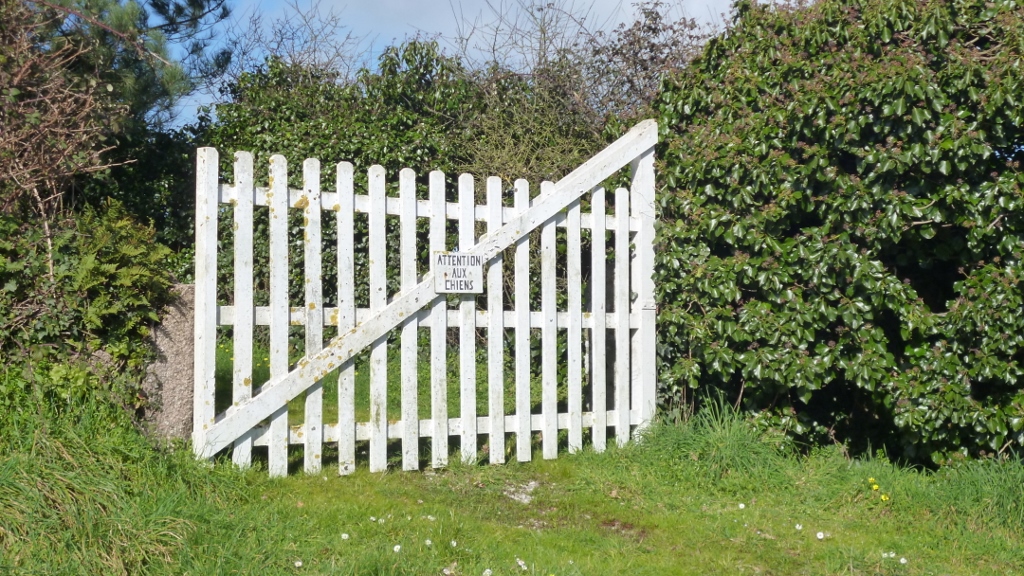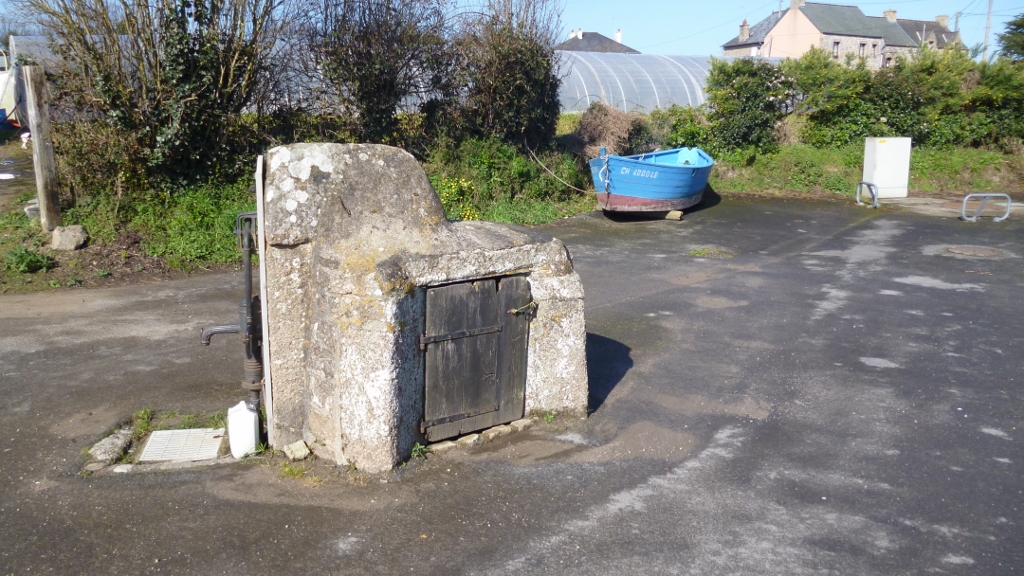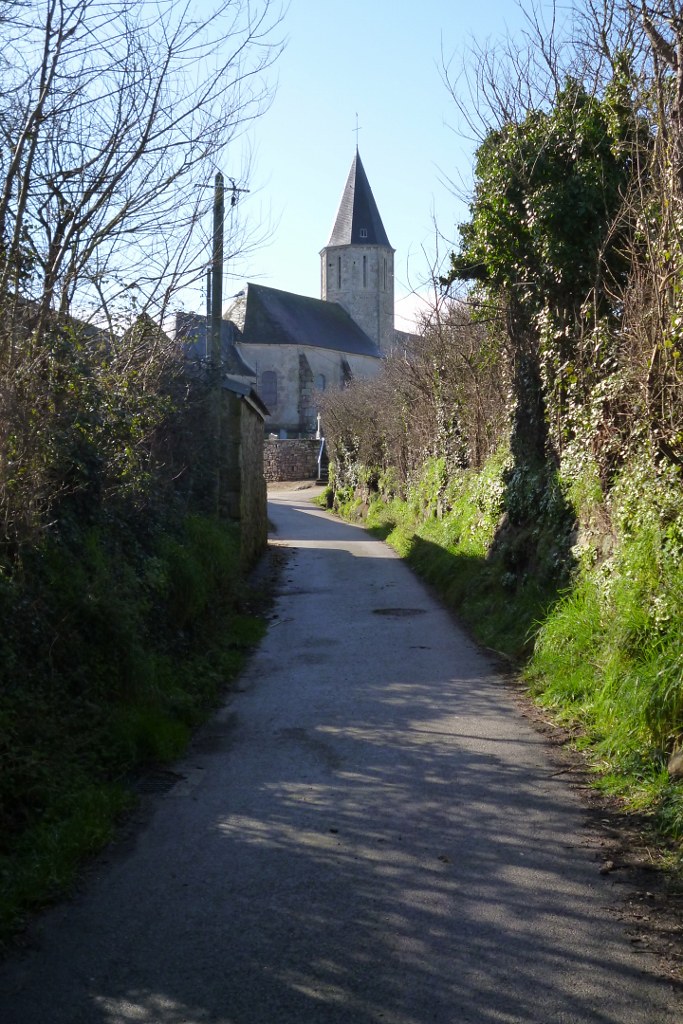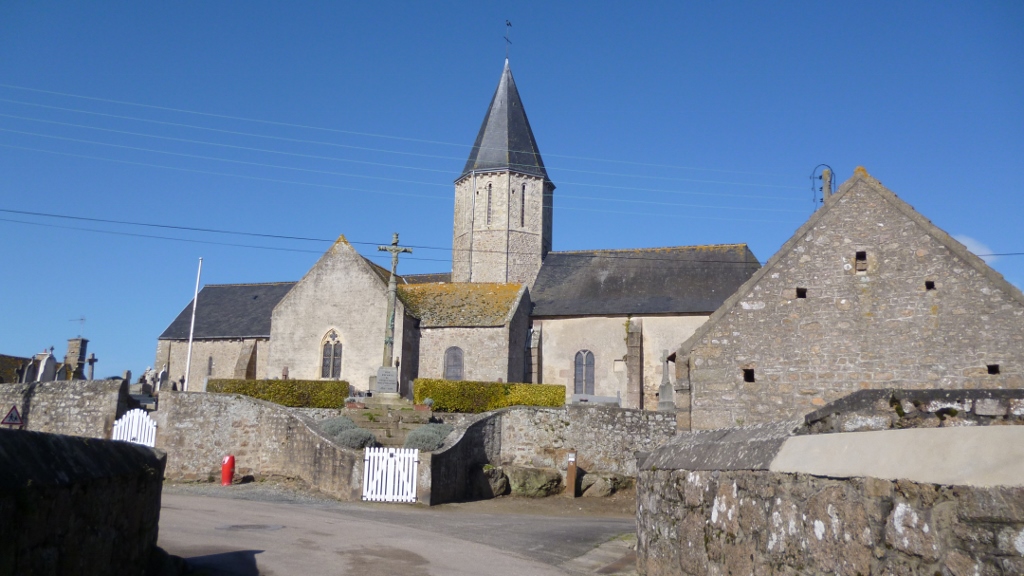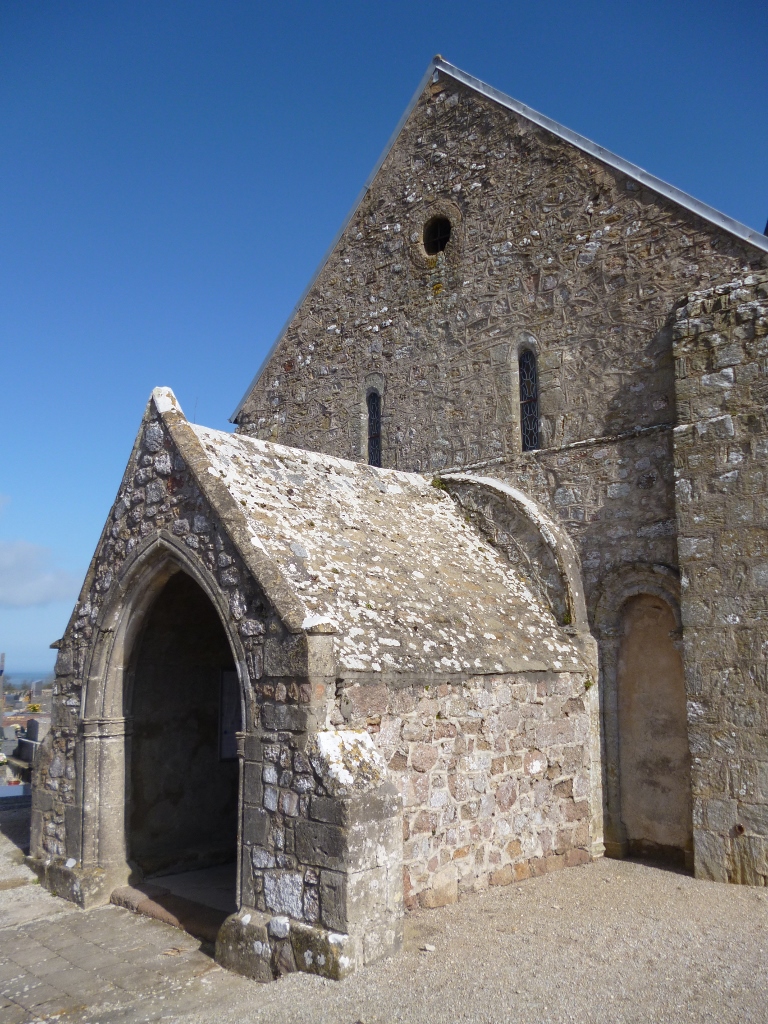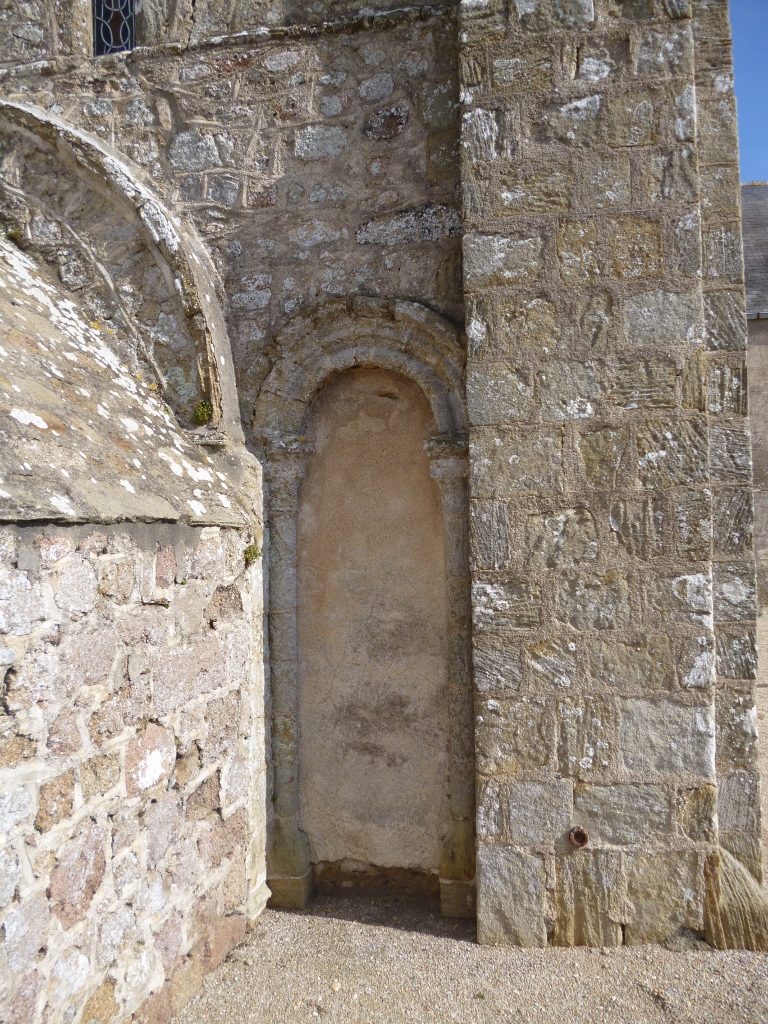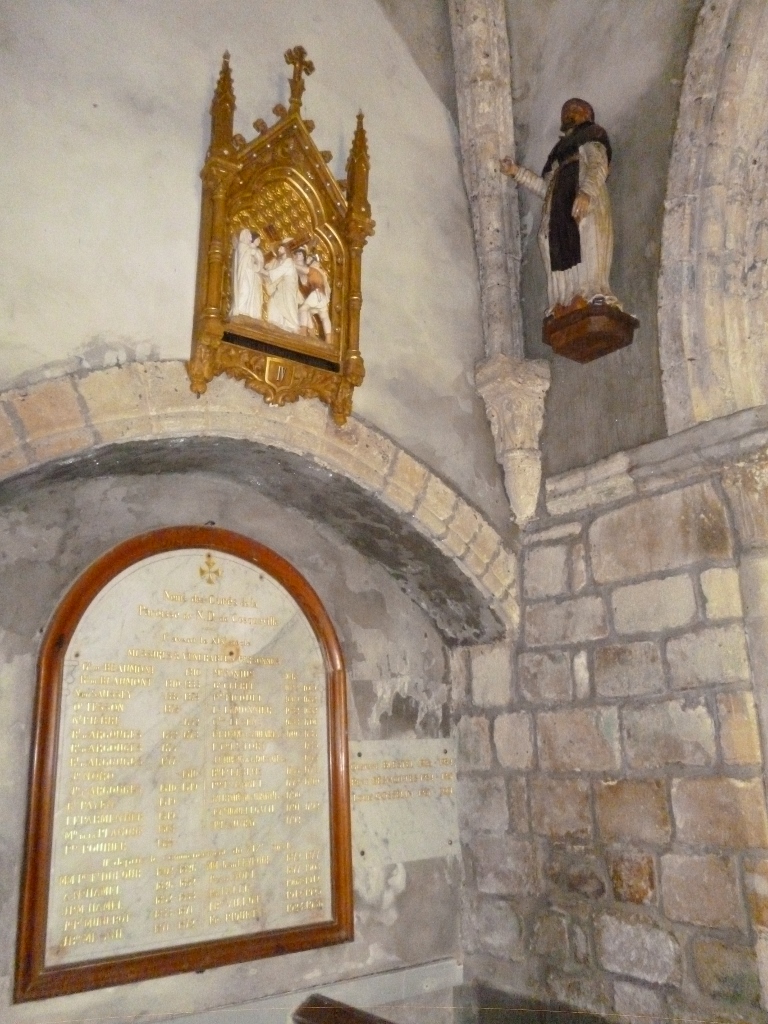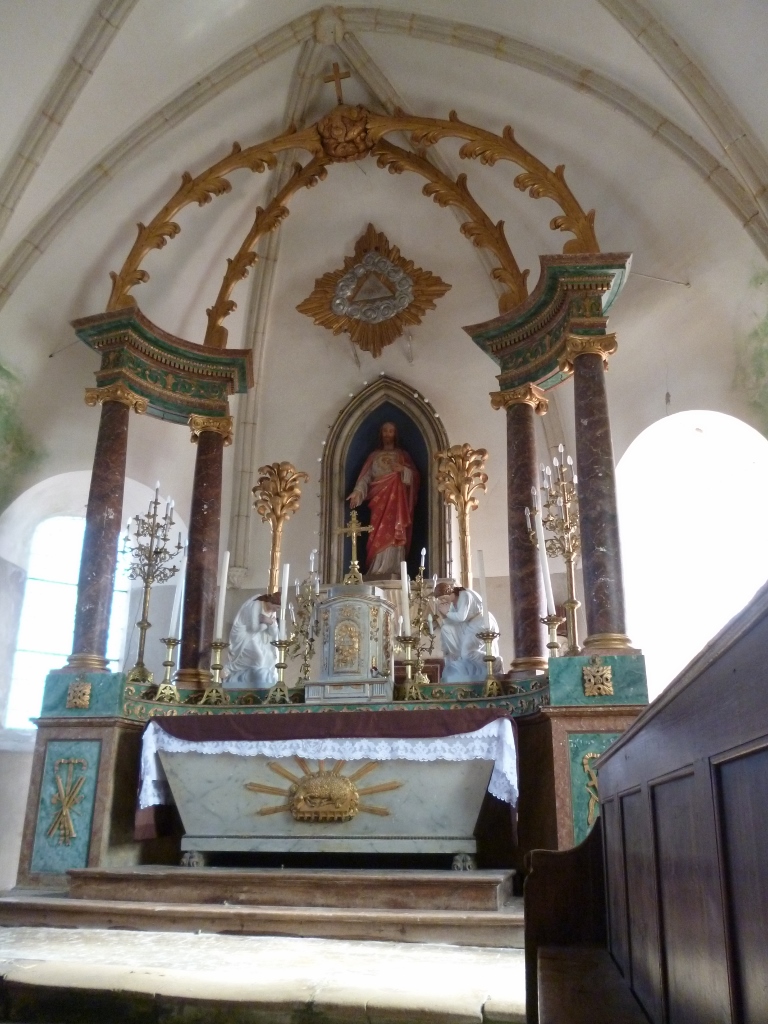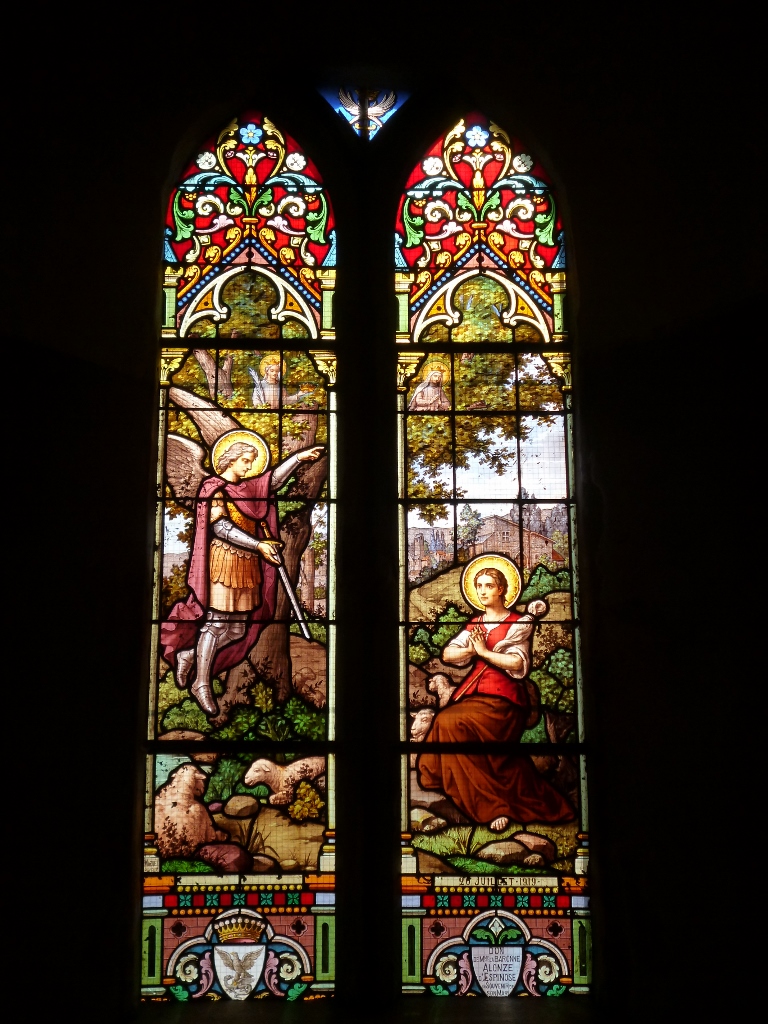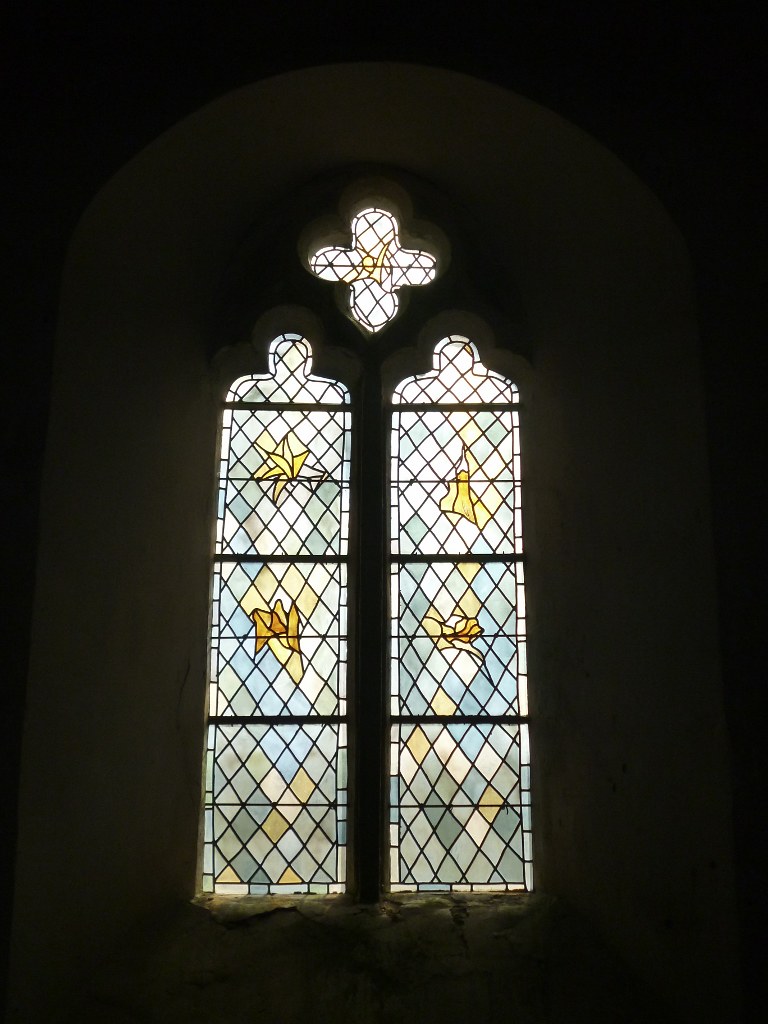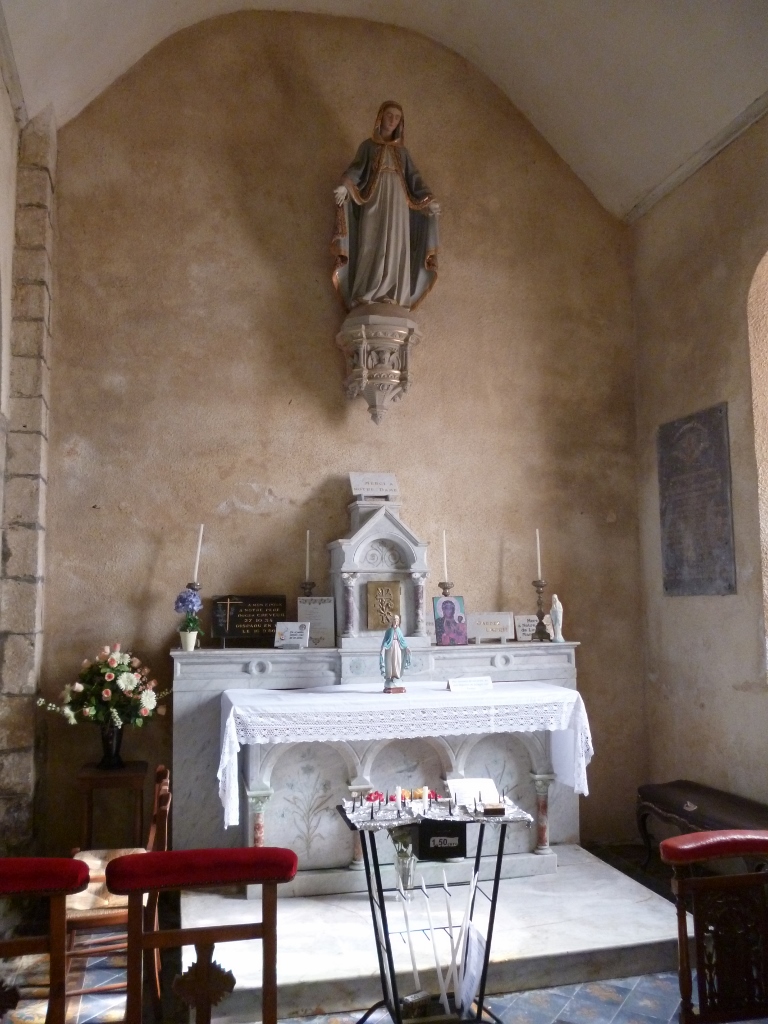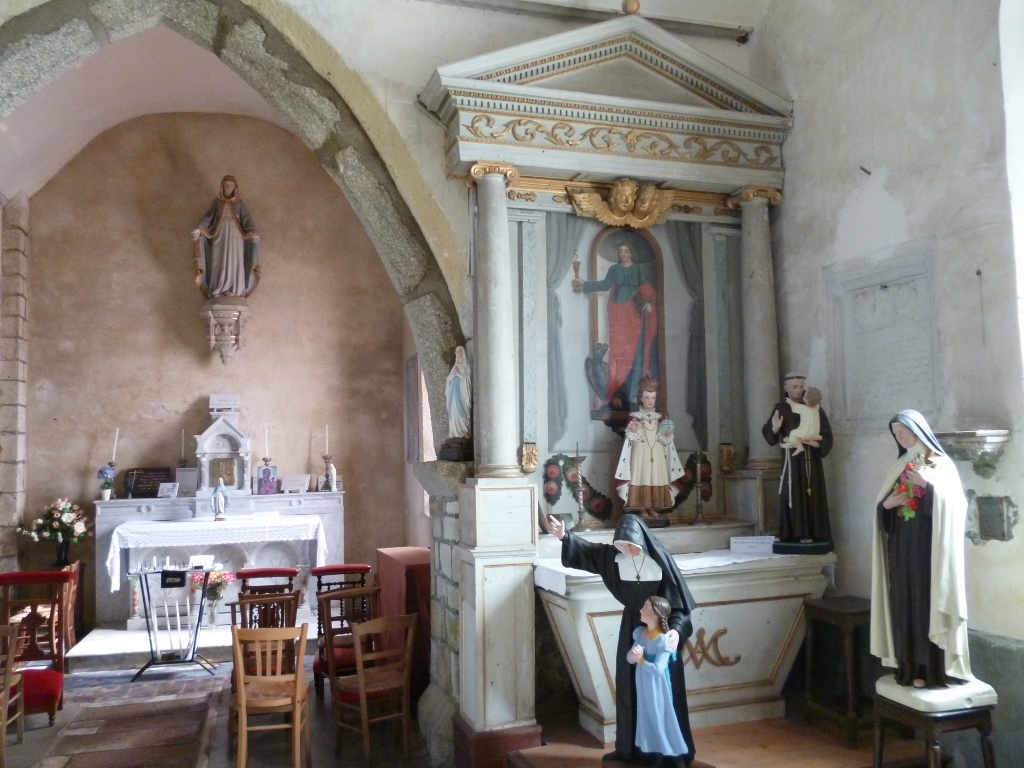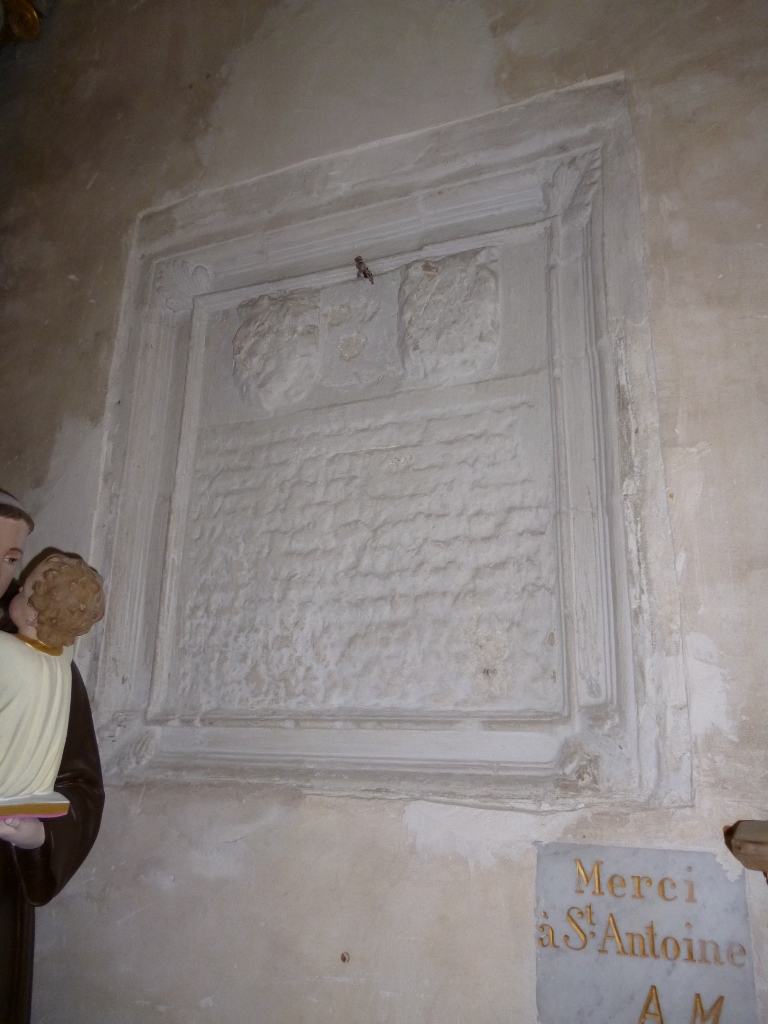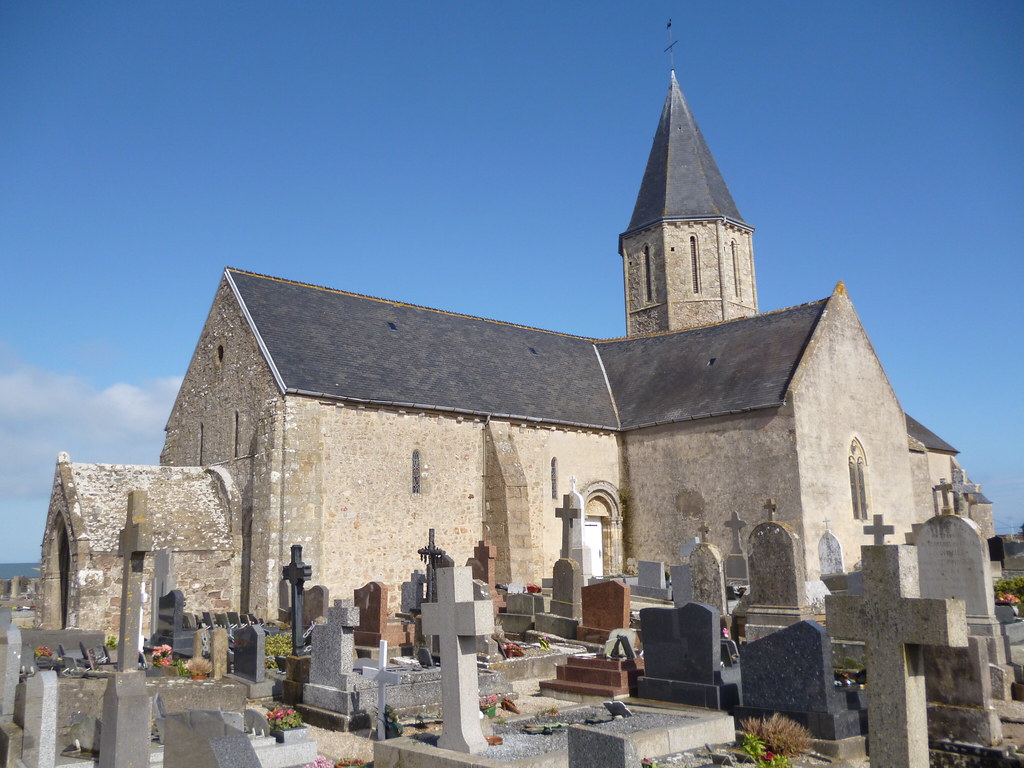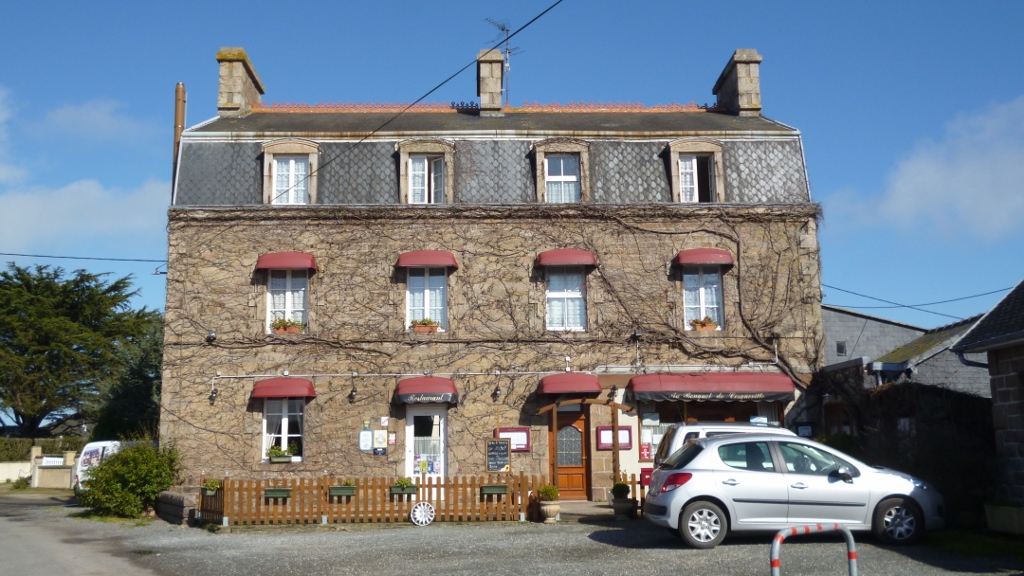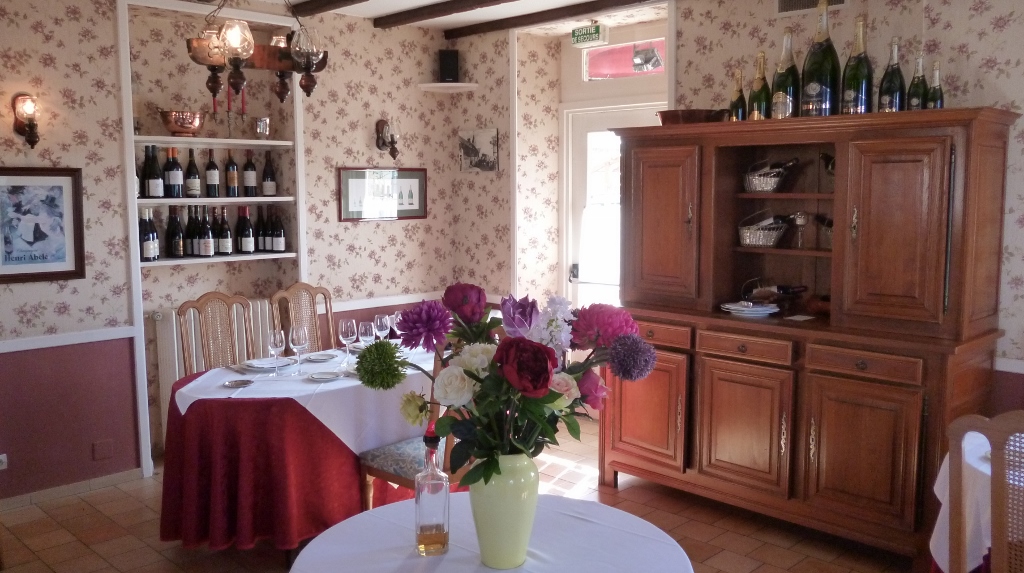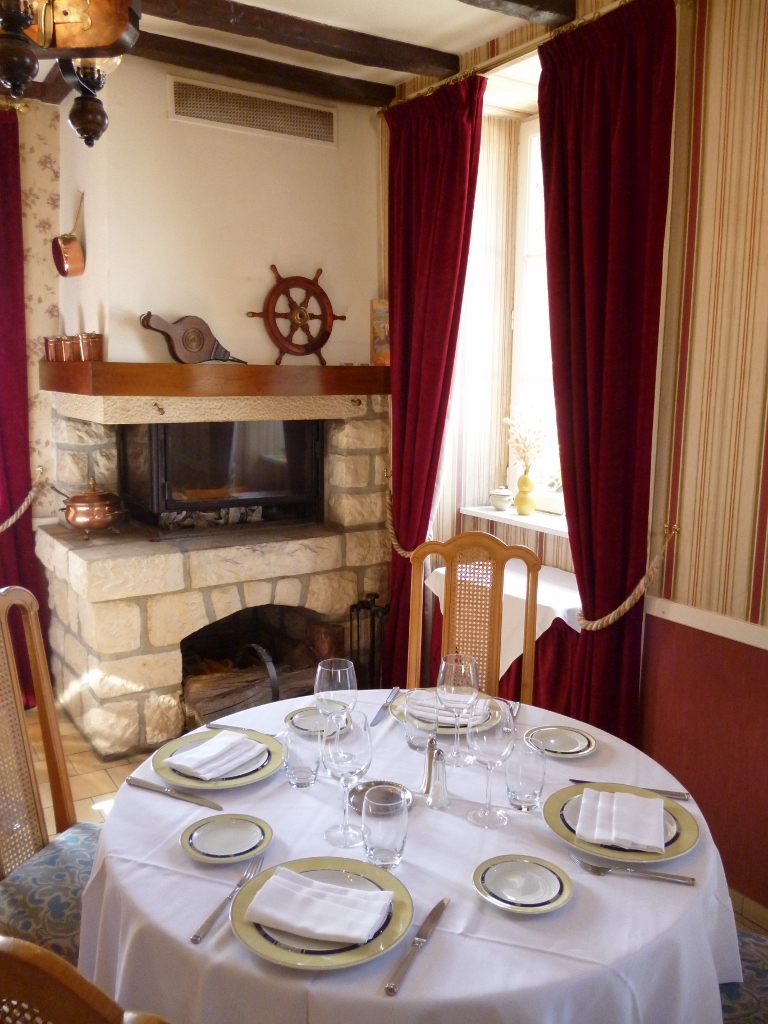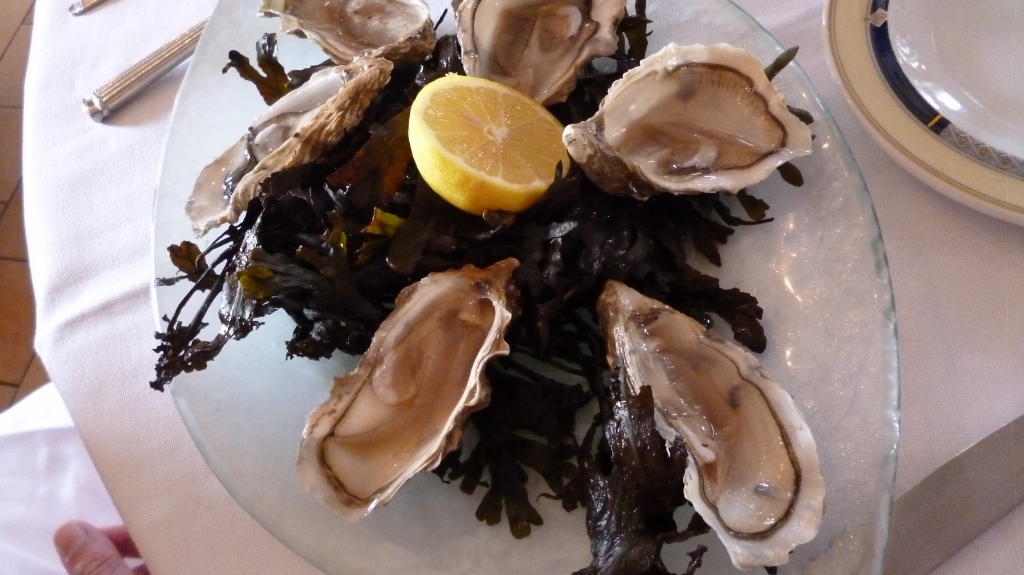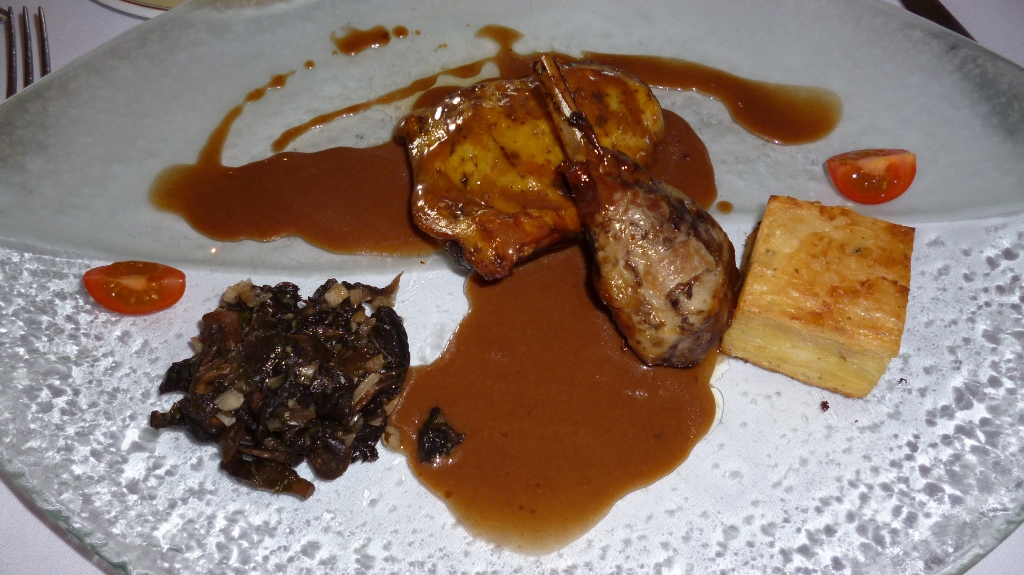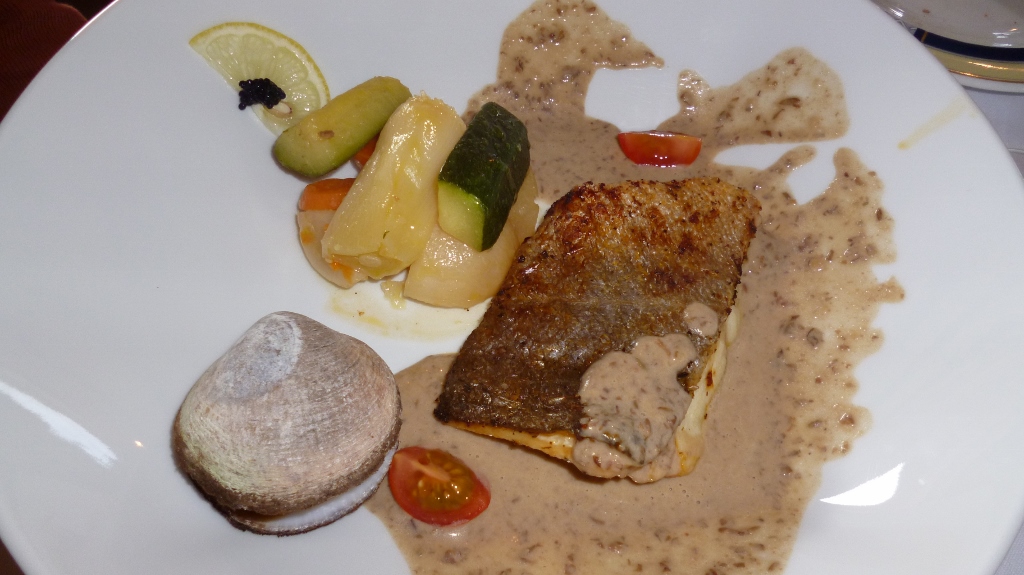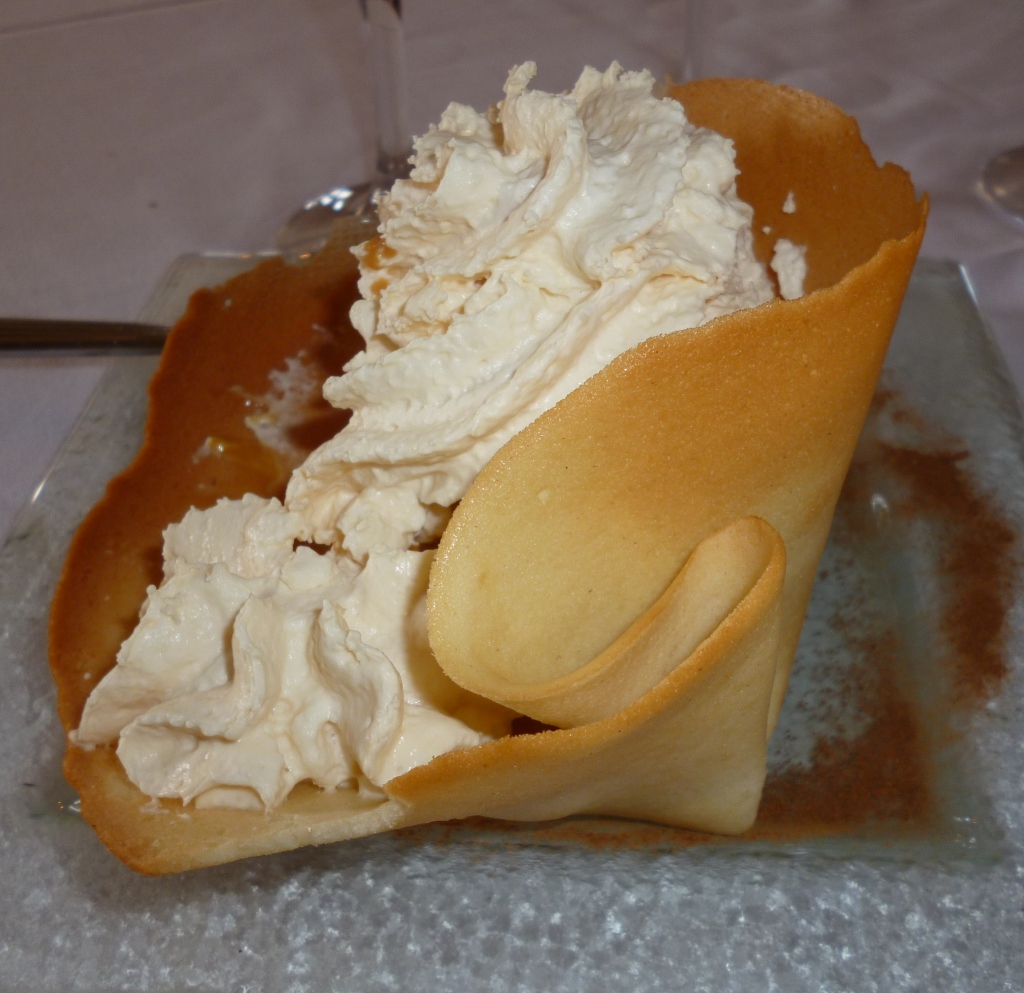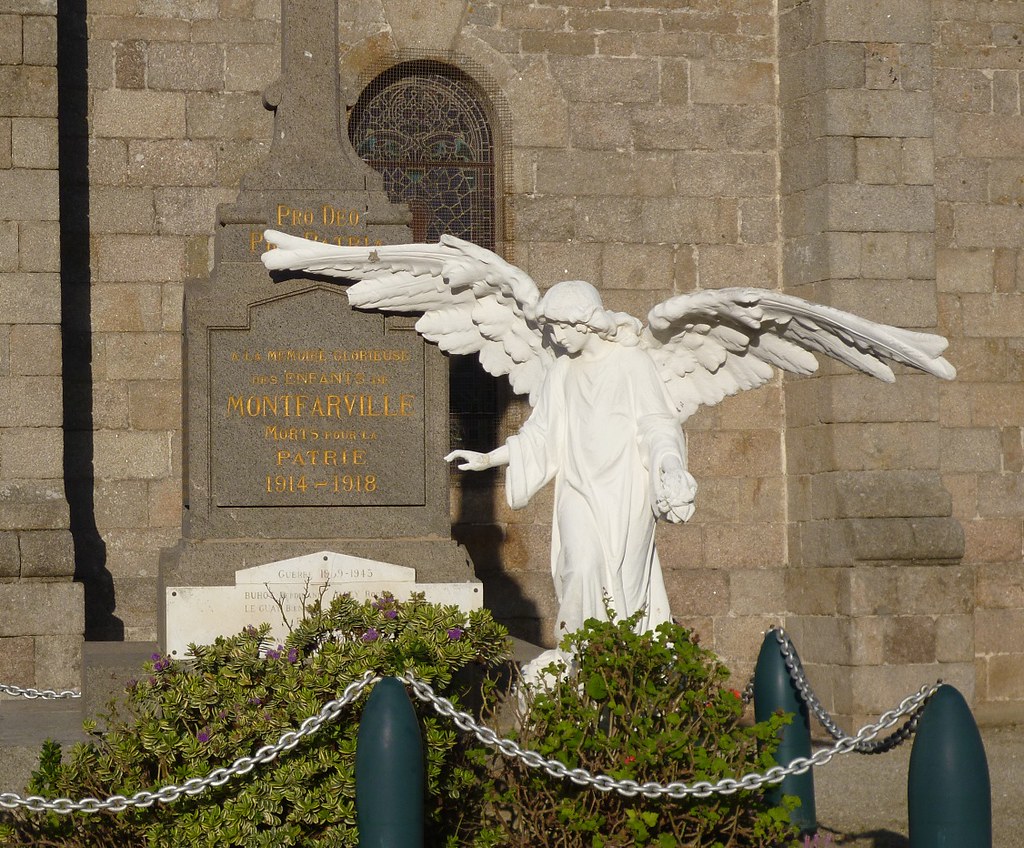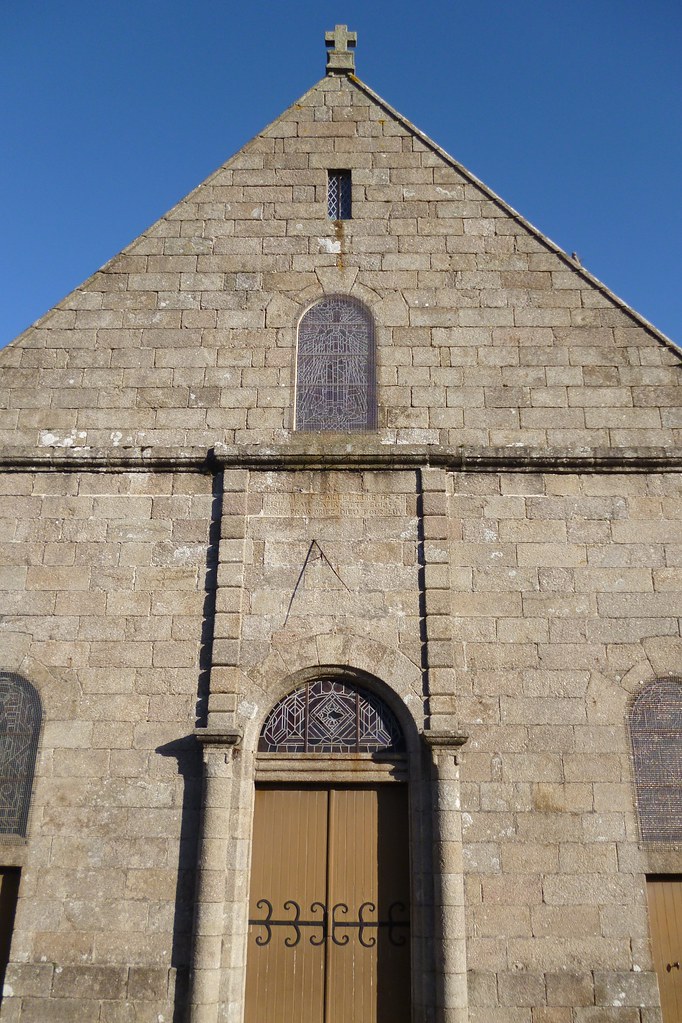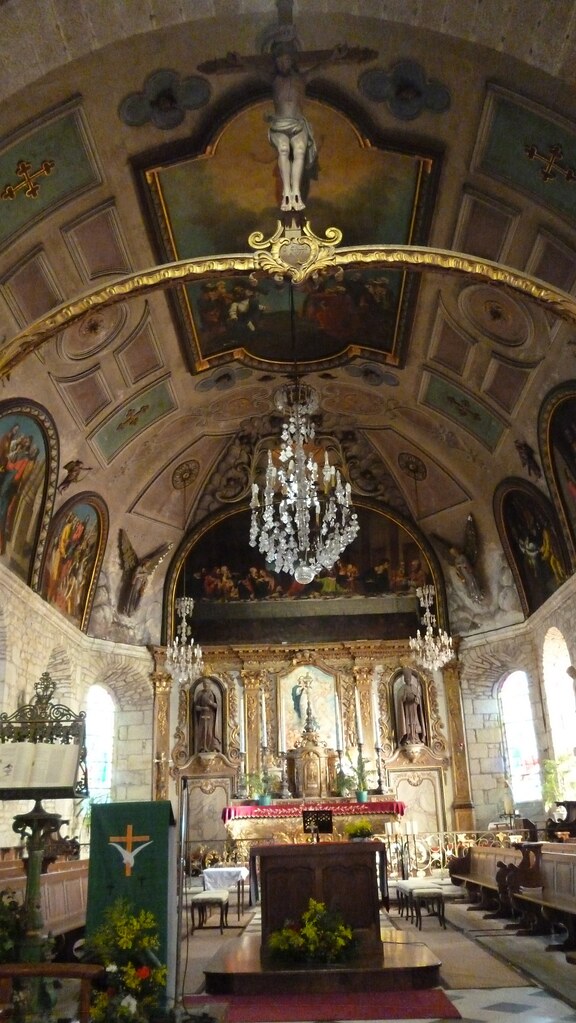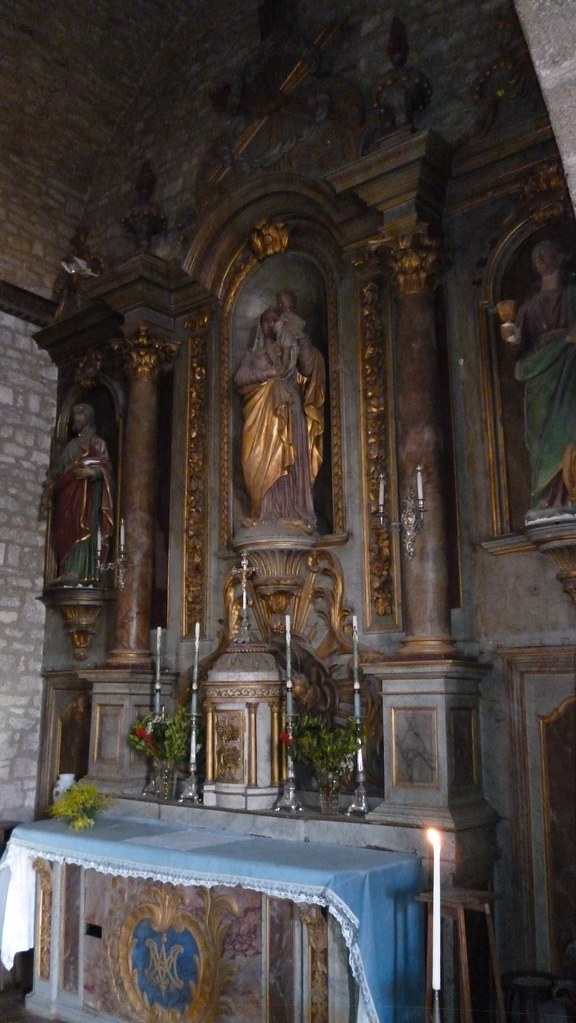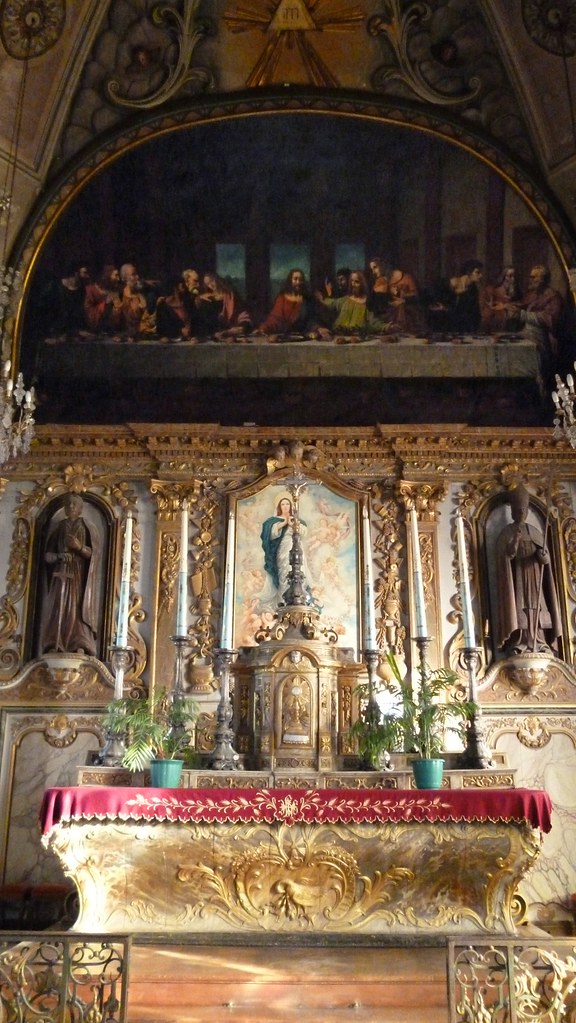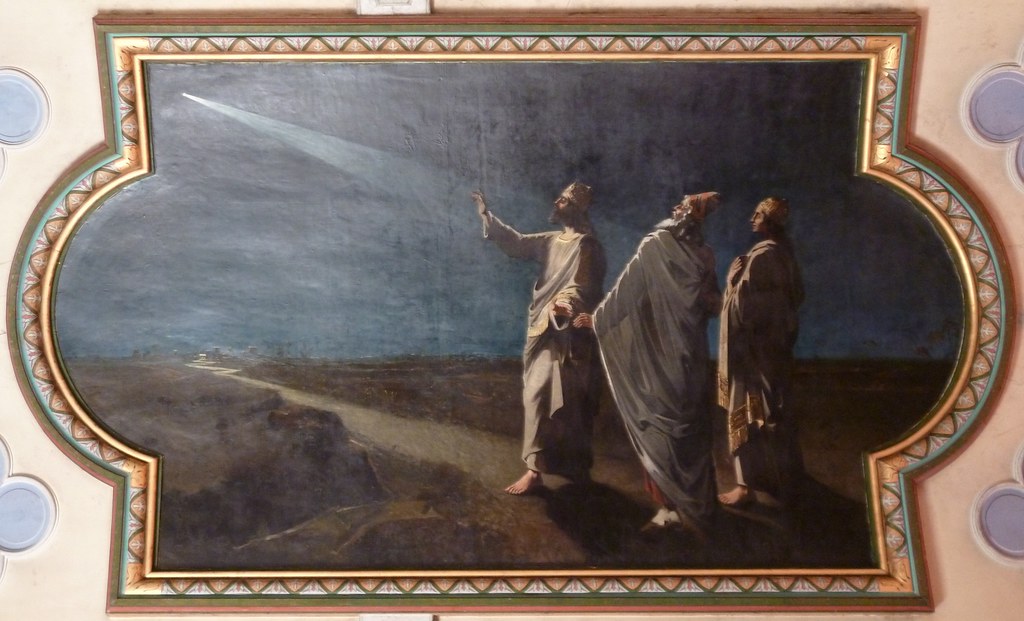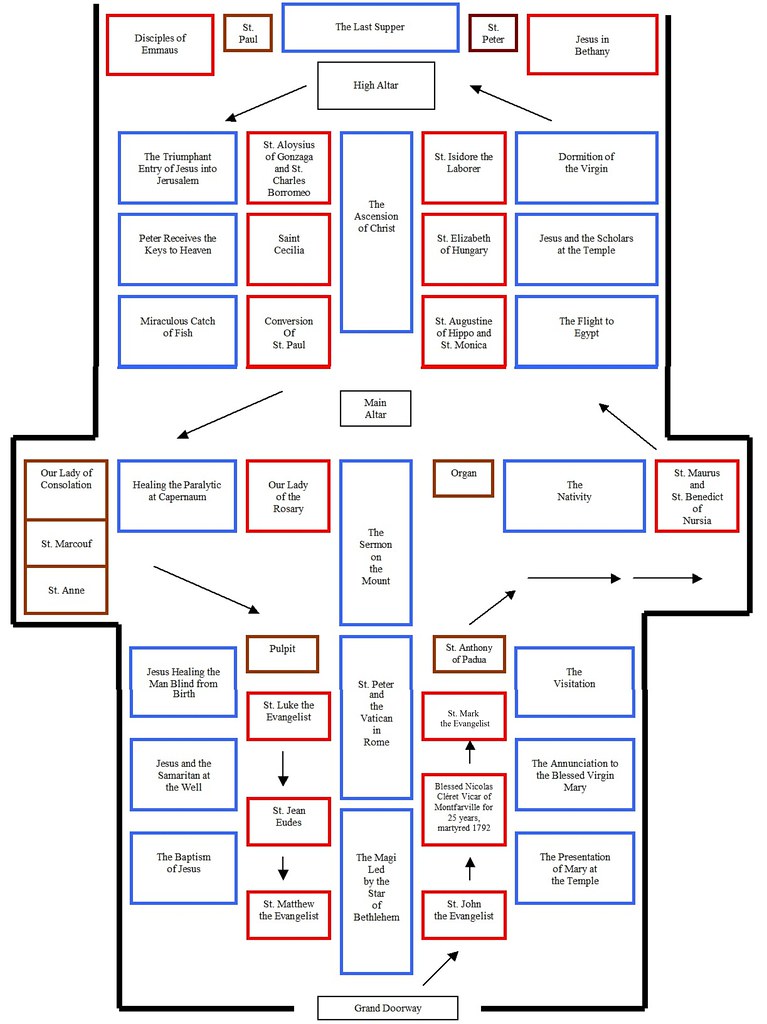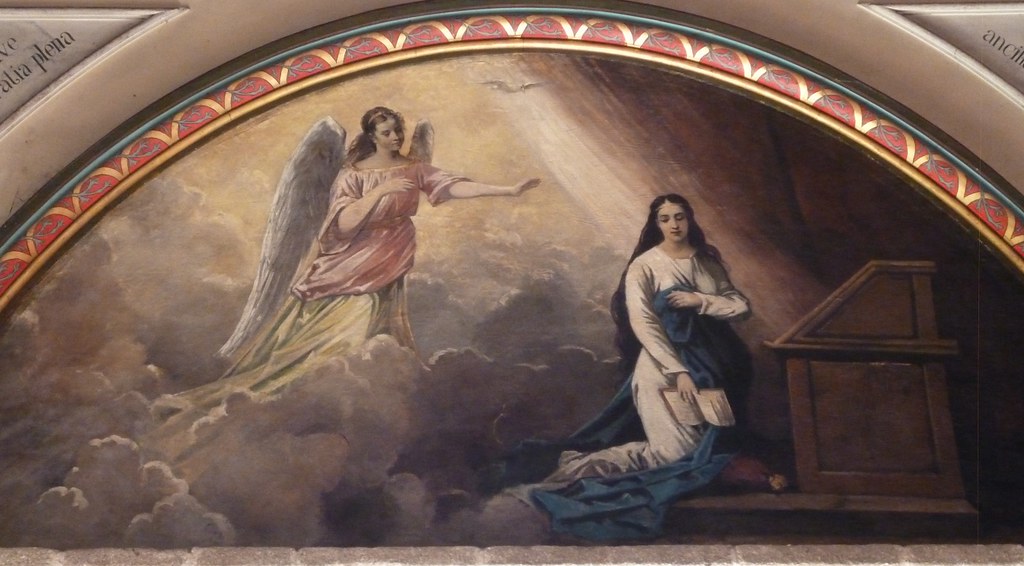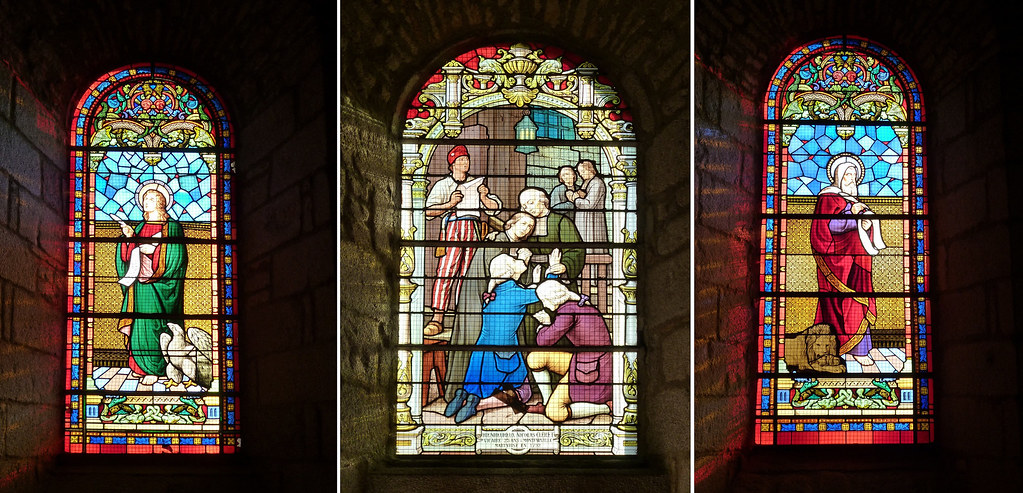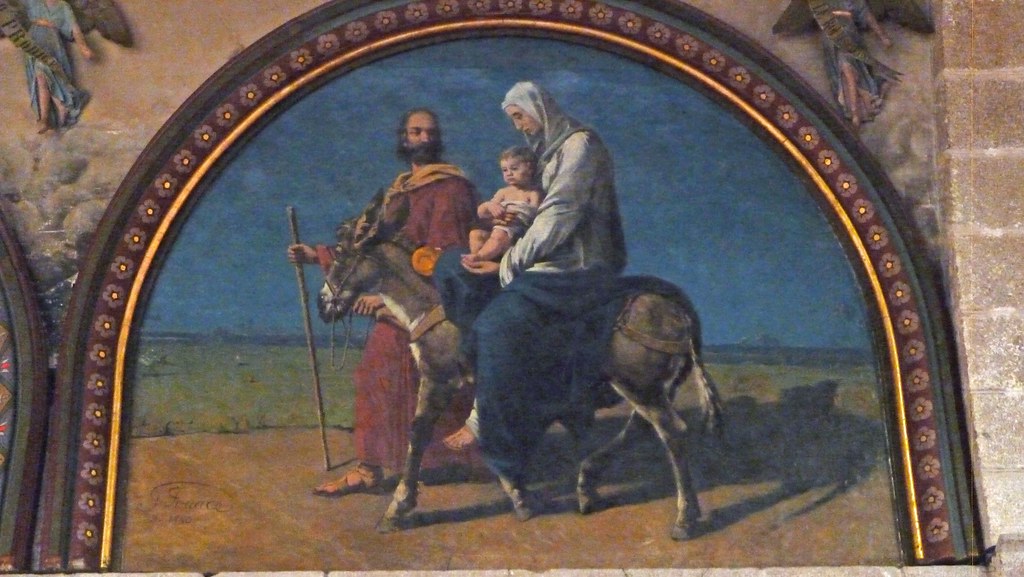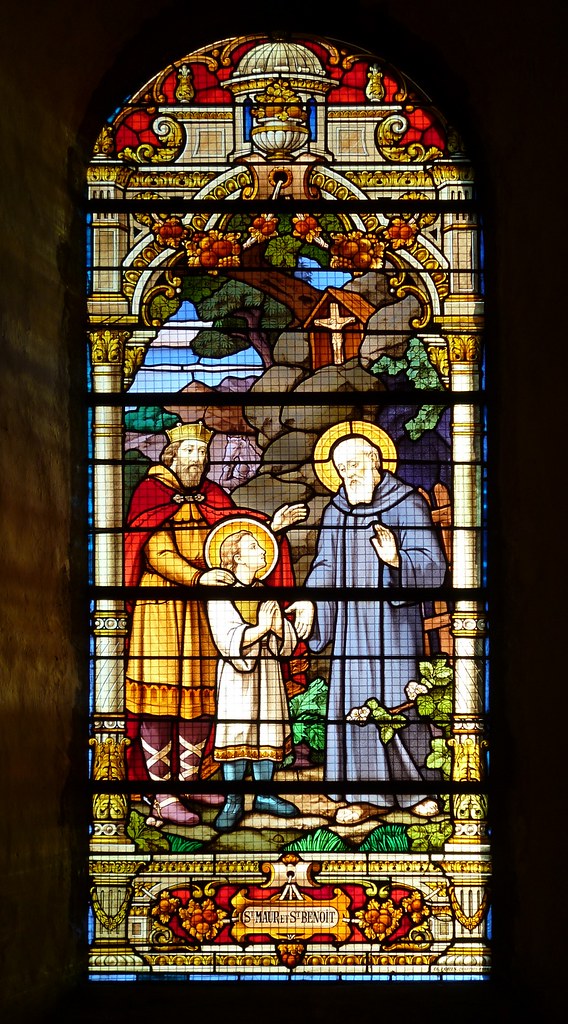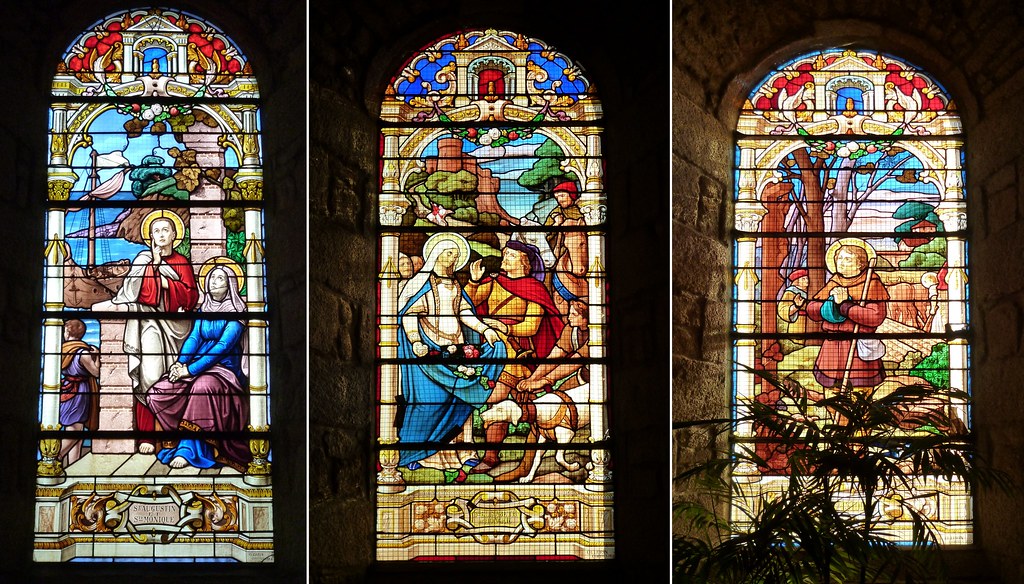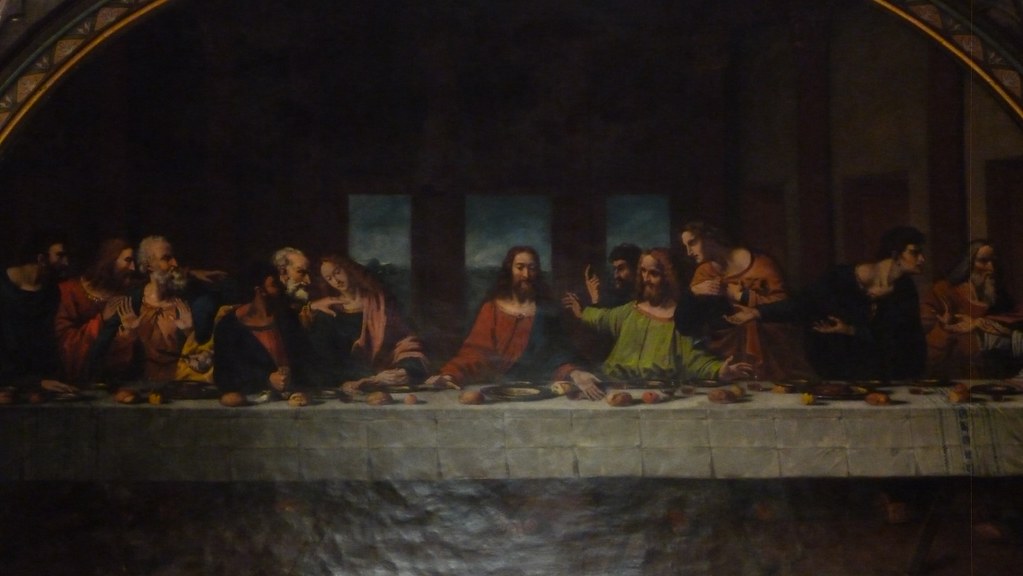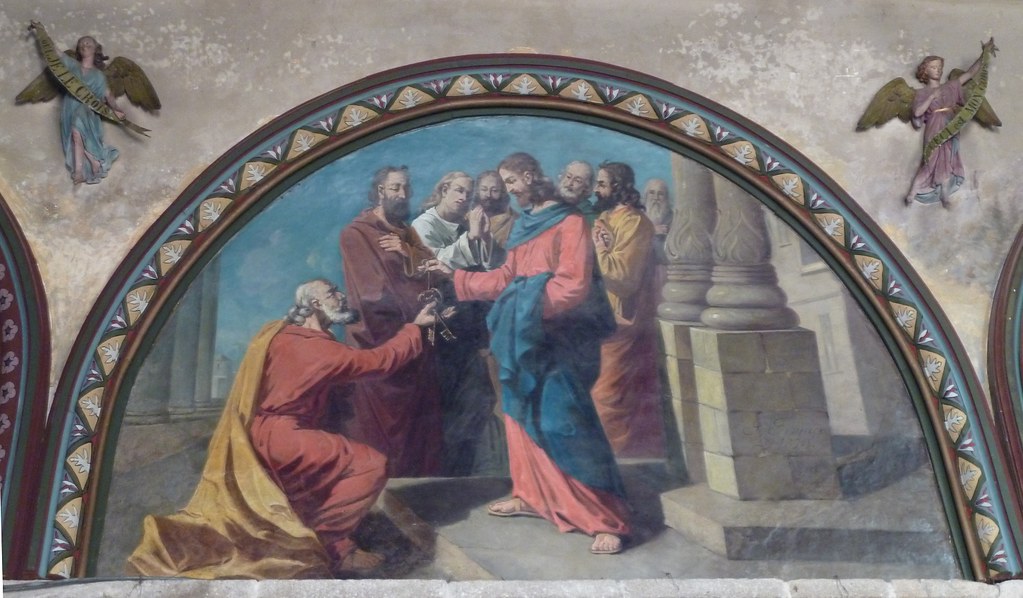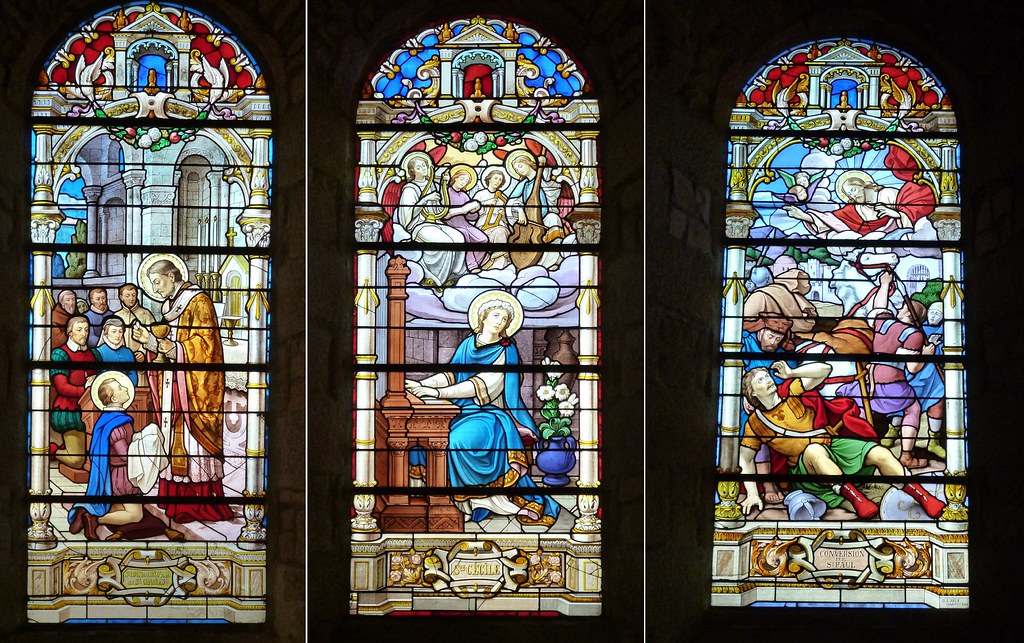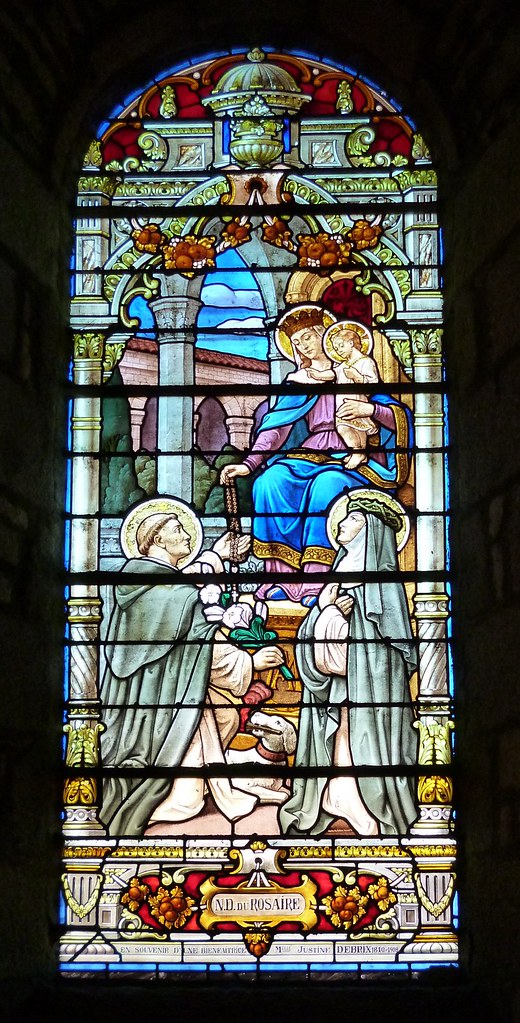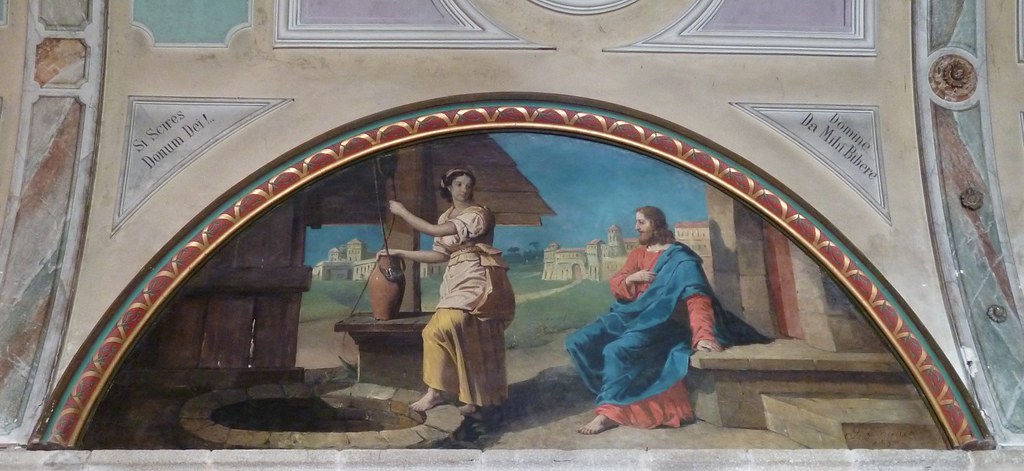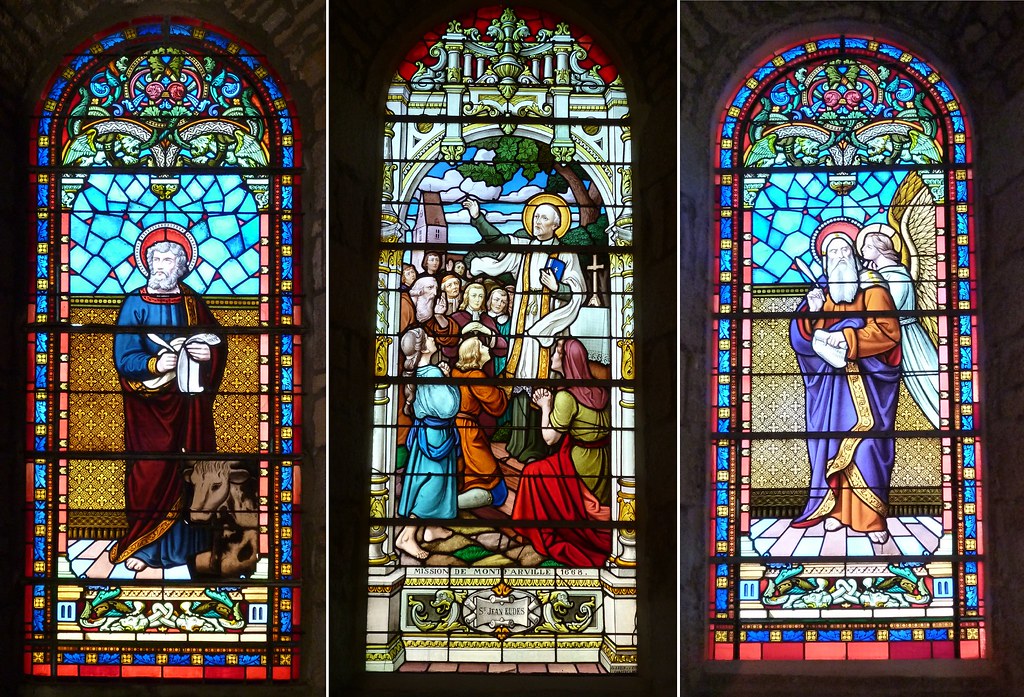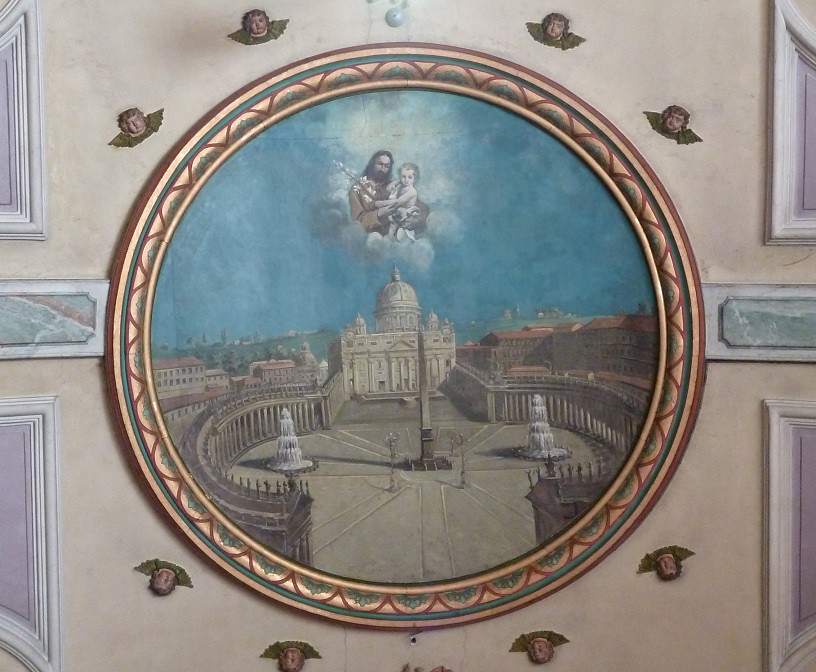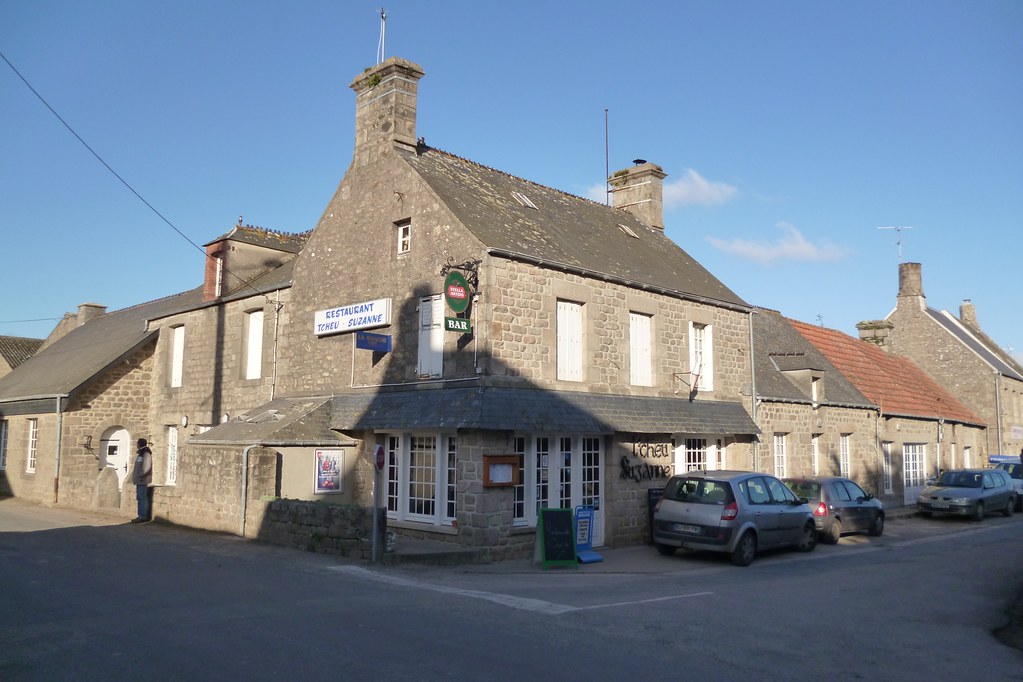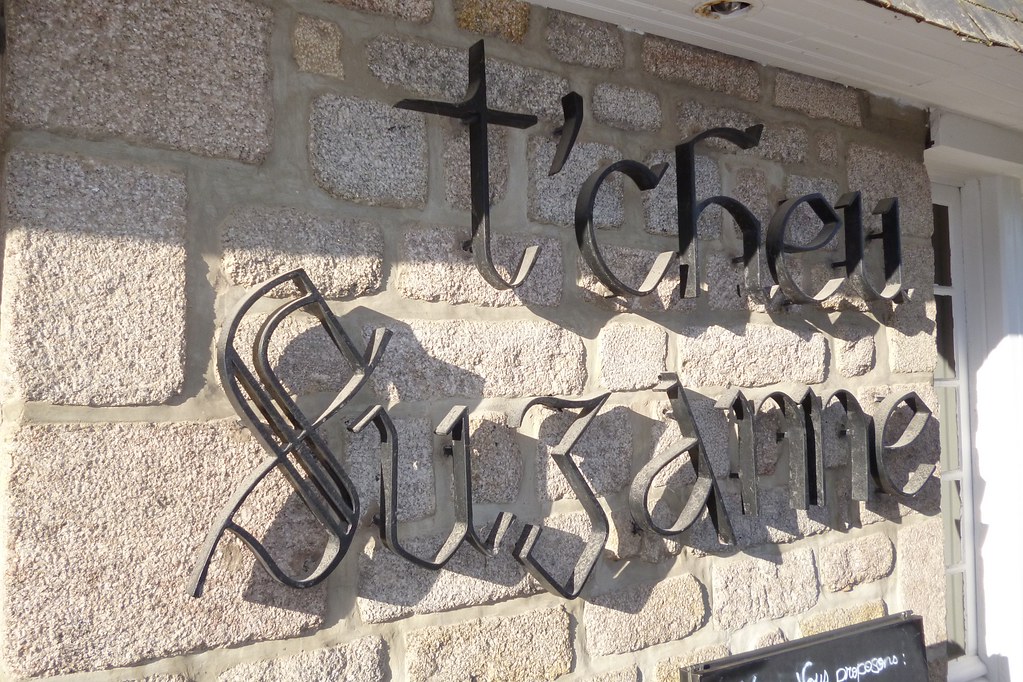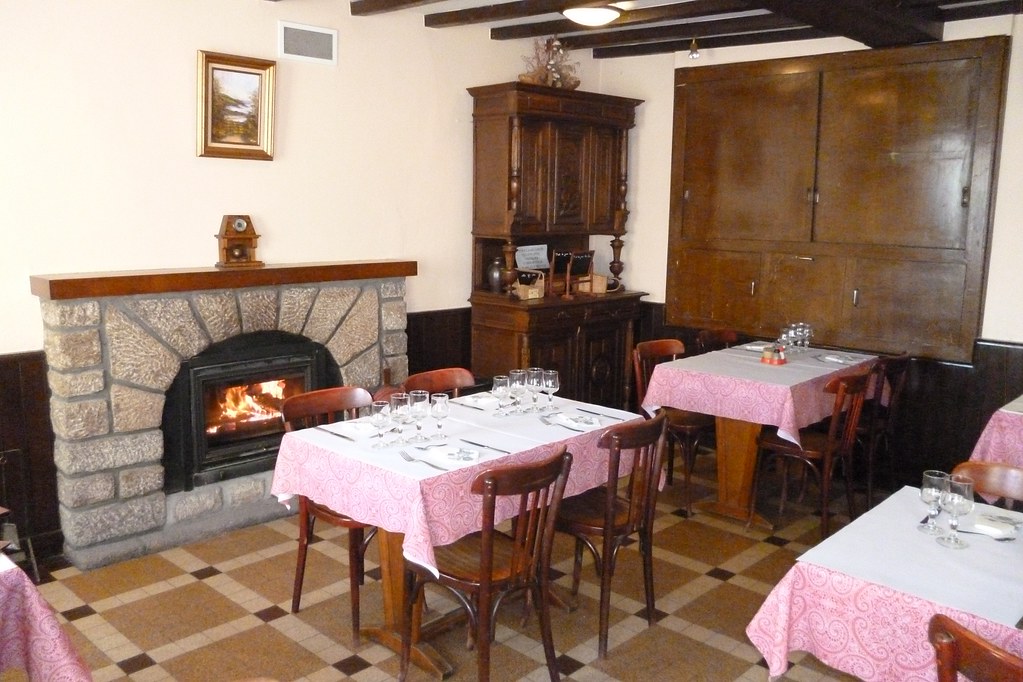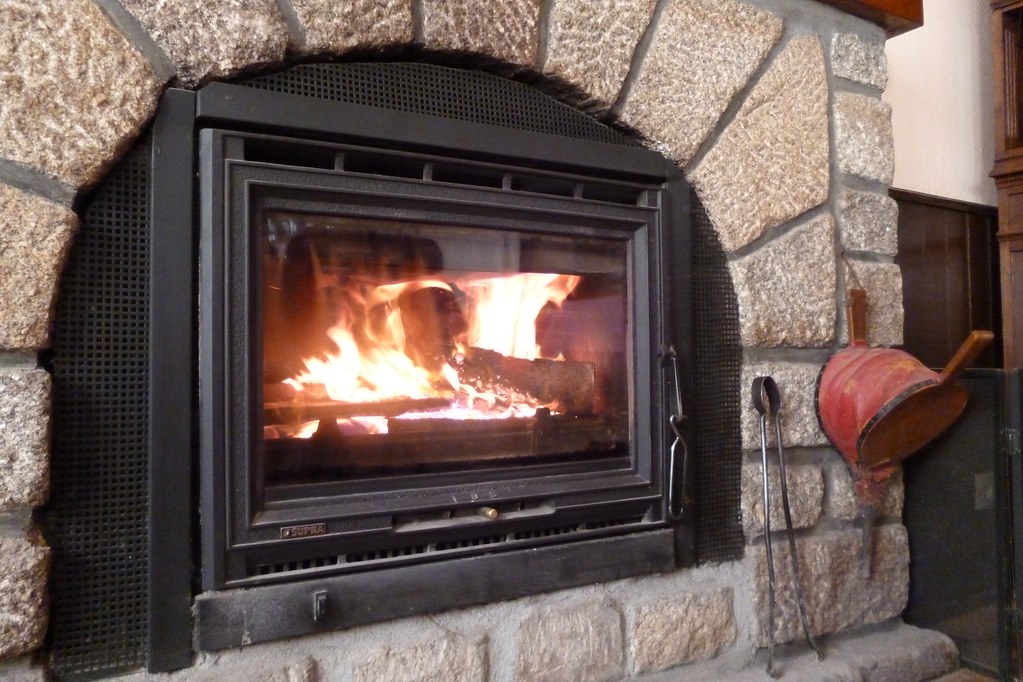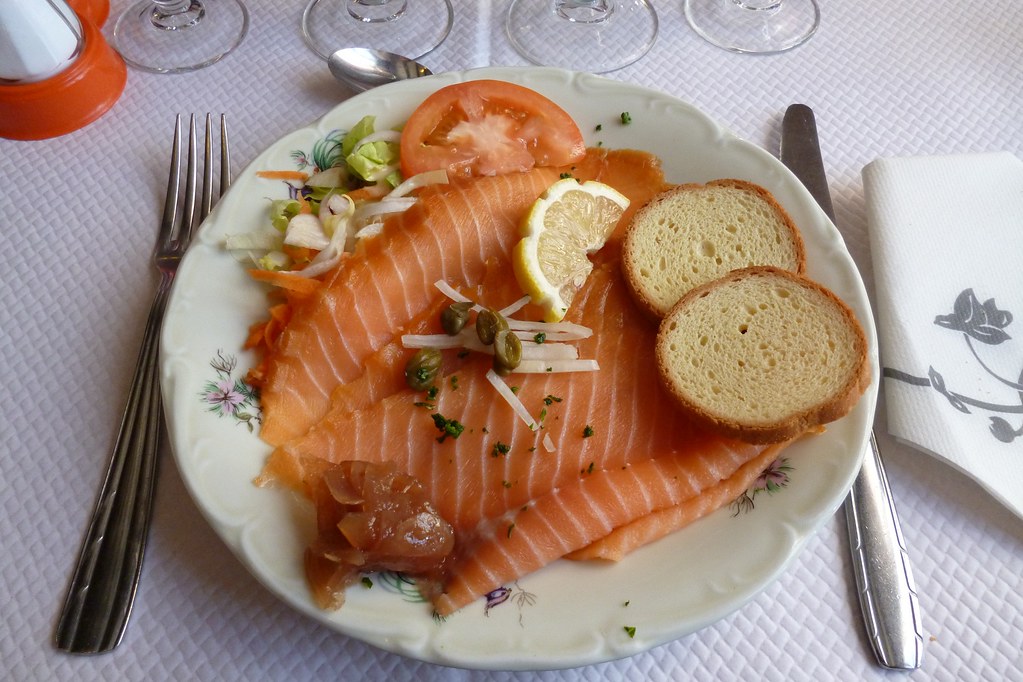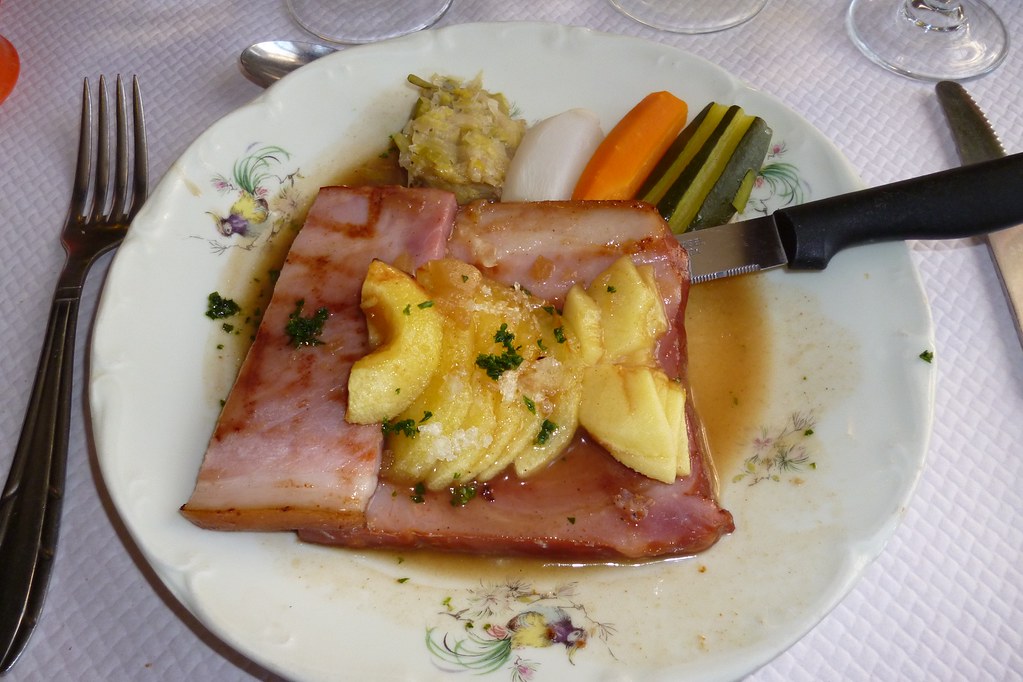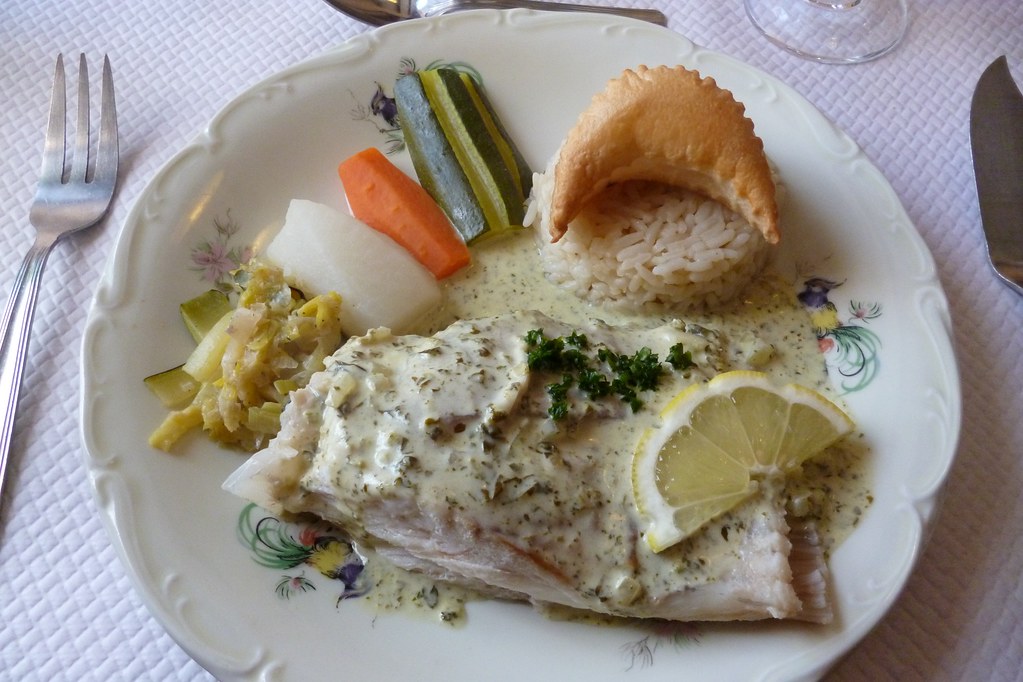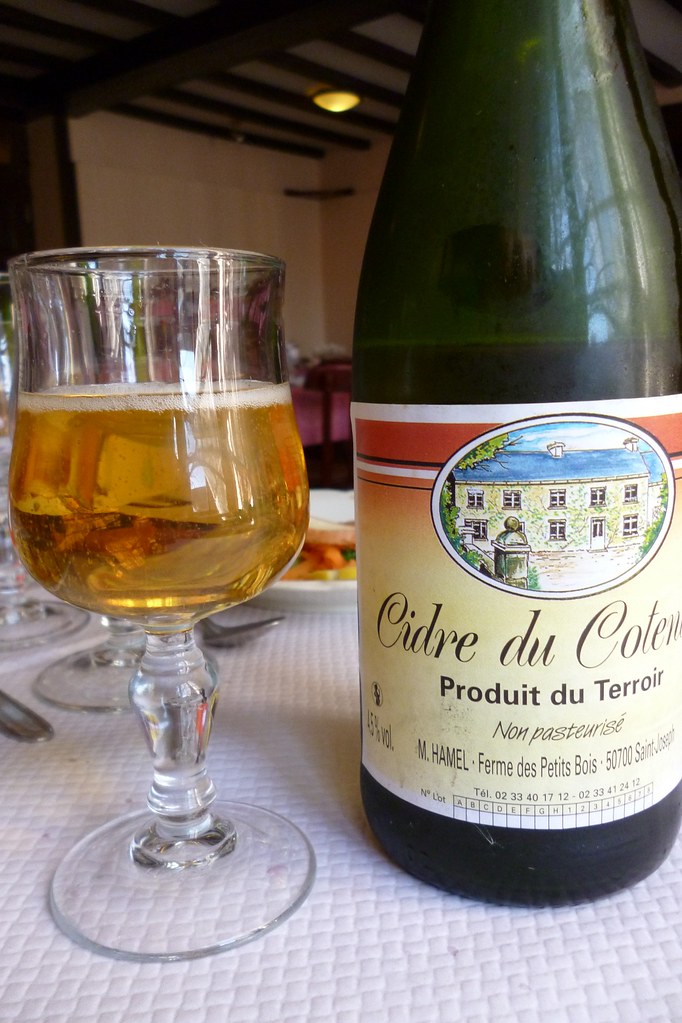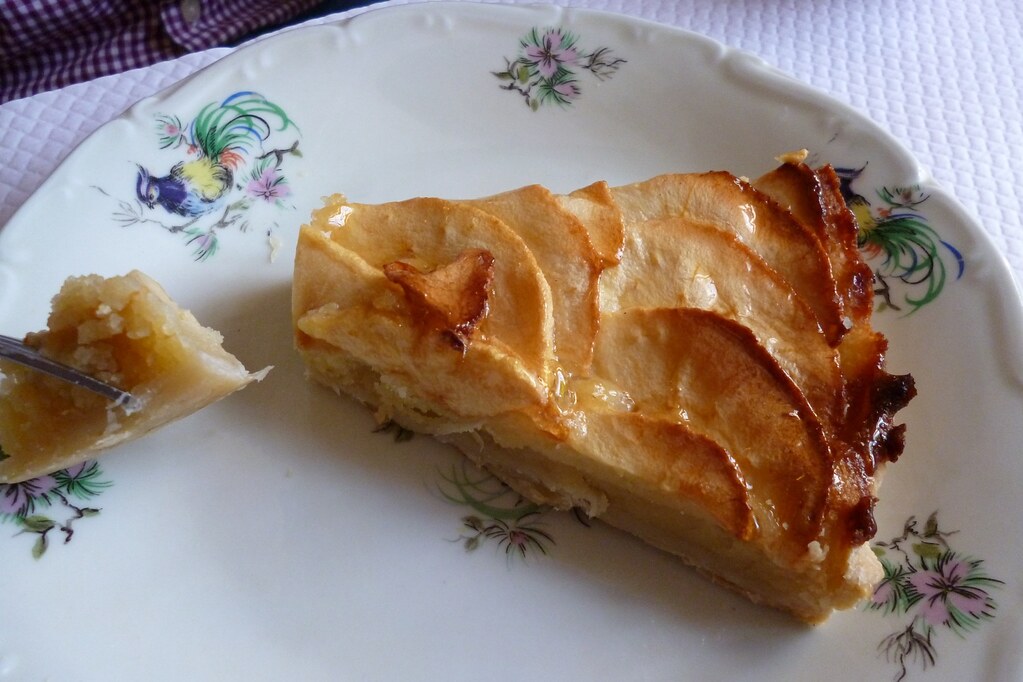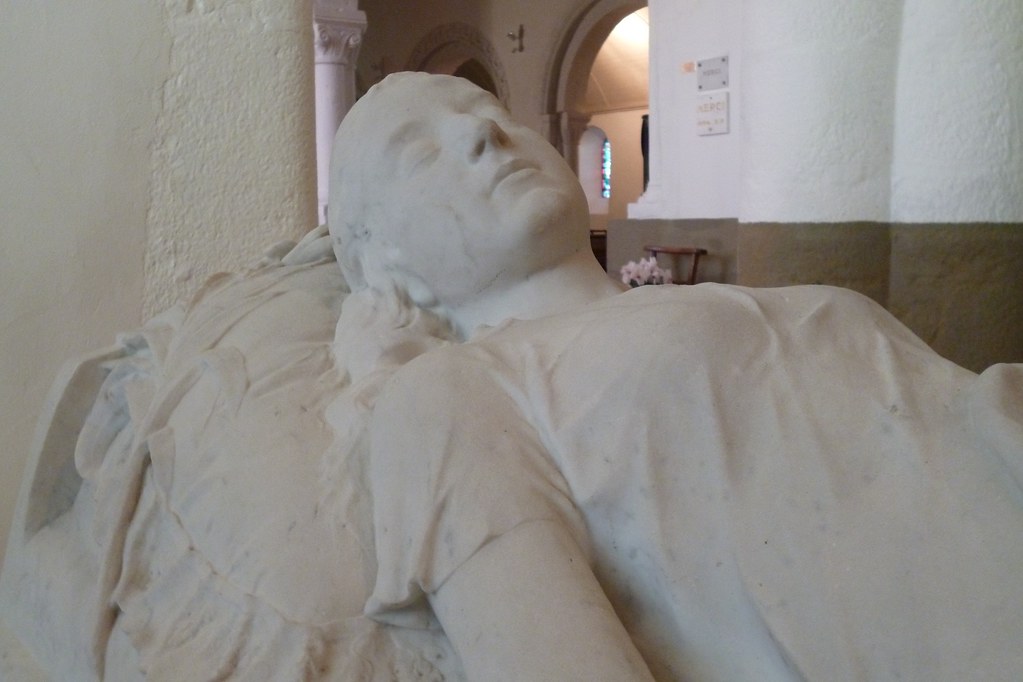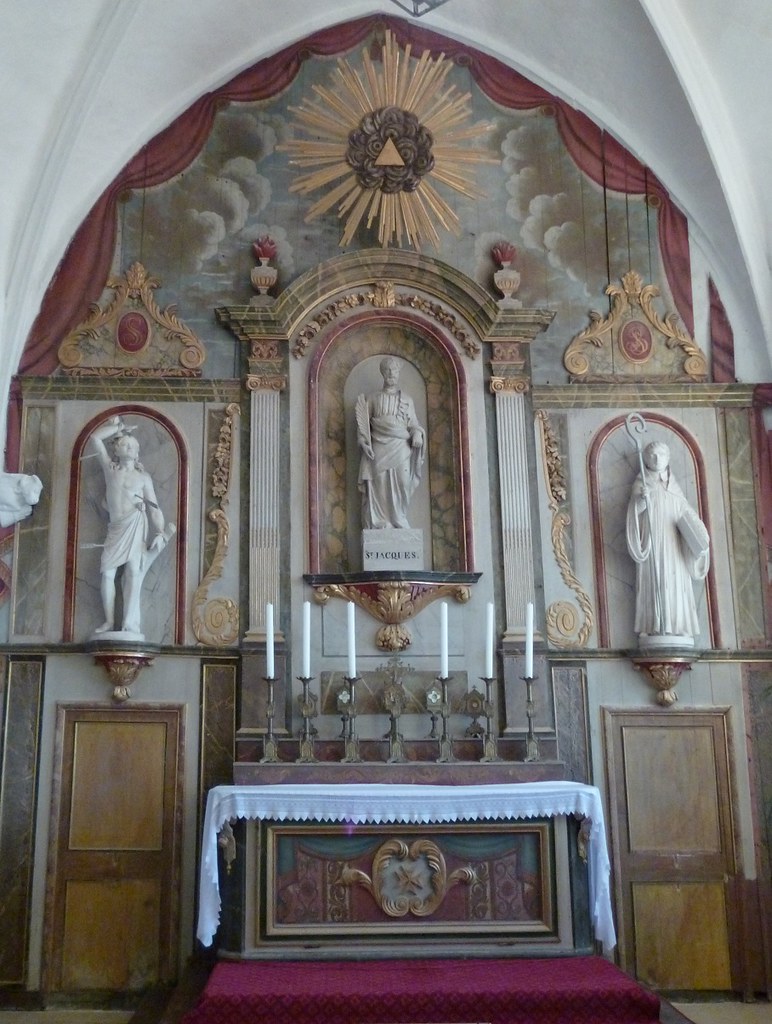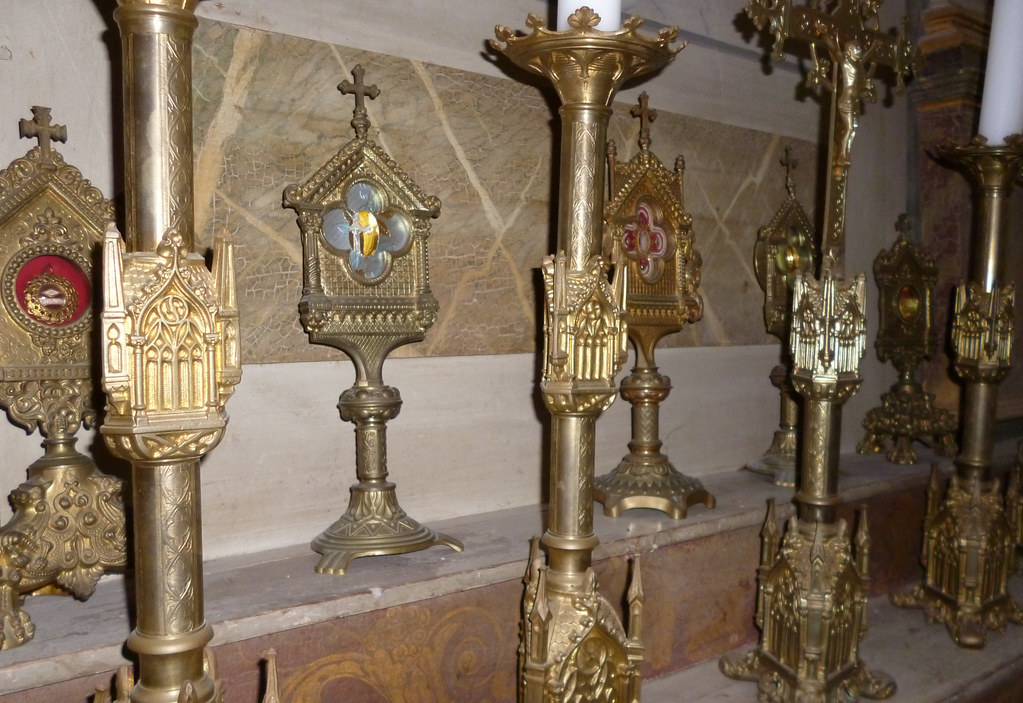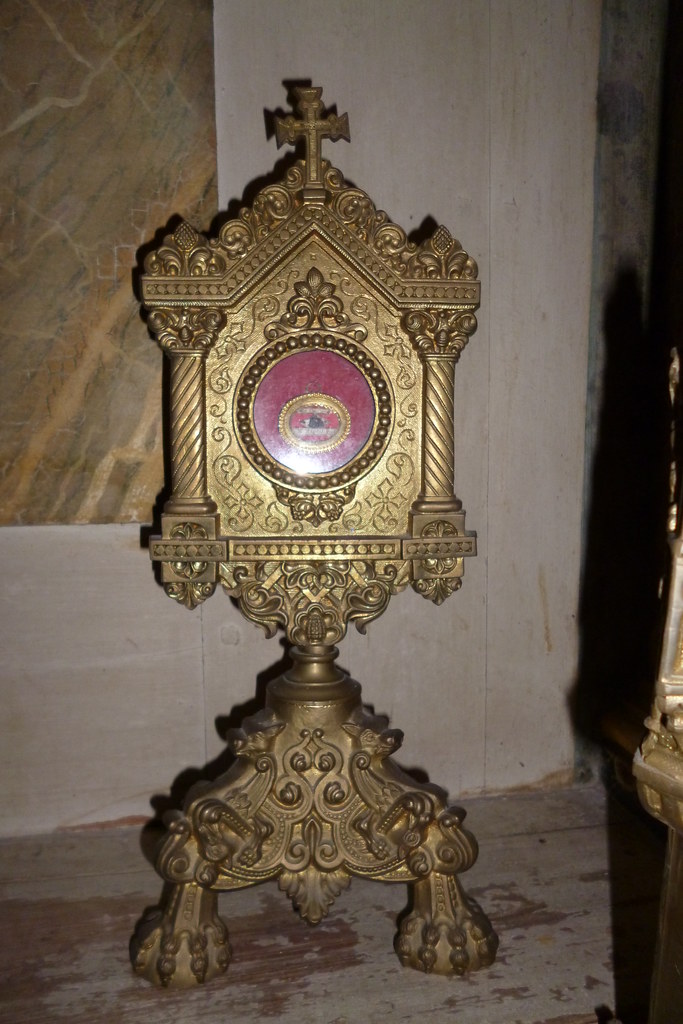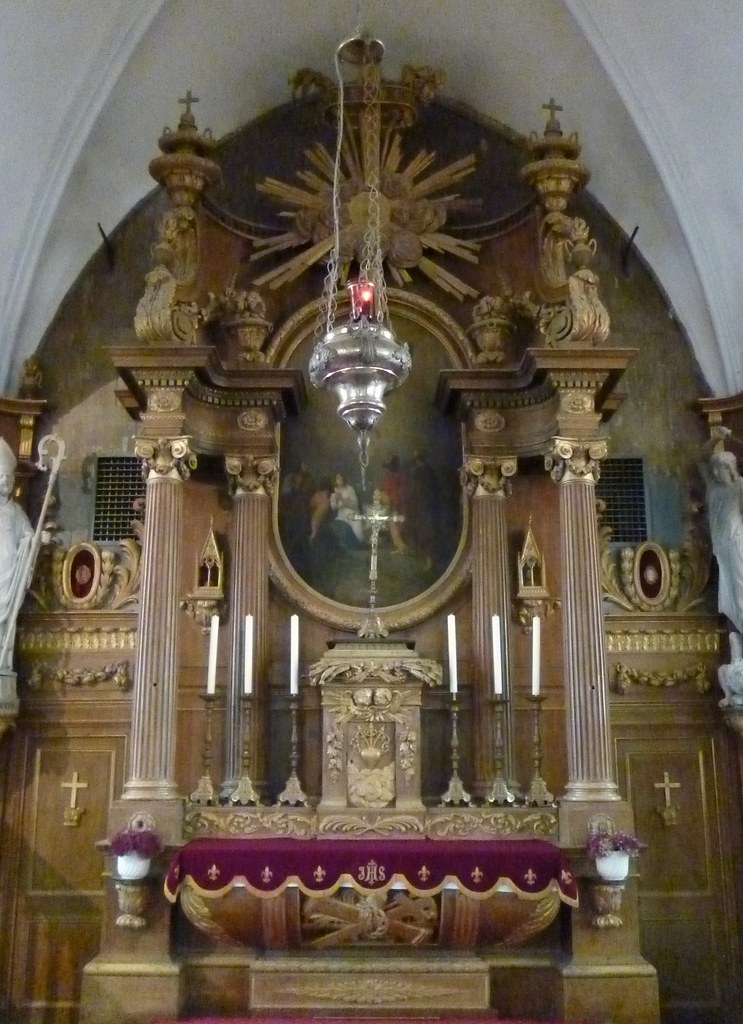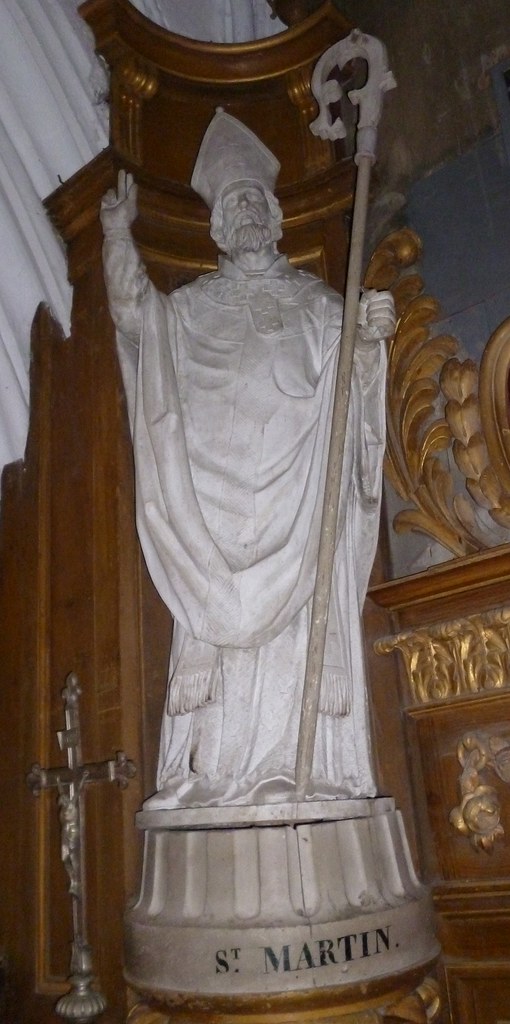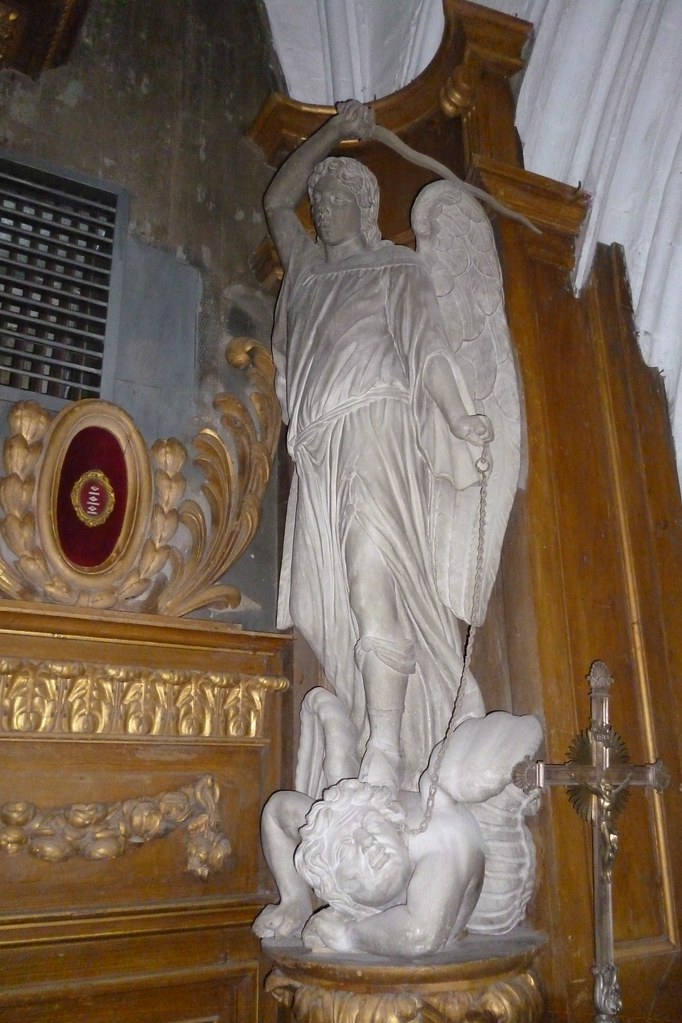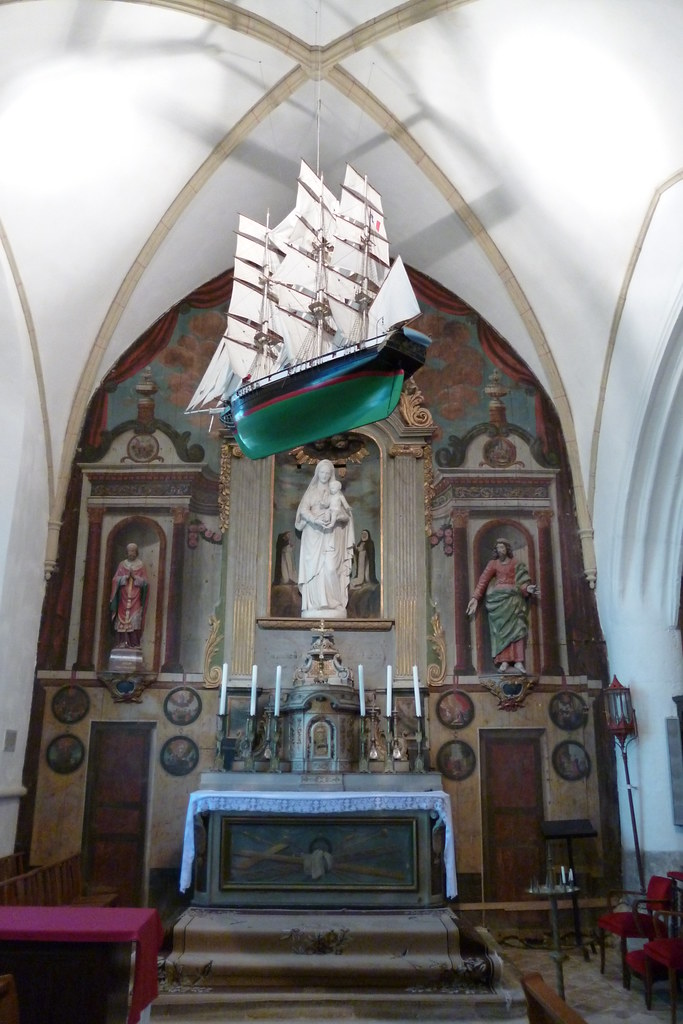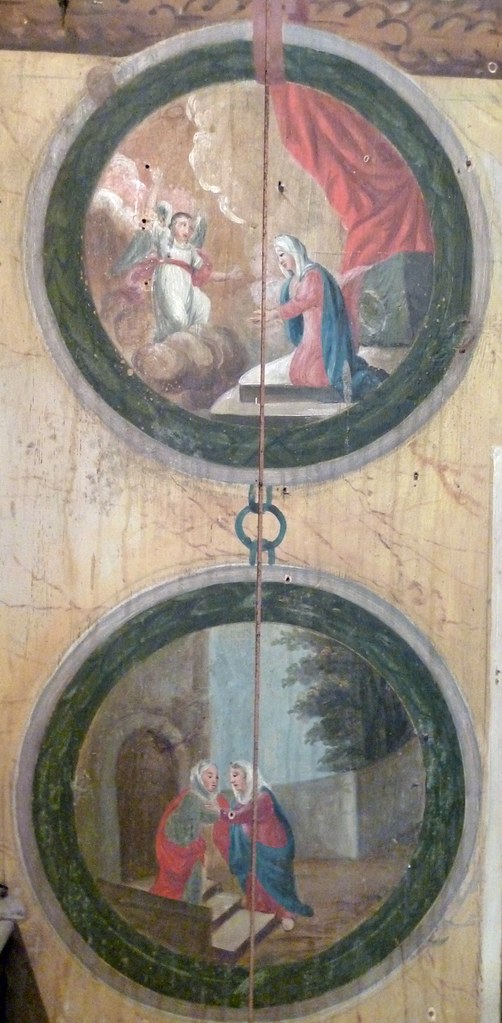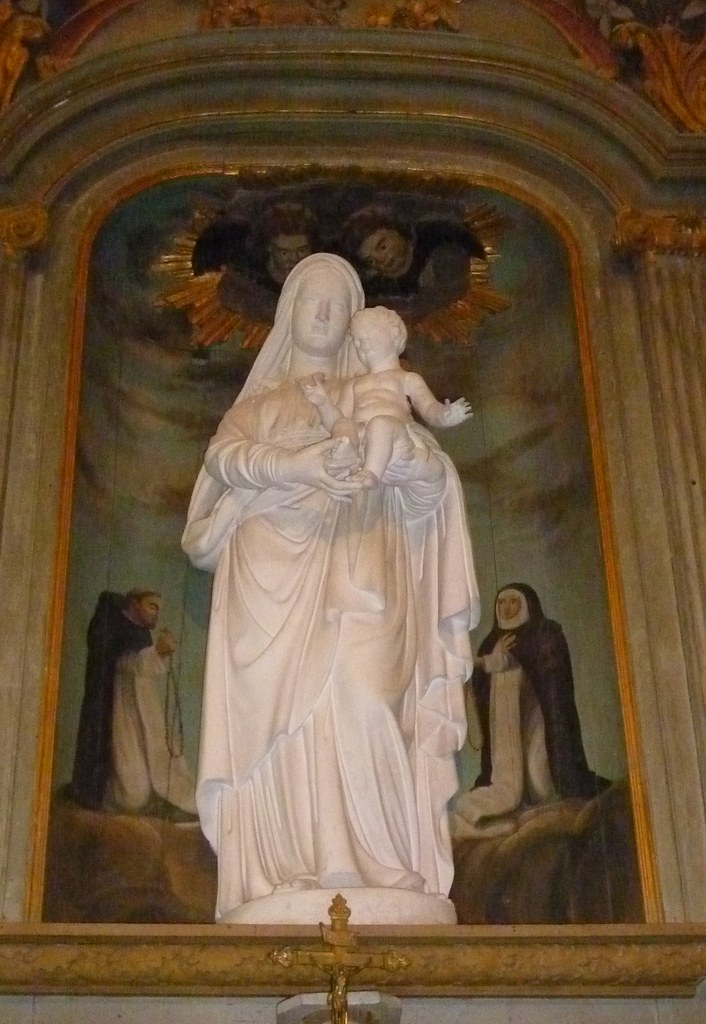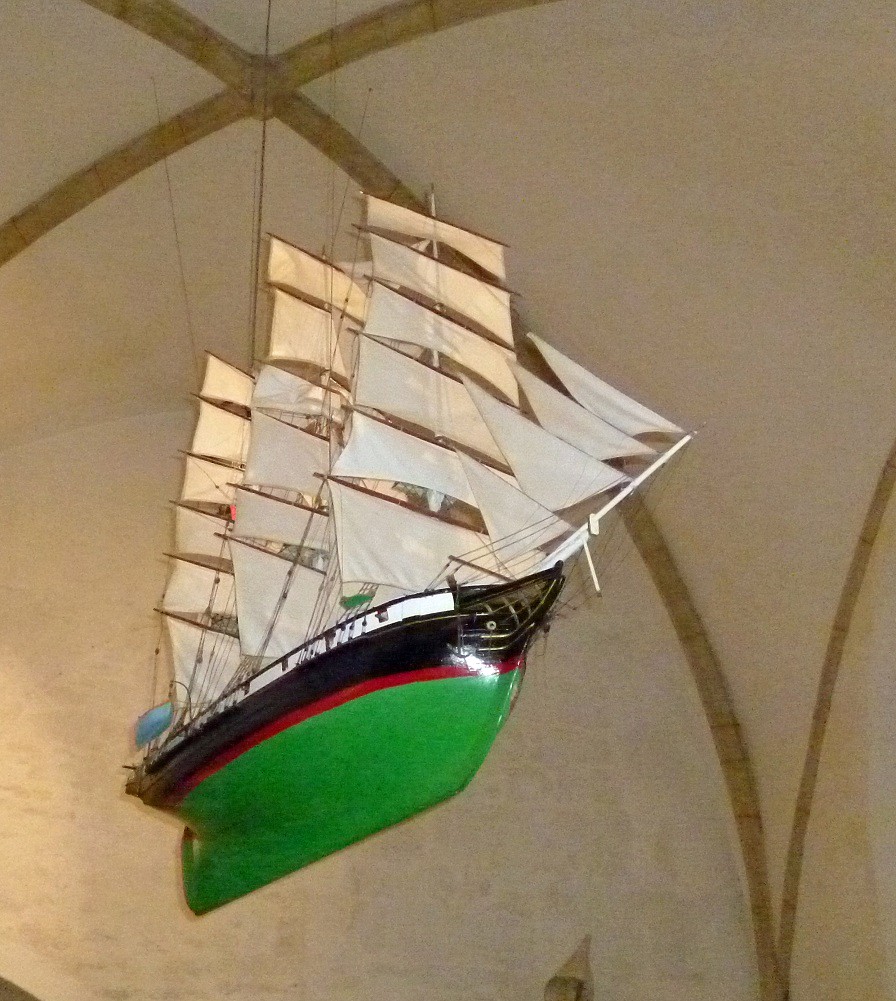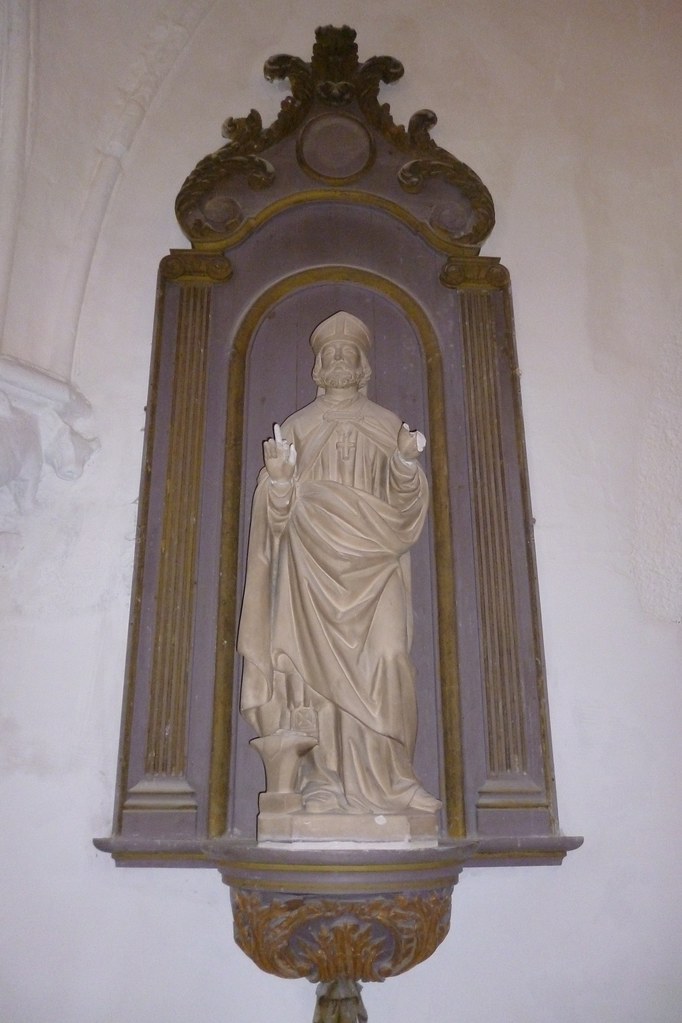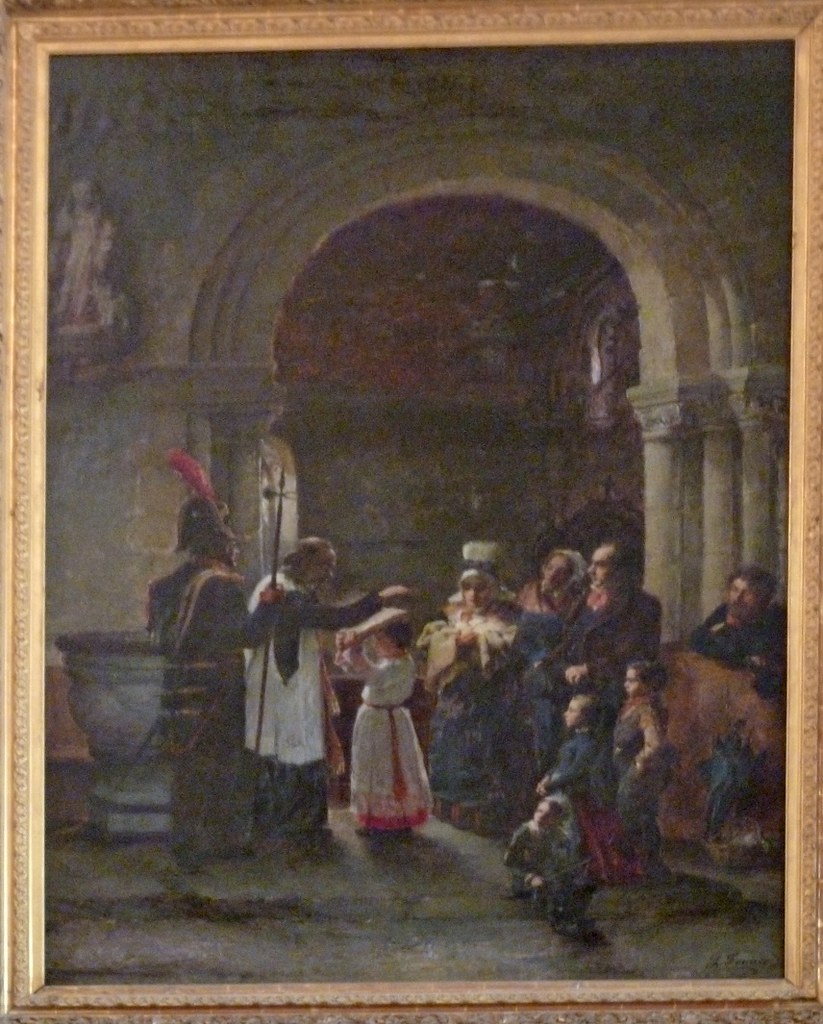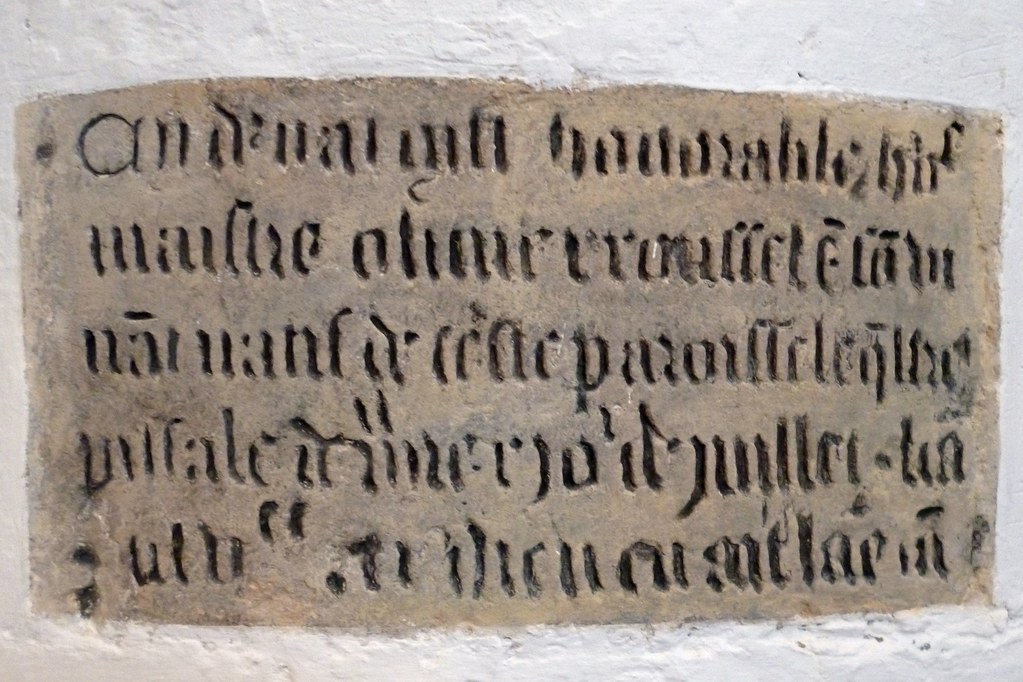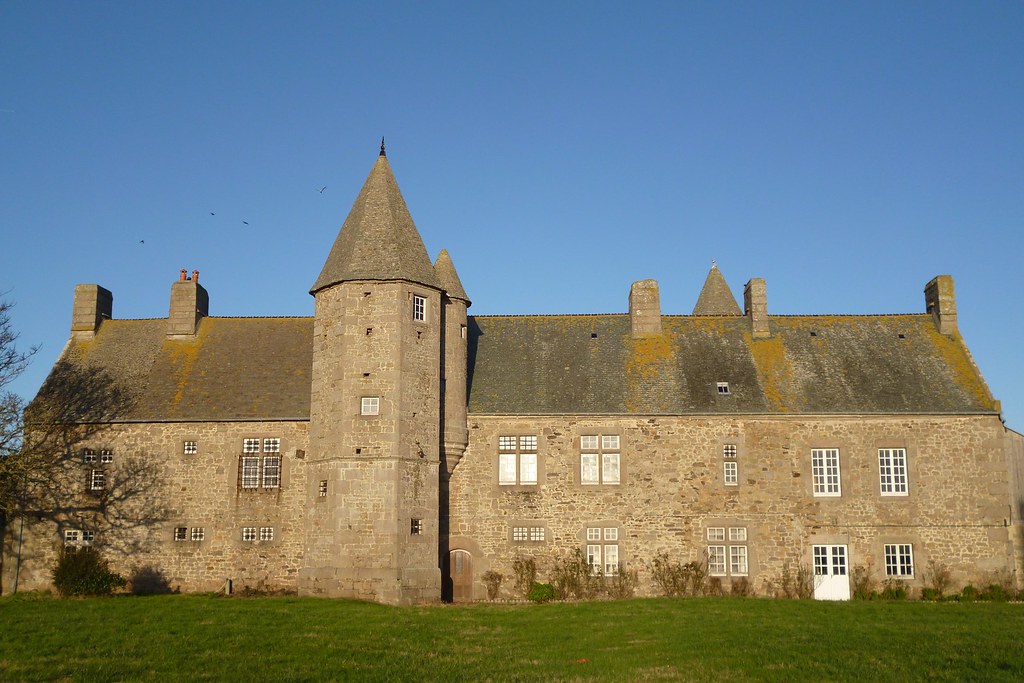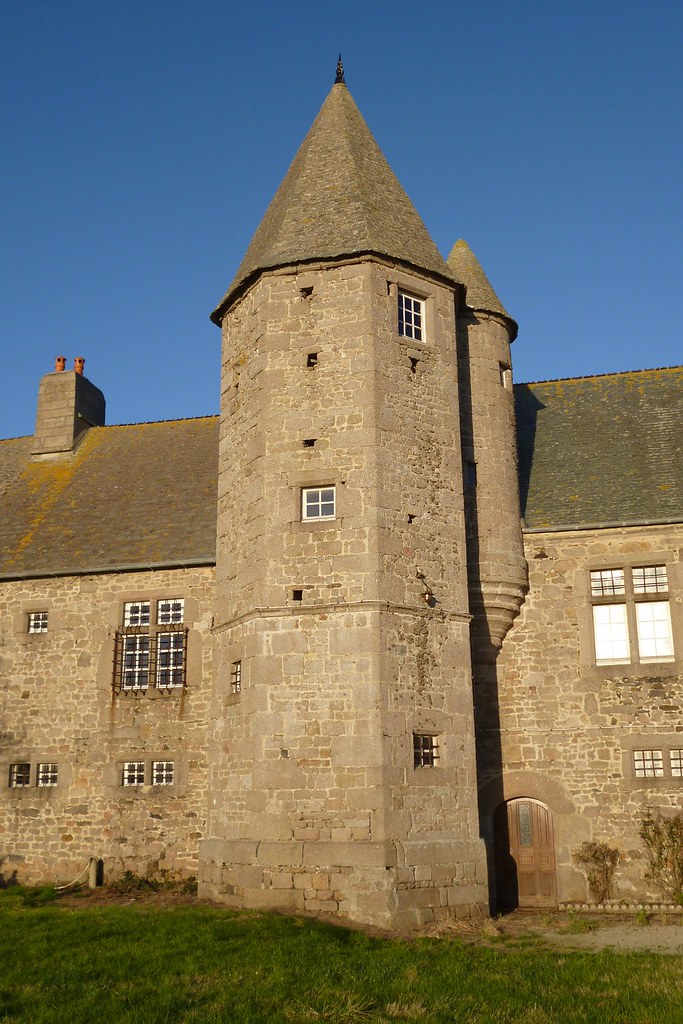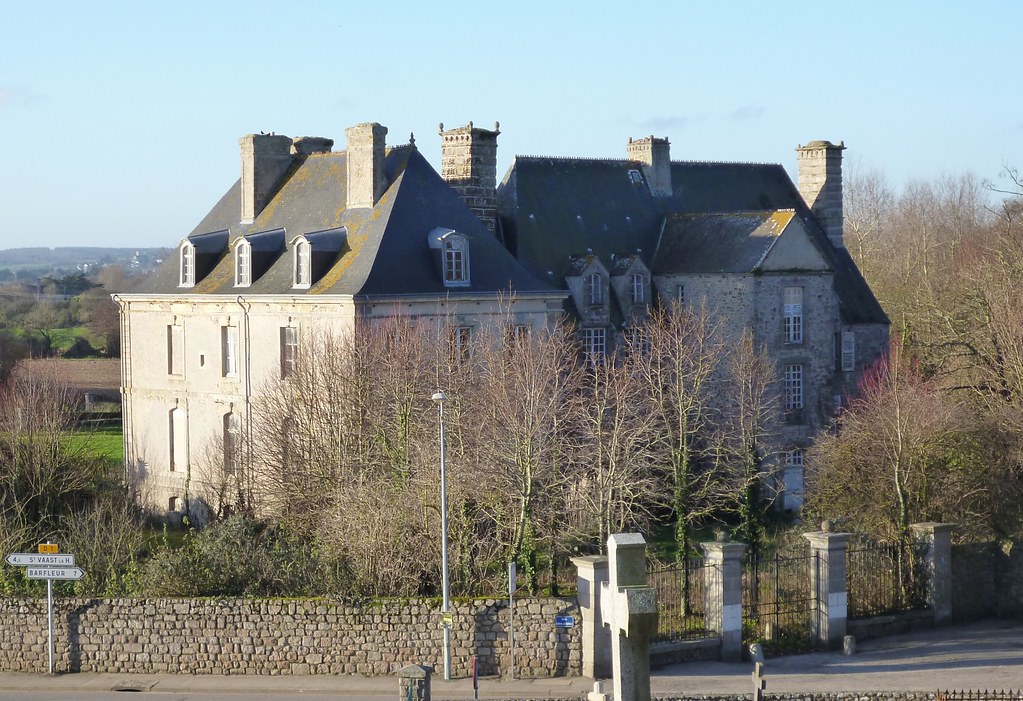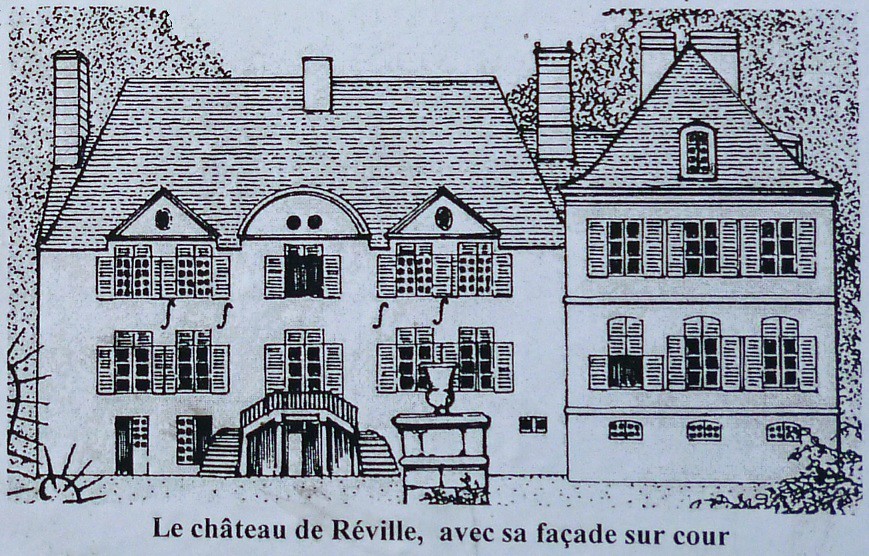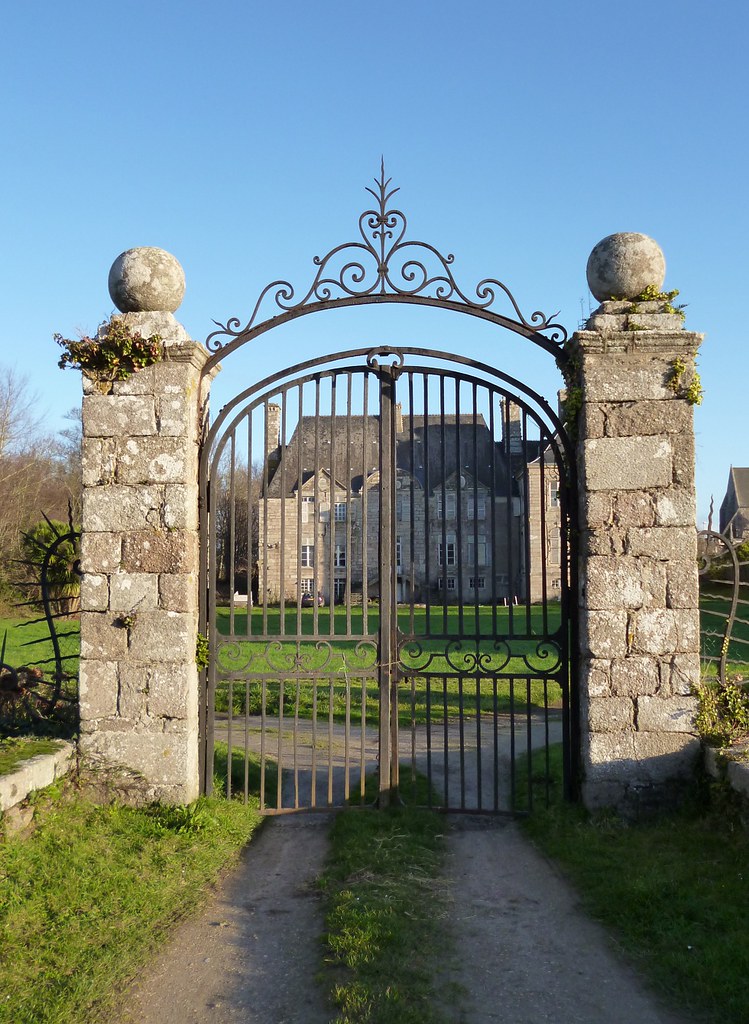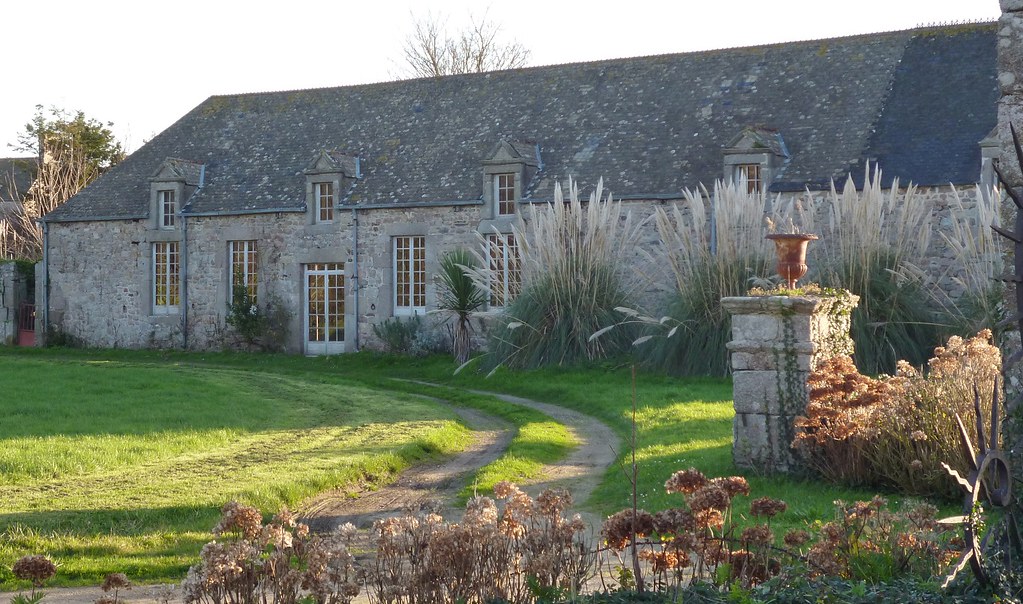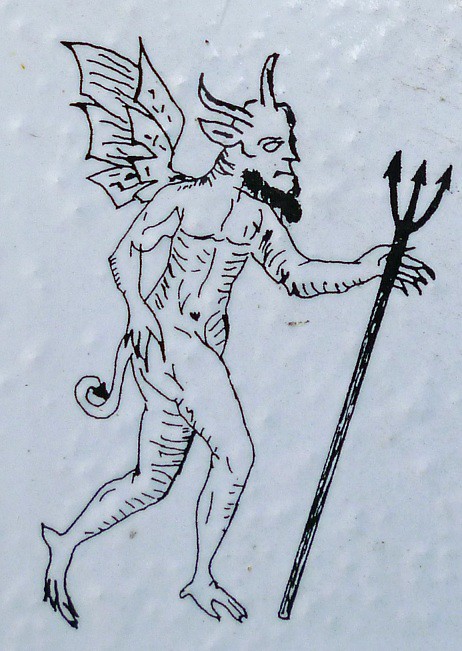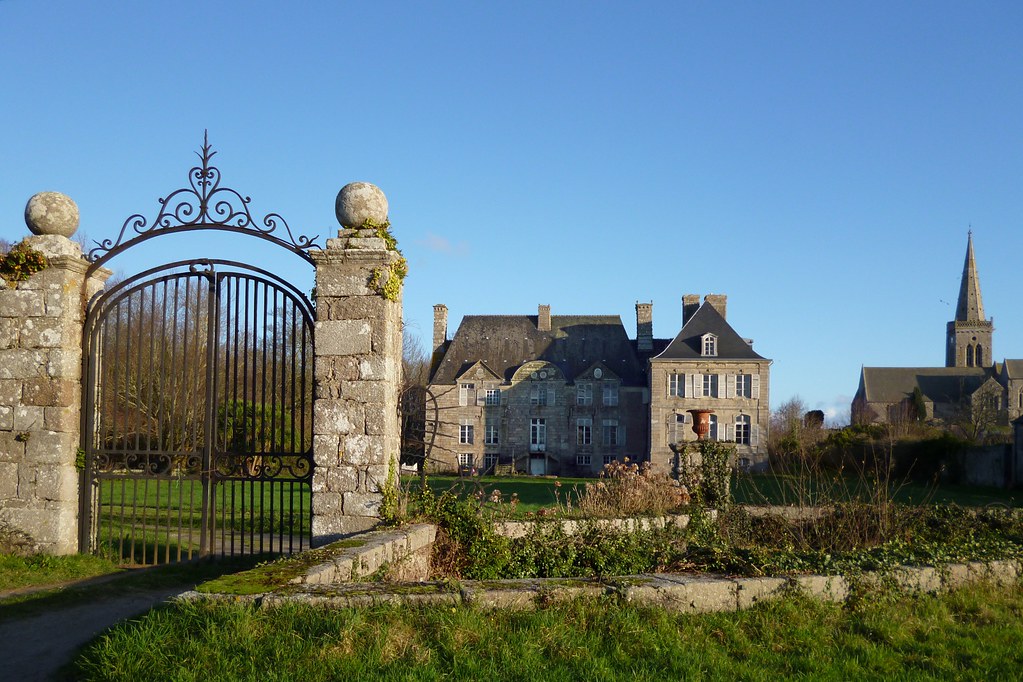July 1 2014
2
01
/07
/July
/2014
13:58
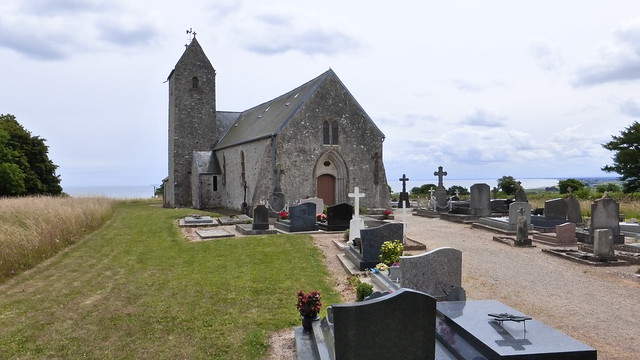
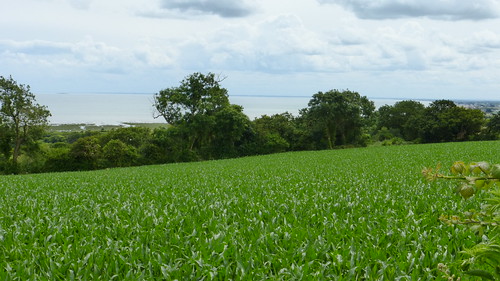 This small church is perched on a hill overlooking the Bay of Morsalines. The peace and quiet makes this a unique spot for meditation. The cemetery looks as grand as it is almost empty; but it is only an appearance. Indeed, it contains old graves from over fifteen centuries. One still finds from time to time Merovingian sarcophagi. This place of worship, one of the oldest of the Cotentin, was placed under the patronage of St-Anthony the Hermit, then later, Saint-Lubin de Chartres and now Notre Dame. The church was rebuilt in the 15th and 16th centuries. In the bell tower, one can see an arrow slit which probably dates from the 14th century. These embrasures enabled people taken refuge in churches to defend themselves against their aggressors. This was particularly common in villages that did not have a castle.
This small church is perched on a hill overlooking the Bay of Morsalines. The peace and quiet makes this a unique spot for meditation. The cemetery looks as grand as it is almost empty; but it is only an appearance. Indeed, it contains old graves from over fifteen centuries. One still finds from time to time Merovingian sarcophagi. This place of worship, one of the oldest of the Cotentin, was placed under the patronage of St-Anthony the Hermit, then later, Saint-Lubin de Chartres and now Notre Dame. The church was rebuilt in the 15th and 16th centuries. In the bell tower, one can see an arrow slit which probably dates from the 14th century. These embrasures enabled people taken refuge in churches to defend themselves against their aggressors. This was particularly common in villages that did not have a castle. 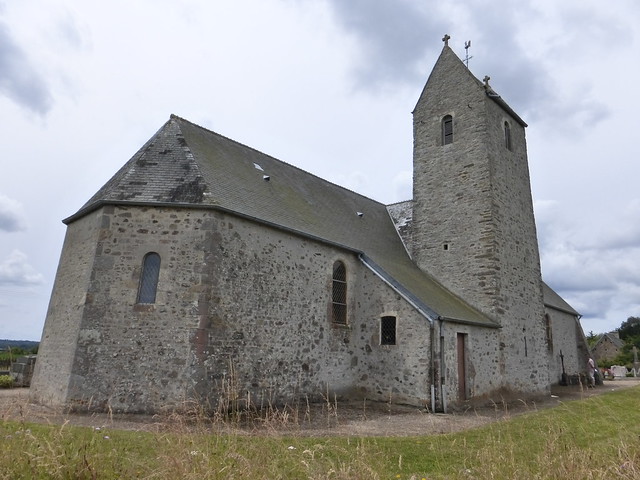 The observation of the exterior walls shows that the church originally included up to six side chapels which probably were funerary chapels. Three of these remain.
The observation of the exterior walls shows that the church originally included up to six side chapels which probably were funerary chapels. Three of these remain. 
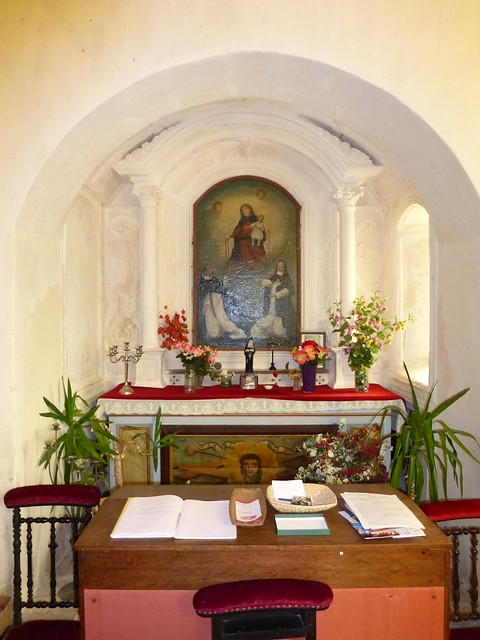
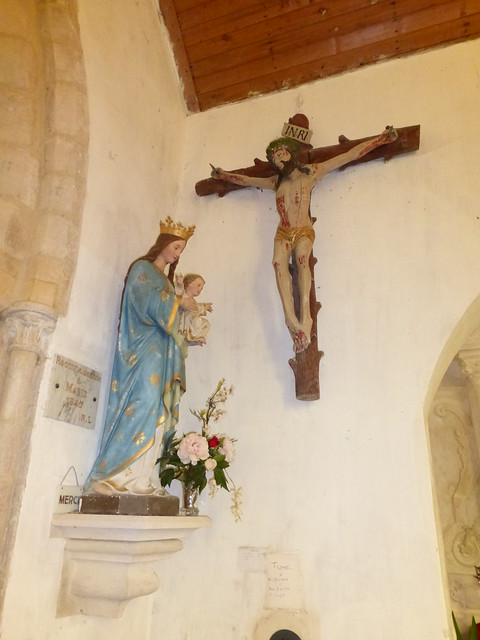
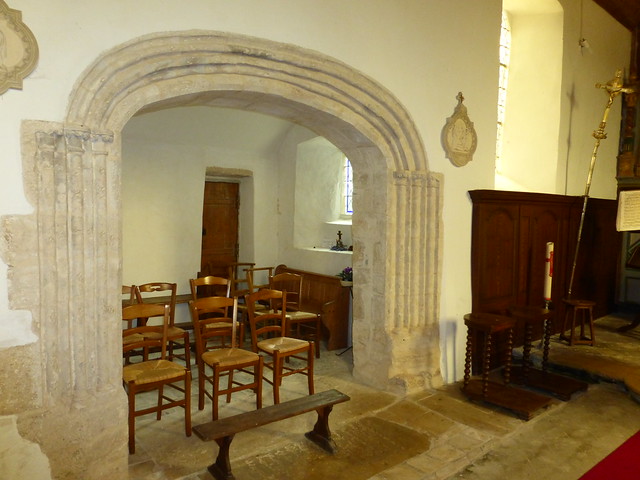 Two are located before the choir while the third one is just under the bell tower and no longer used.
Two are located before the choir while the third one is just under the bell tower and no longer used. 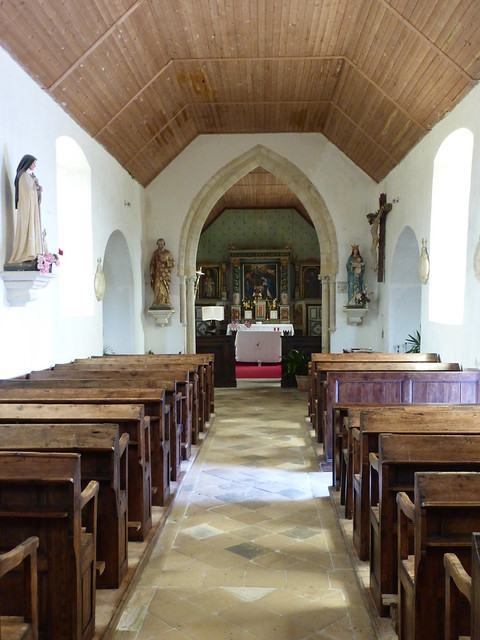 The crucifix, now hanging on the wall, was actually part of a rood beam that was once above the choir. It dates from the 15th century.
The crucifix, now hanging on the wall, was actually part of a rood beam that was once above the choir. It dates from the 15th century. 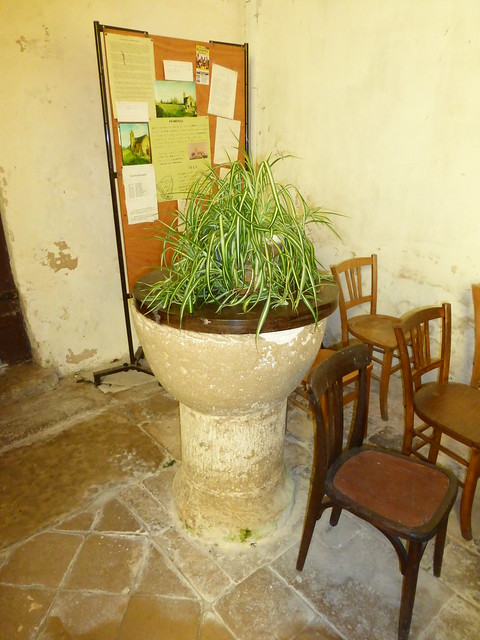 Like many other churches in the region, the baptismal font can be found in the western portion of the church--in this case, just near the main portal.
Like many other churches in the region, the baptismal font can be found in the western portion of the church--in this case, just near the main portal. 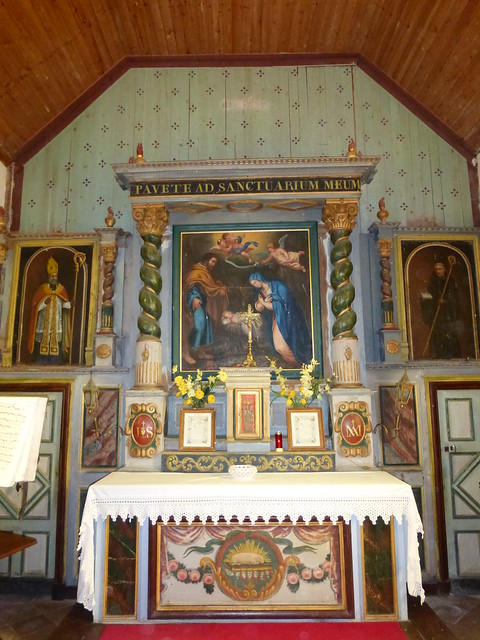 The high altar is really something to see. Although it isn't greatly ornamental, it has a charm all of its own with an oil painting depicting the Nativity just above the tabernacle.
The high altar is really something to see. Although it isn't greatly ornamental, it has a charm all of its own with an oil painting depicting the Nativity just above the tabernacle. 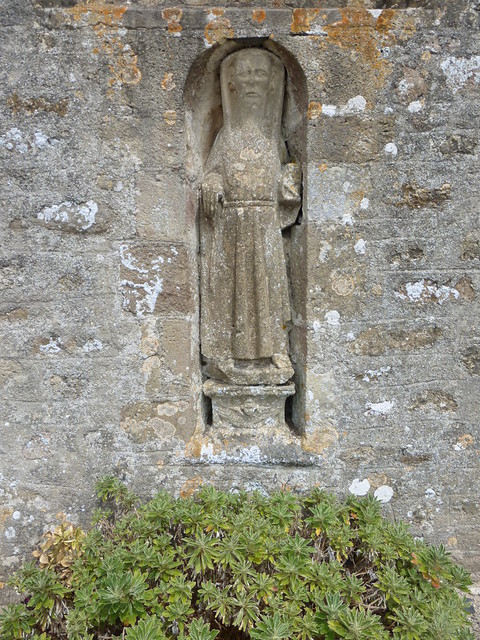 This stone statue of St-Anthony the Hermit is encased directly in the wall of the sanctuary along the north side of the church. Born in the middle of the 3rd century in Upper Egypt, he retired early to the desert where the devil tried several times and in different forms to tempt him away from his faith. Anthony resisted. Later, he welcomed disciples who wished to join him and live ascetic life in the desert. But the taste of solitude once more overtook him and he left his followers for another solitary life in the desert near the Red Sea where he lived until the age of 100. Over the centuries Anthony the Hermit has become a holy healer. He was invoked against the plague, leprosy, scabies and venereal diseases. His healing power also had an effect on animals, including pigs and horses. He is generally depicted as an old man wearing a frock with a cap bearing the Greek letter Tau and sometimes a bell. He is very often accompanied by a pig (an evil boar that he domesticated).
This stone statue of St-Anthony the Hermit is encased directly in the wall of the sanctuary along the north side of the church. Born in the middle of the 3rd century in Upper Egypt, he retired early to the desert where the devil tried several times and in different forms to tempt him away from his faith. Anthony resisted. Later, he welcomed disciples who wished to join him and live ascetic life in the desert. But the taste of solitude once more overtook him and he left his followers for another solitary life in the desert near the Red Sea where he lived until the age of 100. Over the centuries Anthony the Hermit has become a holy healer. He was invoked against the plague, leprosy, scabies and venereal diseases. His healing power also had an effect on animals, including pigs and horses. He is generally depicted as an old man wearing a frock with a cap bearing the Greek letter Tau and sometimes a bell. He is very often accompanied by a pig (an evil boar that he domesticated).
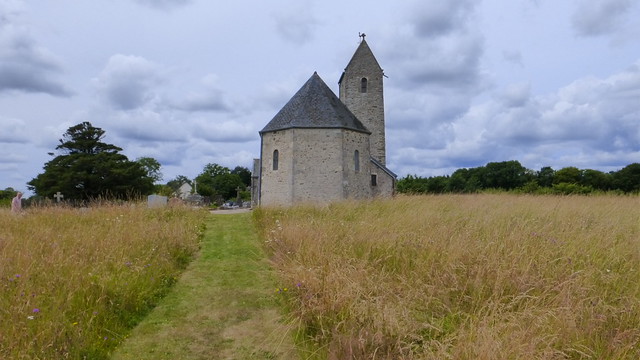
Published by The Baguette
-
in
Le Val de Saire
March 22 2013
5
22
/03
/March
/2013
09:35
There is a unique hiking path in Fermanville which follows the stream called le Poult. It winds its way through la vallée des moulins (valley of water mills) which got its name from the large number of mills that once lined the stream. Some of the old buildings have been restored and are used as private residences. The most unique part of the walk through the valley is the Fermanville viaduct. Spanning the valley with 20 arches at 242 meters long and 32 meters high, the viaduct was built between 1908 and 1911 for the rail line which ran between Barfleur and Cherbourg. During the Second World War it was sabotaged by the German army on June 21, 1944. It was restored in 1947 but was not used for much longer since the rail line between Cherbourg and Barfleur closed on September 30, 1950. The city has incorporated the restored viaduct into the public hiking path, PR48. If you follow the PR48 you will walk past this small chapel devoted to Notre-Dame des Champs (Our Lady of the Fields) which is no longer used and is slowly deteriorating. Near the parking lot is the church of Saint-Martin which dates as far back as the 13th century. The church has the distinction of being built in the form of a Greek cross with transepts of equal size. It is also quite unique in having no steeple or bell tower. In the middle of the 17th century it was decided to build a bell tower on the hillside behind the church instead since it was a lot cheaper than trying to build one into the existing structure. The chapel of the north transept is dedicated to Saint-Martin while the chapel of the south transept is dedicated to Notre-Dame de Lourdes. Most of the stained glass windows are from the early 20th century. Eight of them were installed after World War II. The light through the glass creates wonderful rainbow colors on the columns which separate the choir and the nave. Near the parking lot entrance is a memorial to local poet, Marie Ravenel which was inaugurated in 1905. The monument, conceived by architect Mesnage, was initiated by a society of poets from Cherbourg called la Violette manchoise who raised money for its construction. It is adorned with a bronze medallion depicting Marie Ravenel in traditional Norman dress.
Published by The Baguette
-
in
Le Val de Saire
March 14 2013
4
14
/03
/March
/2013
09:55
L'église Sainte-Vierge et Saint-Martin de Vrasville dates from the 12th or 13th century. Originally, it was a very small church (less than half of the current size) and lit by very small windows. During the Revolution, all of the liturgical furniture was sold to the highest bidder for the sum of 85 livres 17 sous 6 deniers. The sacristy was built around 1868. The bell tower of the church is quite unlike the typical Norman saddleback towers. It was in 1904 that a wooden structure was built above a niche where sits a statue of the Virgin. Inside the nave and choir are separated by a large arch. Many of the stained glass windows were realized by Gabriel Loire in 1953. The high altar and altarpiece were restored in 1980 and frame a central niche in which a statue of the Sacred Heart is placed. On either side are statues of St-Sébastien and Notre-Dame. The altarpiece, which dates from the 19th century is painted faux marble and gilded. Other statues that can be admired within the church are St-Joseph, the Holy Virgin, Ste-Thérèse de Lisieux, St-Sébastien, Ste-Catherine and Ste-Marie-Madeleine Postel.
Published by The Baguette
-
in
Le Val de Saire
March 11 2013
1
11
/03
/March
/2013
17:42
Continuing my story about Saturday afternoon in the Val de Saire, I also took the time to visit the 18th century Moulin de Marie Ravenel also called le Moulin de la Caudrairie in the village of Réthoville. The water mill is named after the poet Marie le Corps née Ravenel who lived here for 31 years. The mill was purchased by the community of St-Pierre-Eglise in 1999 and given a new lease on life with a complete restoration of the mill and all of its working components. It has two pairs of millstones which are in turn powered by a wheel fed by a mill race or “bief” behind the mill capable of holding over 500,000 litres of water. This weekend was supposed to be a special weekend for tourists who wished to see the mill in operation and a demonstration of how to make bread. Unfortunately, they were having some problems with the mill which meant that the bief was empty of water, the mill wheel was not turning and no one was making bread. Despite there not being any bread demonstration or an opportunity to see the functioning of the millstones, the 30 minute guided tour of the site proved to be quite educational. Our tour guide talked to us about the ancient craft of milling and the manufacturing process of flour. The wheel has a diameter of 3.20 meters and was remade in iroko, an African wood which is less susceptible to rot over time. Inside the mill is an exhibition of what a typical Norman home of the 18th century would have looked like. The roof has been perfectly restored and thatched with reeds just like the original roof from the 18th century and is expected to last at least 50 years. In 2010, the community constructed two new buildings on the site: a tutorial room to accommodate schools and a traditional bread oven. I was so pleased with my visit and I would definitely like to go back someday. More images can be found here. I took a short drive to Réthoville to see the church but it was closed. I was only able to get some photographs of the exterior. Situated on a small hill, l’église St-Martin de Réthoville is a granite building recognizable from afar by its square tower which used to be topped with a platform railing known as a balustrade. Unfortunately, in 1943, the German military used it as an observation post and fixed the railing inside a concrete framework which still exists today. On the outside one can see the remains of an archway which led to the north facing sacristy which was demolished during restorations in 1870.
Published by The Baguette
-
in
Le Val de Saire
March 10 2013
7
10
/03
/March
/2013
10:32
The forecast for Monday and Tuesday calls for snow, low temperatures and strong winds from the north. I'm certainly not looking forward to that since we've had such nice weather these last few days, especially on Saturday when the sun was out in full force. Fortunately, I took advantage of this and drive out to Cosqueville and some other small villages along the Val de Saire. I planned on having lunch at a very nice restaurant in town called Au Bouquet de Cosqueville but I wanted to explore a little bit before noon. The first place I visited was the local beach called “La plage du Vicq” which is a popular sunbathing spot for locals during the summer months. After that, I wandered down a small country road past small farms and gardens protected by hedgerows and wooden fences before reaching the parish church of Notre-Dame. Along the way I came across one of the fourteen communal wells which have been a part of Cosqueville’s cultural heritage for hundreds of years. These old wells are in fine working condition but are located on private property and not always easy to see from the public hiking paths. L’église de Cosqueville is under the patronage of Our Lady and St-Marcouf. The main portal is covered by porch which blocks three 12th century Romanesque openings, two of which are permanently sealed. The nave dates from the 12th century and is made up vaulted masonry and pointed arches which cross at intervals. On the left just before the main altar, on a marble slab, is a list of the successive priests of the parish. A strong wall with two pillars on the left and two sturdy columns to the right hold up the 15th century bell tower. The low, vaulted dome formation is now the choir where the main altar rests. Beyond the choir is an apse which was built in 1770. Here is the high altar, built by a carpenter from St-Pierre-Eglise to replace the original which was destroyed during the Revolution on March 23, 1794. Its four columns support a canopy which covers the altar, several statues, and other sacred objects. Placed above the altar are a statue of the Sacred Heart (1888) and two adoring angels. Aside from a stained glass window of Notre-Dame de Lourdes and another of Ste-Joan d’Arc, all other windows are 1970s. On the right side are two chapels. The first adjoins the tower and was originally dedicated to St-Fiacre but became the chapel of the Virgin Mary. It has a white, marble altar from the late 19th century. The other chapel was originally dedicated to Ste-Anne but became the chapel to St-Jean. To the right of the altar is an ancient plaque which was completely defaced during the Revolution. The most unique part of the church is the octagonal tower, quite rare in the Cotentin, with lancet windows. In 1770 a ring of five bells, perfectly tuned, were placed inside the tower but during the Revolution four of them were removed and taken to Cherbourg where they were melted down. I walked back the same way I had come and went to Au Bouquet de Cosqueville in le hameau Rémond for lunch. The service was exceptional and the atmosphere warm and relaxing. I would recommend this place to anyone since it is the classiest restaurant in the region between Cherbourg and Barfleur. Their seasonal menu can be found here. For starters, I had le gratin de moules et légumes safranés, then la fricassée de pintade while my friend had oysters and le pavé de lieu jaune rôti (grilled fish) with crème de lentilles vertes du Puy. For dessert, we both had the house specialty called le délice du bouquet which was a mix of caramelized apples served with an apple sorbet covered in caramel and crème chantilly. It was absolutely delicious !!! Hats off to the owners Luce et Stéphane Dieu for such a wonderful lunchtime experience.
Published by The Baguette
-
in
Le Val de Saire
January 27 2012
5
27
/01
/January
/2012
00:32
There are so many wonderful places to visit in our region that do not appear in most guidebooks. However, with a little bit of research, one can find the most extraordinary of buildings in some of the smallest of towns. Such is the case with Montfarville. While reading other blogs about La Manche, I came across several articles about the Montfarville Church of Notre Dame. If you are coming to Cherbourg to see the sites, this is one excursion outside of town that you simply should not miss. Montfarville is a charming village of about 800 people in the north-eastern part of the Cotentin. It is famous for its beautiful church interior which, in its present form, dates from 1763 – see the inscription engraved above the portal that reads : « 1763 Messire C.Caillet, curé de ce lieu a fait bâtir cette église à ses frais. Priez pour lui » (1763 C. Caillet, the pastor, had this church built at his own expense. Pray for him). It was built on the site of an earlier Gothic building of which only the 13th century Bell Chapel remains. The building was blessed on February 12, 1764. After his visit to the Sistine Chapel in Rome, the priest of Montfarville called upon a local artist Guillaume Fouace, born in nearby Réville, to paint the ceiling and arches of the church. The commission was carried out between 1879 and 1881. The church is also known for its exceptional artistic statues of several saints beginning with the 12th century Virgin and Child in painted stone. She is greatly revered by the local community as “Our Lady of Consolation.” Tradition has it that in 1793 the statue was buried not far from the shore at Keiry or Landemer to protect it during the French Revolution. Once things returned to normal, it was returned to the church and placed in Chapel of the Holy Virgin. Other statues of note are those of Ste-Anne, also in painted stone from the 16th century and an anonymous female saint of the 15th century in plain white stone. There are four large, carved wooden statues of St-Paul, St-Charles, St-Maur (St-Maurus) and St-John the Baptist as a young man. The latter is part of an ornate woodcarving used to cover to the baptismal font. The high altar is sumptuously carved, painted and gilded in the purest Louis XV style as are the Communion rail and the magnificent Rood Beam “perque” bearing a 17th century crucifix. Again, the most interesting parts of a visit to this church are the 19 different paintings by Guillaume Fouace. It took two years for Fouace to paint the canvases depicting the life of Christ and that of His mother, drawing upon Leonardo da Vinci and Murillo for inspiration. Many visitors consider The Magi to be the finest of the paintings. I must agree as it caught my eye immediately after I entered the side door. If one enters the church from the west door you will admire in succession on the organ side of the church the first of the paintings as well as the stained glass windows created in the early 1920s by master glass maker, Charles Lorin whose father Nicolas Lorin founded the famous glass works of Chartres in 1869. The first three paintings by Fouace are The Presentation of Mary in the Temple, The Annunciation, and The Visitation. Between each painting is a stained glass window. The first three are of St-John the Evangelist, Blessed Nicolas Cléret who was vicar of Montfarville for 25 years and was martyred in 1792 for refusing to take the constitutional oath at the start of the French Revolution, and finally, St-Mark the Evangelist. The next four paintings are The Nativity (above the organ), The Flight into Egypt, Joseph and Mary Finding Jesus in the Temple, and The Dormition of the Virgin. Within the southern transept is the organ as well as the stained glass window depicting St-Maur in the year 524 at age 12 with his father entrusting him to the care of St-Benedict who spread the Benedictine order throughout France. The next three stained glass windows depict St-Augustine of Hippo and his mother Ste-Monica, Ste-Elizabeth of Hungary, and St-Isidore the Laborer. Above the high altar dedicated to the Virgin is Fouace’s admirable reproduction of The Last Supper by Leonardo da Vinci. On either side of the altar are statues of St-Peter and St-Paul. The next two stained glass windows depict Jesus Welcomed by Mary and Martha in Bethany, and Jesus and the two disciples on the road to Emmaus. Along the northern arches are the paintings of Jesus’ Entry into Jerusalem, St-Peter Receiving the Keys to Heaven, and the Second Miraculous Draught of Fishes. Underneath the arches are the next three stained glass windows of St-Aloysius of Gonzaga receiving his First Communion at age 12 from St-Charles Borromeo, Archbishop of Milan, the window of Ste-Cecilia patroness of musicians, and the window depicting St-Paul’s Conversion to Christianity on the Road to Damascus. Above the Chapel to Our Lady of Consolation is the painting of Jesus Healing the Paralysed Man. Inside this chapel are several statues including the 12th century Virgin and Child, St-Marcouf, Ste-Anne, and the wooden baptismal sculpture of St-John the Baptist. The stained glass window here honors Our Lady of the Rosary and features St-Dominic and Ste-Catherine of Siena receiving the Rosary from the Blessed Virgin. The next sets of paintings along the aisle are of Jesus Healing the Blind Man from Birth, Jesus and the Samaritan Woman, and finally Christ’s Baptism. The last three windows depict St-Mark the Evangelist, St-Jean Eudes preaching in Montfarville in 1668, and finally the Evangelist, St-Matthew. Along the ceiling of the nave are four larger paintings of The Magi Following the Star, St-Joseph as Patron of the Universal Church, The Sermon on the Mount and The Ascension of Our Lord. All of the paintings are listed in the Inventory of Historical Monuments (IMH).
Published by The Baguette
-
in
Le Val de Saire
January 27 2012
5
27
/01
/January
/2012
00:13
After visiting the beautiful church in Montfarville, my friend and I ate lunch at Restaurant t'cheu Suzanne. It is a warm and comfortable place with several large dining areas complete with fireplaces and authentic Normandy charm. The hosts, Marianne and Serge Debrix were especially kind and waited on our every need. Serge realized right away that I was not French and tried his English with me. I was flattered but I told him that I needed to practice my French. Before the meal I had an apéritif of Kir Normand and a small plate of feuilletés aux saucisses. The restaurant is famous for its specialty of beech wood smoked salmon garnished with capers and candied onions prepared on the premises as an entrée. It was exceptional and I would recommend it to anyone ! My friend and I had different dishes for the main course—I had the ham while my friend ate skate, a type of ray fish. We washed it all down with a nice bottle of cider and finished the meal with a crème brûlée and a tarte aux pommes for dessert. Before leaving, I bought some postcards and promised Marianne and Serge that I would mention their restaurant in my blog. If you are interested in visiting them or you are planning a large gathering for a special occasion, please visit their website to see what they have to offer. You will not be disappointed.
Published by The Baguette
-
in
Le Val de Saire
January 27 2012
5
27
/01
/January
/2012
00:01
On the top of a small hill overlooking the château and the village of Réville is the church of Saint Martin. A tall bell tower of three floors stands on the north side of the church—its upper levels perforated on each side by twin bays topped by an oculus. It is crowned with a balustrade of corbels that supports the surrounding platform on which stands a tall spire with arrow slits from the 15th and 16th centuries. It is clearly inspired by the spire at Notre Dame de Carentan. The church consists of a nave from the 12th century and a choir of two bays, built in the 13th century without collateral damage to the interior. It was enlarged in the 15th century by the addition of an aisle to the south and another to the north during the modern era. Massive stones support the walls of the nave flanked by Romanesque columns. The capitals of the columns display a variety of motifs that are typical of the Cotentin region—personages of warriors, angels, bearded Vikings and monsters. The columns also offer support to the barrel vaulted ceiling in the shape of a ship’s hull now covered in wood panelling and entirely whitewashed. The nave and the choir are separated by an 18th century wooden arch called a “perque” with a 16th century Christ at the center. 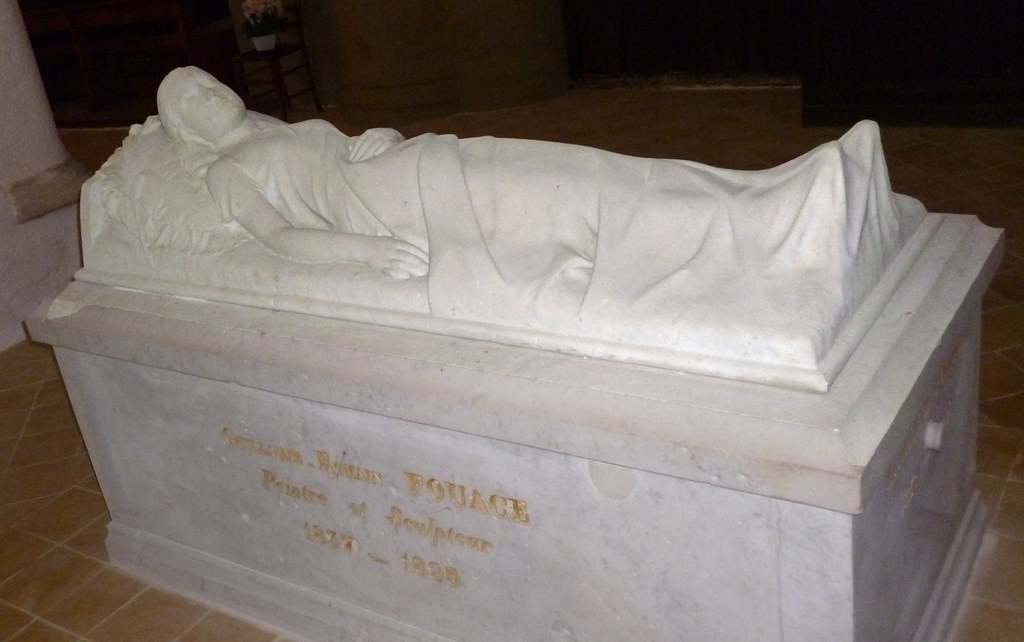 Within the St-Jacques Chapel is the marble tomb of Béatrix Fouace (1874 - 1888) created by Guillaume Fouace between 1888 and 1889. Fouace was an artist born and raised in Réville and is perhaps best known for his large 19 religious paintings that were commissioned for church in Montfarville. The altar of St-Jacques is made of wood and dates from the late 18th to mid-19th century. The faux red, green and gray marbling is quite realistic even from close up. From left to right are 19th century plaster statues of martyr St-Sébastien, in the center St-Jacques and to the right St-Benoît. The altar itself is adorned with six large candelabras and five small bronze reliquaries. At the center of the choir is the high altar dating from the mid-19th century. To the left and right are statues of St-Martin and of St-Michael defeating the dragon. The painting above the tabernacle shows the Ascension of Jesus. In the chapel dedicated to the Virgin is an enormous wood altar painted in trompe l'oeil. It features motifs of Christ’s Passion as well as eight exquisite round miniatures depicting episodes from His life and that of His mother. The statue on the left is of the Blessed Thomas Hélye from the 19th century, in the center is the Virgin with Child also from the 19th century and to the right a late-17th century wood statue of Saint Joseph. Hanging from the vaulting inside the chapel is a model of a ship called “Étoile de la Mer”. It is an “ex-voto” placed here by mariners expressing their gratitude for rescue from a shipwreck. Within the baptismal chapel are the limestone font, a statue to St-Eloi, and a painting from 1880 by Guillaume Fouace depicting a baptism at the church. Written in old French, one of the columns has a limestone epitaph from 1519 for an Olivier Roussel. Due to a restoration effort in 2009, the church is in excellent condition however, I personally don’t approve of the seemingly endless whitewashing of nearly every stone inside. It looks cheap and it takes away the unique history of natural stone masonry.
Within the St-Jacques Chapel is the marble tomb of Béatrix Fouace (1874 - 1888) created by Guillaume Fouace between 1888 and 1889. Fouace was an artist born and raised in Réville and is perhaps best known for his large 19 religious paintings that were commissioned for church in Montfarville. The altar of St-Jacques is made of wood and dates from the late 18th to mid-19th century. The faux red, green and gray marbling is quite realistic even from close up. From left to right are 19th century plaster statues of martyr St-Sébastien, in the center St-Jacques and to the right St-Benoît. The altar itself is adorned with six large candelabras and five small bronze reliquaries. At the center of the choir is the high altar dating from the mid-19th century. To the left and right are statues of St-Martin and of St-Michael defeating the dragon. The painting above the tabernacle shows the Ascension of Jesus. In the chapel dedicated to the Virgin is an enormous wood altar painted in trompe l'oeil. It features motifs of Christ’s Passion as well as eight exquisite round miniatures depicting episodes from His life and that of His mother. The statue on the left is of the Blessed Thomas Hélye from the 19th century, in the center is the Virgin with Child also from the 19th century and to the right a late-17th century wood statue of Saint Joseph. Hanging from the vaulting inside the chapel is a model of a ship called “Étoile de la Mer”. It is an “ex-voto” placed here by mariners expressing their gratitude for rescue from a shipwreck. Within the baptismal chapel are the limestone font, a statue to St-Eloi, and a painting from 1880 by Guillaume Fouace depicting a baptism at the church. Written in old French, one of the columns has a limestone epitaph from 1519 for an Olivier Roussel. Due to a restoration effort in 2009, the church is in excellent condition however, I personally don’t approve of the seemingly endless whitewashing of nearly every stone inside. It looks cheap and it takes away the unique history of natural stone masonry.
Published by The Baguette
-
in
Le Val de Saire
January 26 2012
4
26
/01
/January
/2012
00:01
Le Manoir de la Crasvillerie near Réville is a granite mansion dating from the late 15th to early 16th centuries. Its two octagonal towers and its mullioned windows guarded with iron bars gives it an aspect of being stern and contemptuous. It was built by François Le Clerc who made his reputation in the 16th century as a pirate for the king of France. He was better known by his nickname, “Jambe de bois” because one of his legs was made of wood. In English we would call him peg leg. It is said his ghost still haunts the lookout tower where he once watched the return of ships loaded with spices and precious treasures. He was knighted by François I. Today, the Crasvillerie is home to a center for artificial insemination of dairy cows.
Published by The Baguette
-
in
Le Val de Saire
January 25 2012
3
25
/01
/January
/2012
00:01
The present château was rebuilt in 1695 by Sir André Fouquet de Glatigny who bought the fief of Réville from Madeleine Quetil. The first floor is raised one level and is accessed by a double flight of stairs. The small attic windows are surmounted by two triangular pediments. The previous château on this site was looted and burned in 1591 during the Wars of Religion by François de la Cour. Its landlord, Christophe des Iles, was besieged and killed in 1594 by the son of François de la Cour in the fort at Tatihou which he commanded for the king. After the Wars of Religion, the medieval château was abandoned. The pavilion on the right was built in 1793. The château suffered during World War II. Its occupation by troops of French, Germans (Marshal Rommel slept here), British and Americans as well as five separate fires destroyed the wooden floors of the living room and dining room. These days, one can stay in the château out buildings now used as gîtes. In 1832, writer Pierre Le Fillastre collected stories from residents living in the Val de Saire and he left us this fanciful gem about a greedy monk. The story goes as follows: Once upon a time there was a monk who lived with his father at the château at Réville. Everyone knew this particular monk was greedy. One day, a farmer from the fief came to the château to pay his rent for the year of 500 to 600 francs to the father, lord of the fief. When the farmer arrived, he found that the father was not at home. He gave the money to his son, the greedy monk and made him promise to give it to the lord when he returned. Sadly, the bad monk hid the money and told his father that he never received it from the farmer. Later, in the presence of the father, the farmer asked the monk to swear to his honesty on the Holy Bible. The father even warned his son that swearing on the Bible was something to take very seriously—especially since he was a monk. Nevertheless, the monk swore to his father, the farmer and to God that he did not know anything about the money. Immediately, a demon from the sea appeared and took the lying monk to his death. No one is sure if the monk was drowned by the demon but one thing is for sure, his pleas for mercy and forgiveness can sometimes be heard by people passing by the sea. The frightening sounds remind them of what awaits them should they steal and then lie about it. I have several questions about this legend. For example, why was the monk living at home with his father and not in a monastery ? Why was he even ordained as a monk in the first place if he was known to be a liar and cheat ? Finally, if he was known to be a greedy and deceitful person, why would anyone give him money ? I guess we will never know all of the details.
Published by The Baguette
-
in
Le Val de Saire
 This small church is perched on a hill overlooking the Bay of Morsalines. The peace and quiet makes this a unique spot for meditation. The cemetery looks as grand as it is almost empty; but it is only an appearance. Indeed, it contains old graves from over fifteen centuries. One still finds from time to time Merovingian sarcophagi. This place of worship, one of the oldest of the Cotentin, was placed under the patronage of St-Anthony the Hermit, then later, Saint-Lubin de Chartres and now Notre Dame. The church was rebuilt in the 15th and 16th centuries. In the bell tower, one can see an arrow slit which probably dates from the 14th century. These embrasures enabled people taken refuge in churches to defend themselves against their aggressors. This was particularly common in villages that did not have a castle.
This small church is perched on a hill overlooking the Bay of Morsalines. The peace and quiet makes this a unique spot for meditation. The cemetery looks as grand as it is almost empty; but it is only an appearance. Indeed, it contains old graves from over fifteen centuries. One still finds from time to time Merovingian sarcophagi. This place of worship, one of the oldest of the Cotentin, was placed under the patronage of St-Anthony the Hermit, then later, Saint-Lubin de Chartres and now Notre Dame. The church was rebuilt in the 15th and 16th centuries. In the bell tower, one can see an arrow slit which probably dates from the 14th century. These embrasures enabled people taken refuge in churches to defend themselves against their aggressors. This was particularly common in villages that did not have a castle.  The observation of the exterior walls shows that the church originally included up to six side chapels which probably were funerary chapels. Three of these remain.
The observation of the exterior walls shows that the church originally included up to six side chapels which probably were funerary chapels. Three of these remain. 


 Two are located before the choir while the third one is just under the bell tower and no longer used.
Two are located before the choir while the third one is just under the bell tower and no longer used.  The crucifix, now hanging on the wall, was actually part of a rood beam that was once above the choir. It dates from the 15th century.
The crucifix, now hanging on the wall, was actually part of a rood beam that was once above the choir. It dates from the 15th century.  Like many other churches in the region, the baptismal font can be found in the western portion of the church--in this case, just near the main portal.
Like many other churches in the region, the baptismal font can be found in the western portion of the church--in this case, just near the main portal.  The high altar is really something to see. Although it isn't greatly ornamental, it has a charm all of its own with an oil painting depicting the Nativity just above the tabernacle.
The high altar is really something to see. Although it isn't greatly ornamental, it has a charm all of its own with an oil painting depicting the Nativity just above the tabernacle.  This stone statue of St-Anthony the Hermit is encased directly in the wall of the sanctuary along the north side of the church. Born in the middle of the 3rd century in Upper Egypt, he retired early to the desert where the devil tried several times and in different forms to tempt him away from his faith. Anthony resisted. Later, he welcomed disciples who wished to join him and live ascetic life in the desert. But the taste of solitude once more overtook him and he left his followers for another solitary life in the desert near the Red Sea where he lived until the age of 100. Over the centuries Anthony the Hermit has become a holy healer. He was invoked against the plague, leprosy, scabies and venereal diseases. His healing power also had an effect on animals, including pigs and horses. He is generally depicted as an old man wearing a frock with a cap bearing the Greek letter Tau and sometimes a bell. He is very often accompanied by a pig (an evil boar that he domesticated).
This stone statue of St-Anthony the Hermit is encased directly in the wall of the sanctuary along the north side of the church. Born in the middle of the 3rd century in Upper Egypt, he retired early to the desert where the devil tried several times and in different forms to tempt him away from his faith. Anthony resisted. Later, he welcomed disciples who wished to join him and live ascetic life in the desert. But the taste of solitude once more overtook him and he left his followers for another solitary life in the desert near the Red Sea where he lived until the age of 100. Over the centuries Anthony the Hermit has become a holy healer. He was invoked against the plague, leprosy, scabies and venereal diseases. His healing power also had an effect on animals, including pigs and horses. He is generally depicted as an old man wearing a frock with a cap bearing the Greek letter Tau and sometimes a bell. He is very often accompanied by a pig (an evil boar that he domesticated). 




